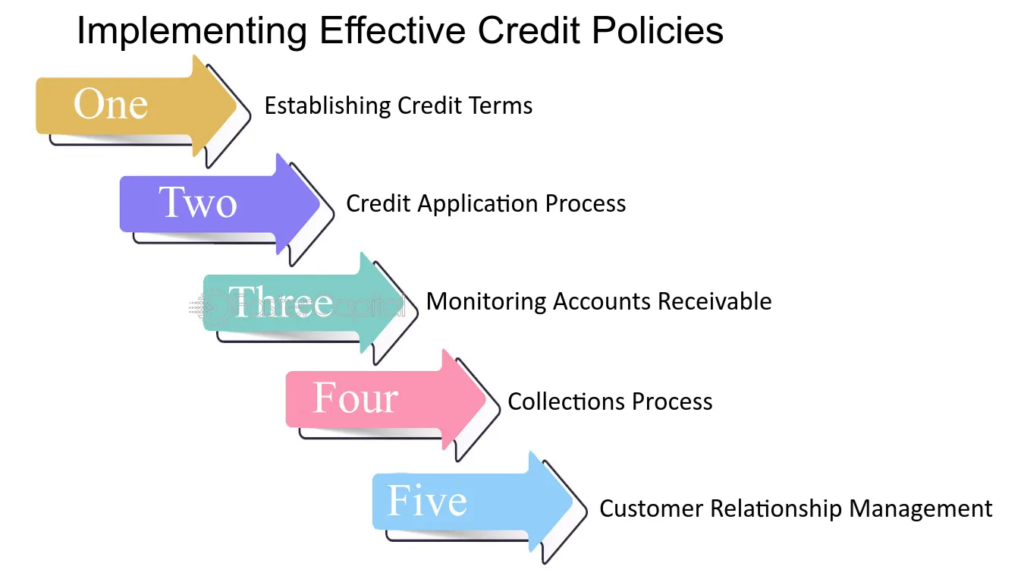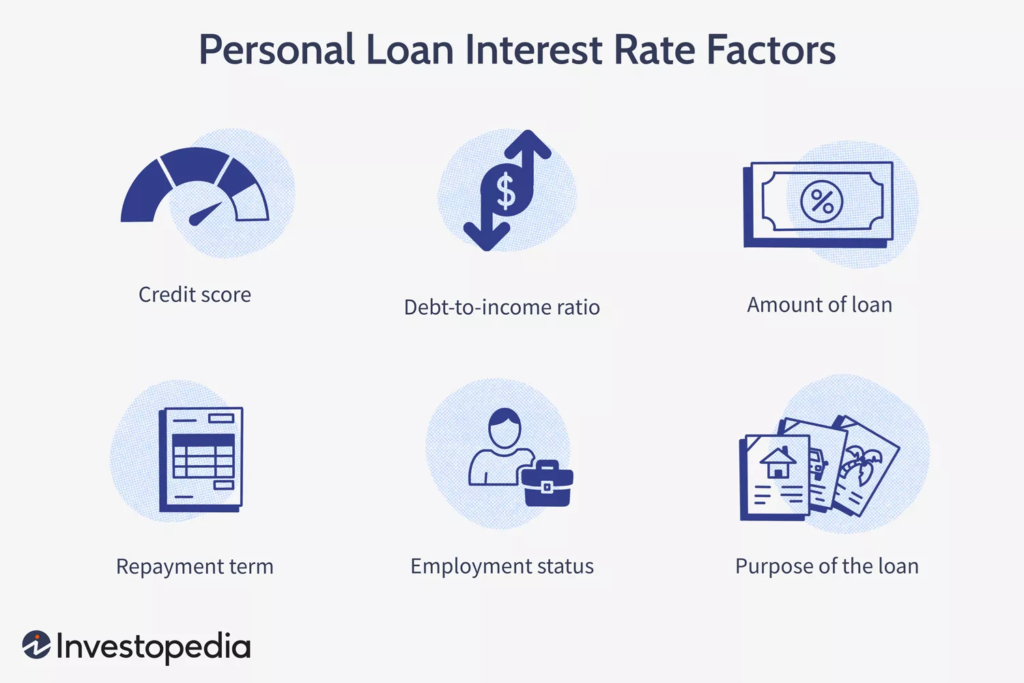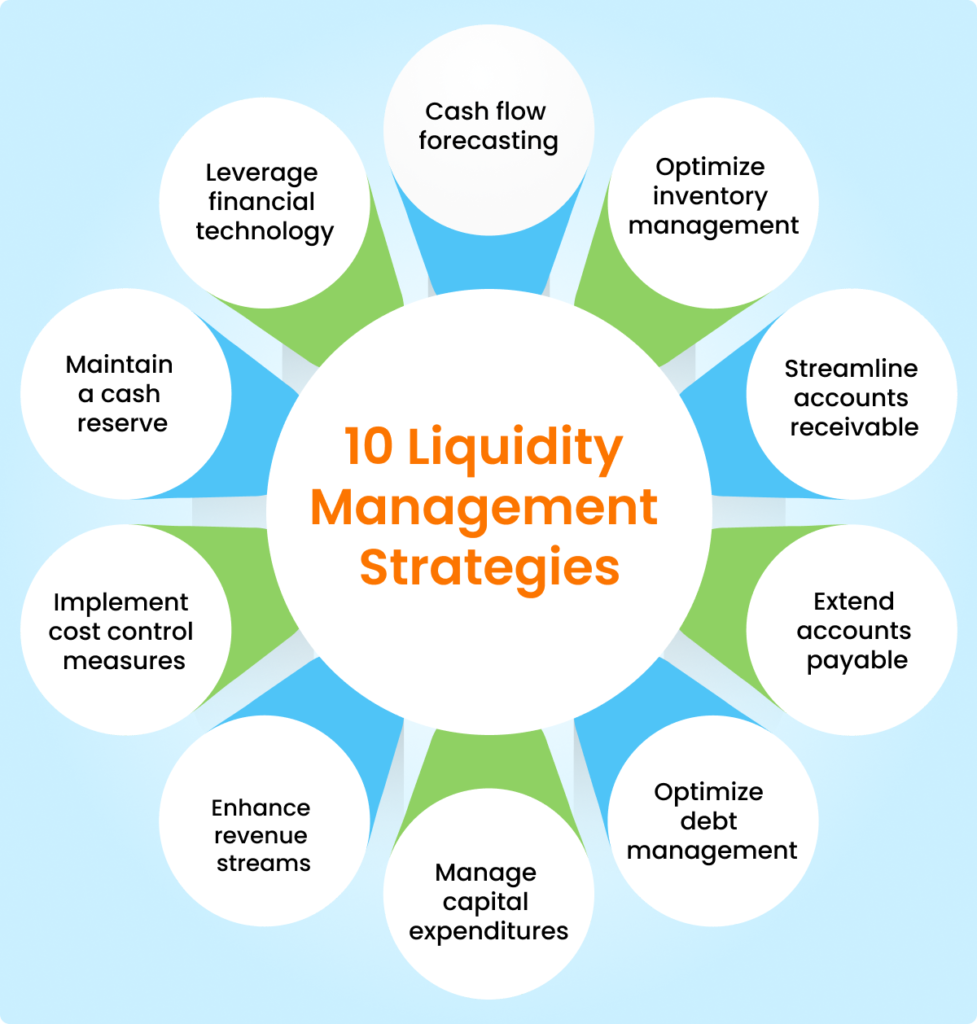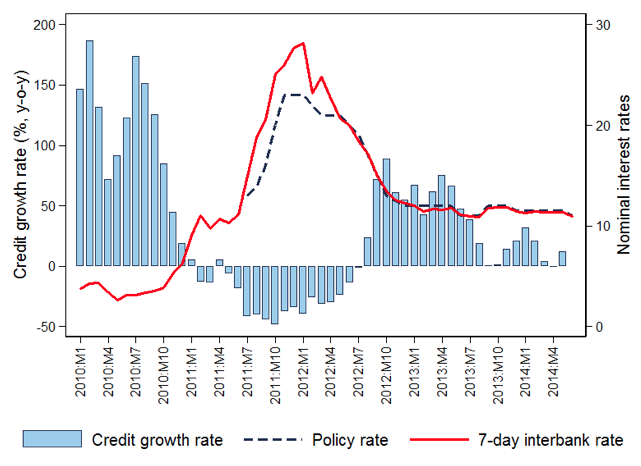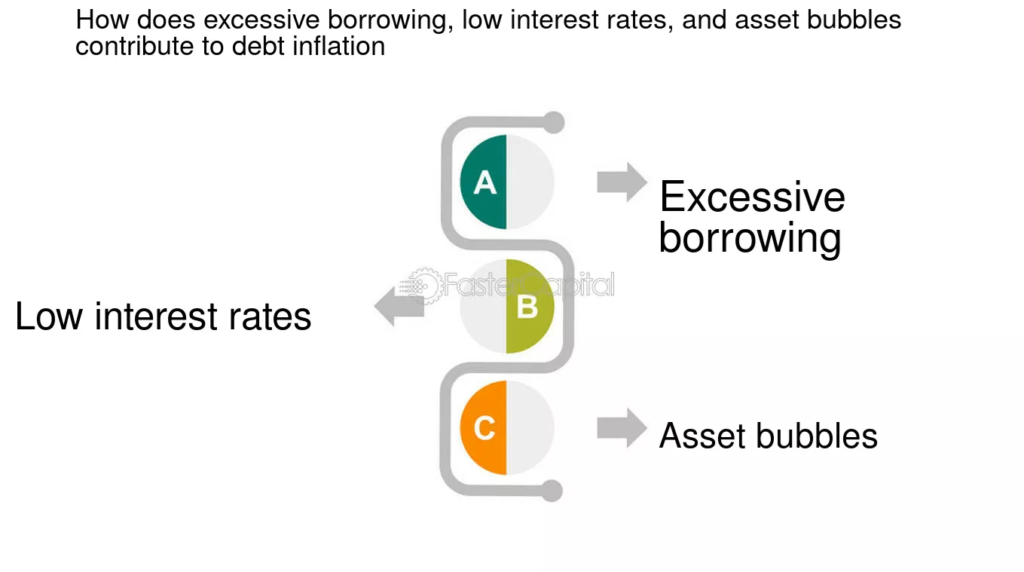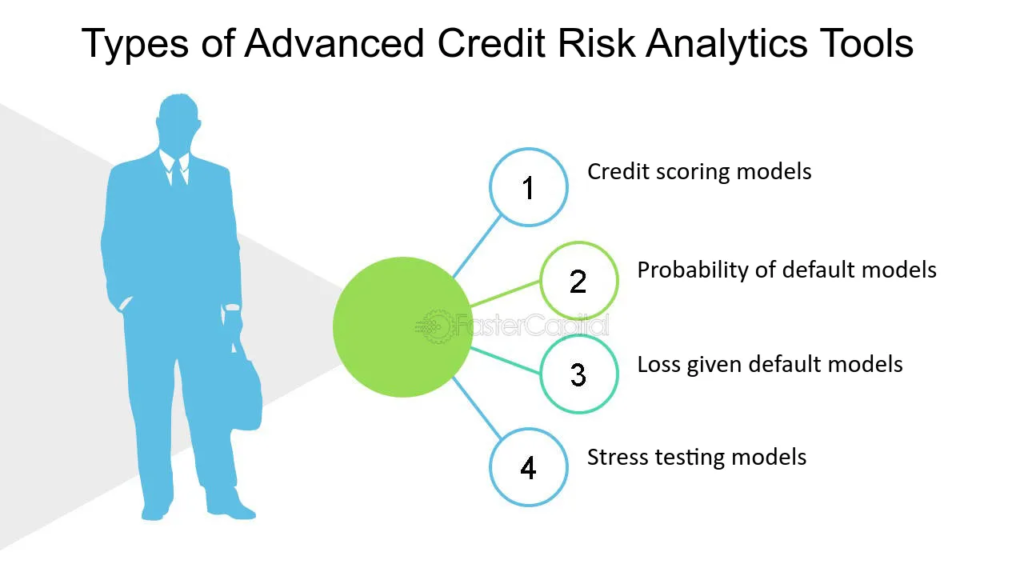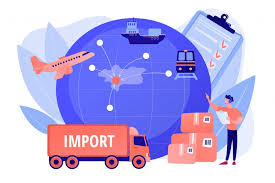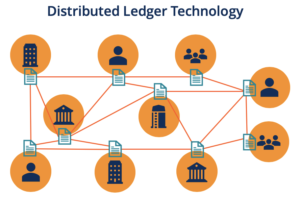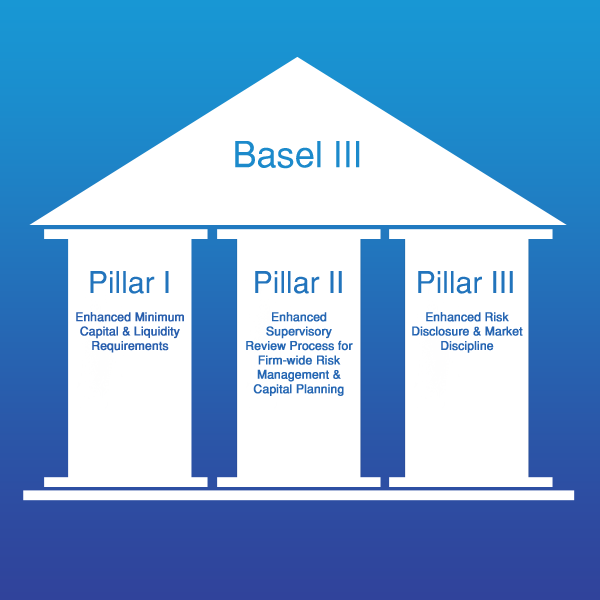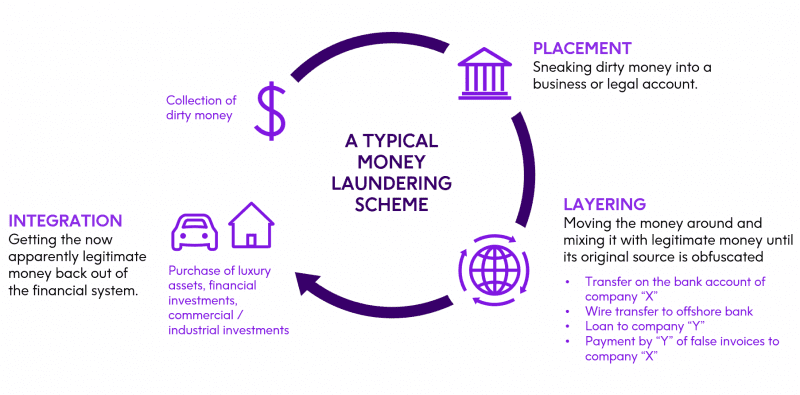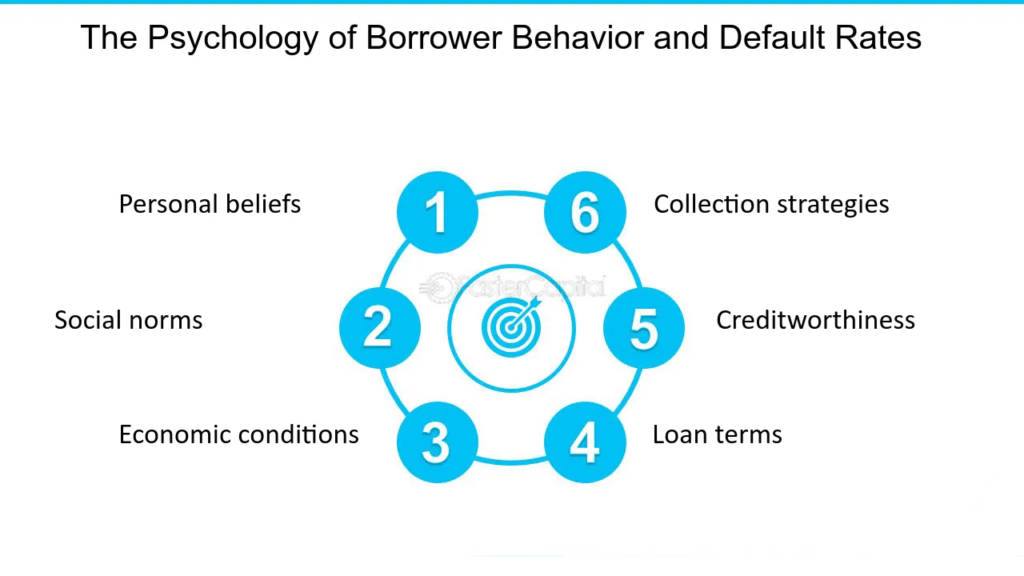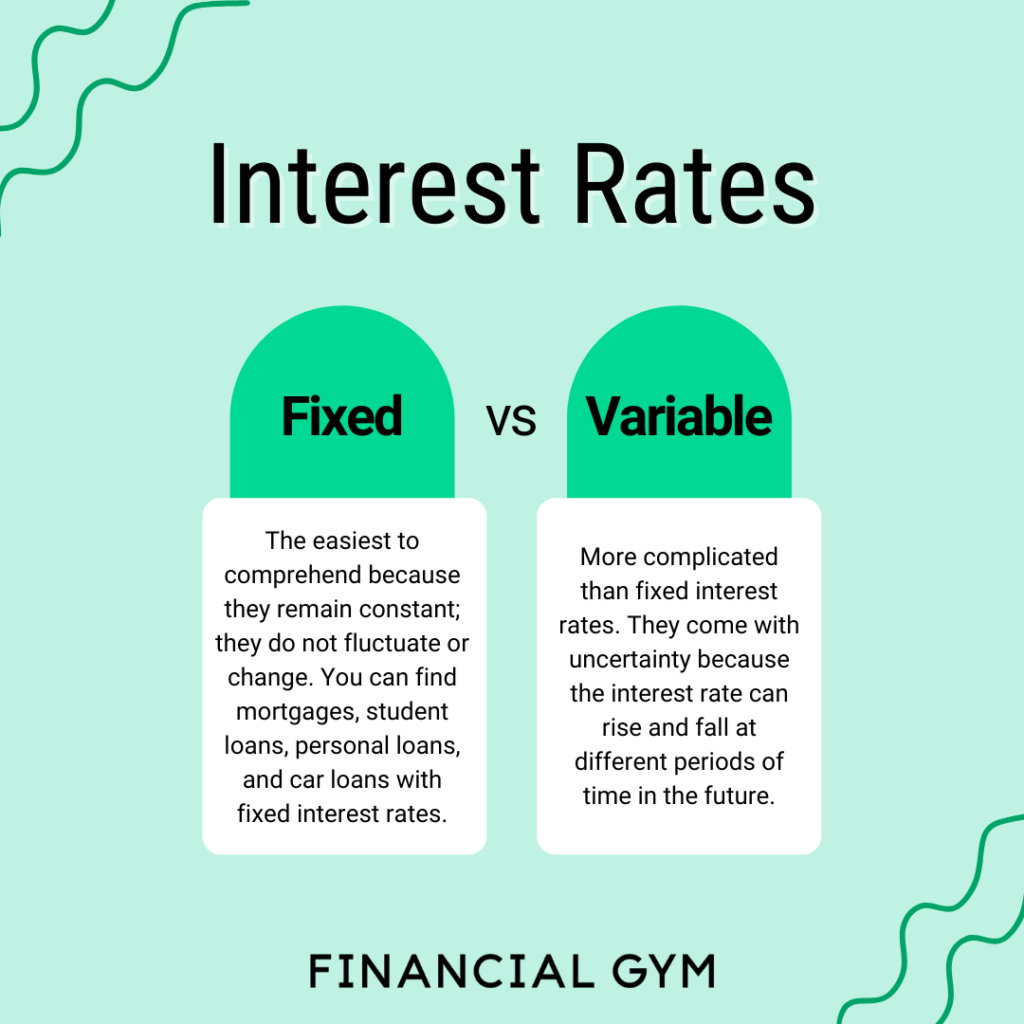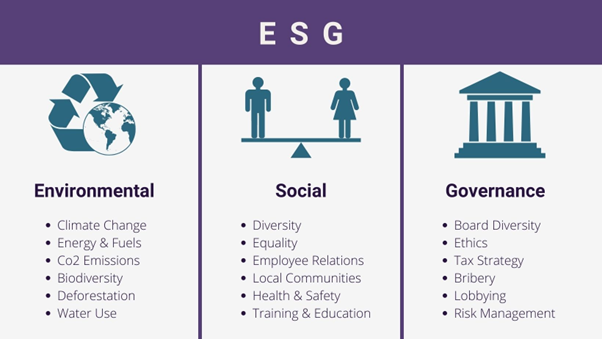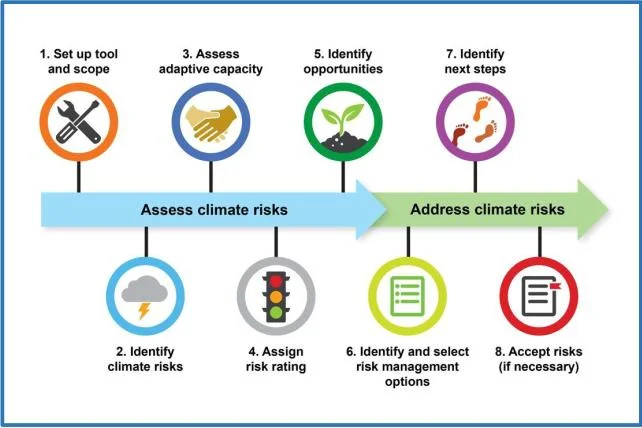Flow of Funds – Workshop 1 (Understanding Credit Policies)

The Appleton Greene Corporate Training Program (CTP) for Flow of Funds is provided by Ms. Grisby Certified Learning Provider (CLP). Program Specifications: Monthly cost USD$2,500.00; Monthly Workshops 6 hours; Monthly Support 4 hours; Program Duration 12 months; Program orders subject to ongoing availability.
If you would like to view the Client Information Hub (CIH) for this program, please Click Here
Learning Provider Profile

Ms. Grisby is dedicated to helping businesses optimize their financial and operational processes through innovative accounts receivable management solutions. Her company, specializes in providing a comprehensive range of services, including medical billing, corporate training, accounting, and consulting. These offerings are designed to empower organizations to achieve financial stability, reduce risk, and foster stronger customer relationships.
With over a decade of experience in commercial accounts receivable management, commercial credit management, process optimization, and SOP creation, Ms. Grisby brings a wealth of expertise to her work. Her proficiency lies in designing and implementing strategies that enhance cash flow, reduce outstanding debt, and ensure businesses maintain a healthy financial outlook.
A key strength of Ms. Grisby is her ability to collaborate with clients and tailor solutions to meet their unique needs. Whether developing customized training programs, improving financial reporting systems, or resolving complex billing issues, she consistently delivers measurable results. By combining industry best practices with innovative approaches, Ms. Grisby helps businesses streamline operations and achieve sustainable growth.
Ms. Grisby is an active member of the American Academy of Revenue Cycle Consultants (AARCC) and the National Association of Credit Managers, demonstrating her commitment to industry leadership and maintaining the highest standards of professionalism and integrity.
Her professional achievements include:
• Leading and managing high-performing teams to achieve organizational goals at a well-known medical device company.
• Designing and implementing process improvements that increase efficiency and reduce costs.
• Creating comprehensive SOPs to ensure consistency and compliance across operations.
• Developing financial reports that provide actionable insights for decision-making with a leading medical organization.
• Resolving complex accounts receivable and billing issues with innovative solutions for Fortune 500 companies.
• Driving successful KPIs that align with business objectives and enhance performance for leading organizations.
Ms. Grisby believes that effective cash flow management is the cornerstone of business success. She views each client partnership as an opportunity to make a meaningful impact, helping organizations unlock their full potential. Her company is not just a service provider but a strategic partner invested in client success.
Her commitment to continuous learning and innovation enables her to stay ahead in a constantly evolving industry. By adopting new technologies, refining her skills, and exploring forward-thinking solutions, Ms. Grisby consistently delivers exceptional outcomes.
Outside of her professional endeavors, Ms. Grisby actively networks with other professionals, attends industry events, and shares her expertise through workshops and training sessions. She thrives on connecting with like-minded individuals passionate about driving success and creating value.
Ms. Grisby is a results-driven leader dedicated to helping organizations streamline accounts receivable management, improve operational efficiency, and achieve financial excellence.
MOST Analysis
Mission Statement
A comprehensive understanding of a company’s credit policies and procedures is essential for effectively managing accounts receivable. Credit policies define the terms and conditions under which credit is extended to customers, helping to minimize financial risks while fostering strong customer relationships. Clear knowledge of these policies ensures consistency in decision-making, aids in evaluating creditworthiness, and facilitates timely collections. Adherence to established procedures also helps maintain cash flow stability and mitigate bad debt. By aligning credit management practices with company goals, managers can ensure efficient accounts receivable operations while supporting broader financial objectives.
Objectives
01. The Foundations of Credit Policies: departmental SWOT analysis; strategy research & development. Time Allocated: 1 Month
02. The Relationship Between Credit Policies and Economic Growth: departmental SWOT analysis; strategy research & development. Time Allocated: 1 Month
03. The Role of Credit Policies in Economic Stability: departmental SWOT analysis; strategy research & development. Time Allocated: 1 Month
04. Credit Risk Assessment and Management: departmental SWOT analysis; strategy research & development. Time Allocated: 1 Month
05. Globalization and Cross-Border Credit Policies: departmental SWOT analysis; strategy research & development. Time Allocated: 1 Month
06. Digital Transformation and Credit: departmental SWOT analysis; strategy research & development. Time Allocated: 1 Month
07. Regulation and Compliance in Credit Policies: departmental SWOT analysis; strategy research & development. 1 Month
08. Credit Policies During Economic Crises: departmental SWOT analysis; strategy research & development. Time Allocated: 1 Month
09. Consumer Credit Policies and Behavior: departmental SWOT analysis; strategy research & development. Time Allocated: 1 Month
10. Corporate Credit Policies and Investment: departmental SWOT analysis; strategy research & development. Time Allocated: 1 Month
11. Sustainable Credit Policies and ESG Goals: departmental SWOT analysis; strategy research & development. Time Allocated: 1 Month
12. Future Trends in Credit Policies: departmental SWOT analysis; strategy research & development. Time Allocated: 1 Month
Strategies
01. The Foundations of Credit Policies: Each individual department head to undertake departmental SWOT analysis; strategy research & development.
02. The Relationship Between Credit Policies and Economic Growth: Each individual department head to undertake departmental SWOT analysis; strategy research & development.
03. The Role of Credit Policies in Economic Stability: Each individual department head to undertake departmental SWOT analysis; strategy research & development.
04. Credit Risk Assessment and Management: Each individual department head to undertake departmental SWOT analysis; strategy research & development.
05. Globalization and Cross-Border Credit Policies: Each individual department head to undertake departmental SWOT analysis; strategy research & development.
06. Digital Transformation and Credit: Each individual department head to undertake departmental SWOT analysis; strategy research & development.
07. Regulation and Compliance in Credit Policies: Each individual department head to undertake departmental SWOT analysis; strategy research & development.
08. Credit Policies During Economic Crises: Each individual department head to undertake departmental SWOT analysis; strategy research & development.
09. Consumer Credit Policies and Behavior: Each individual department head to undertake departmental SWOT analysis; strategy research & development.
10. Corporate Credit Policies and Investment: Each individual department head to undertake departmental SWOT analysis; strategy research & development.
11. Sustainable Credit Policies and ESG Goals: Each individual department head to undertake departmental SWOT analysis; strategy research & development.
12. Future Trends in Credit Policies: Each individual department head to undertake departmental SWOT analysis; strategy research & development.
Tasks
01. Create a task on your calendar, to be completed within the next month, to analyze The Foundations of Credit Policies.
02. Create a task on your calendar, to be completed within the next month, to analyze The Relationship Between Credit Policies and Economic Growth.
03. Create a task on your calendar, to be completed within the next month, to analyze The Role of Credit Policies in Economic Stability.
04. Create a task on your calendar, to be completed within the next month, to analyze Credit Risk Assessment and Management.
05. Create a task on your calendar, to be completed within the next month, to analyze Globalization and Cross-Border Credit Policies.
06. Create a task on your calendar, to be completed within the next month, to analyze Digital Transformation and Credit.
07. Create a task on your calendar, to be completed within the next month, to analyze Regulation and Compliance in Credit Policies.
08. Create a task on your calendar, to be completed within the next month, to analyze Credit Policies During Economic Crises.
09. Create a task on your calendar, to be completed within the next month, to analyze Consumer Credit Policies and Behavior.
10. Create a task on your calendar, to be completed within the next month, to analyze Corporate Credit Policies and Investment.
11. Create a task on your calendar, to be completed within the next month, to analyze Sustainable Credit Policies and ESG Goals.
12. Create a task on your calendar, to be completed within the next month, to analyze Future Trends in Credit Policies.
Introduction
Managing accounts receivable is a critical function in any organization, as it directly impacts cash flow, financial stability, and overall operational success. At the heart of effective accounts receivable management lie the company’s credit policies and procedures. These foundational elements establish the terms under which credit is extended to customers, guiding organizations in balancing the need to drive sales with the imperative to minimize financial risks. By fostering clear and consistent practices, companies can protect themselves against the adverse effects of bad debts while simultaneously nurturing strong, trust-based customer relationships.
This introduction explores the importance of understanding and implementing credit policies and procedures, delving into their historical context, key components, and role in modern financial management. It highlights how these practices have evolved alongside business and economic changes, emphasizing their significance in ensuring sustainable growth and resilience.
Historical Evolution of Credit Policies
The concept of extending credit has existed for centuries, dating back to ancient trade practices when merchants granted credit to trusted customers to encourage trade. In the Roman Empire, credit arrangements were formalized through legal contracts, and similar systems emerged in medieval Europe, where merchants used credit to finance voyages or large-scale trades. These early systems relied heavily on trust and personal relationships, with little formal regulation.
The Industrial Revolution marked a turning point in the development of credit policies. As businesses grew larger and more complex, the volume and scale of credit transactions increased significantly. Manufacturers and wholesalers began extending credit to retailers to stimulate sales and secure market share. To manage these growing risks, companies started establishing standardized credit terms and conditions.
In the 20th century, the rise of corporate finance and banking systems brought further sophistication to credit management. Financial institutions developed frameworks for assessing creditworthiness, and businesses began employing dedicated credit managers to oversee receivables. Credit bureaus emerged to provide reliable credit information, further professionalizing the process. By the late 20th century, advancements in technology allowed for automated credit scoring, enabling more precise and data-driven decisions.
Today, credit policies and procedures are integral to a company’s financial strategy. They are designed not only to protect the business from losses but also to align with broader organizational goals, such as enhancing customer satisfaction and supporting long-term growth.

Case Study: The Evolution of Credit Policies in Retail: Walmart’s Practices
Walmart, a global retail leader, provides a compelling example of how credit policies have evolved to align with modern business strategies, enhance customer satisfaction, and maintain financial efficiency. From its early reliance on supplier trade credit to its current sophisticated credit systems, Walmart’s practices illustrate the transformation of credit management over time.
In its formative years, Walmart leveraged simple trade credit arrangements with suppliers, allowing deferred payments for inventory while maintaining cash flow for operations. This practice mirrored the industrial-era approach, where manufacturers and retailers used credit to facilitate sales and expand market reach. As Walmart grew into a retail giant, its credit policies became more structured and strategic, reflecting broader advancements in credit management.
Today, Walmart negotiates favorable credit terms with suppliers, often securing extended payment periods to optimize liquidity and operational efficiency. These arrangements underscore the role of credit policies in balancing immediate cash flow needs with long-term financial stability. On the customer side, Walmart offers branded credit products such as the Walmart Rewards Card and the Capital One Walmart Mastercard. These cards empower customers with purchasing flexibility and incentivize loyalty through rewards programs tied to in-store and online shopping.
Walmart’s customer credit options are supported by advanced data-driven processes. Creditworthiness assessments leverage partnerships with credit bureaus and automated systems, ensuring responsible lending practices. Competitive interest rates and flexible repayment terms make these credit products appealing to a diverse consumer base, aligning with Walmart’s goal of fostering customer loyalty.
The integration of technology into Walmart’s credit management practices further enhances efficiency. Automated systems streamline credit approvals and receivables management, reducing financial risk and operational complexity. Real-time credit scoring tools enable swift approvals while minimizing the potential for defaults, showcasing the company’s commitment to innovation and financial discipline.
Walmart’s credit policies also align with its broader strategic objectives, such as improving inventory turnover, enhancing customer loyalty, and maximizing cash flow. By balancing risk management with customer-focused initiatives, Walmart has created a credit framework that supports its global operations and long-term growth.
This case demonstrates how modern businesses, like Walmart, have transitioned from traditional credit practices to sophisticated, technology-driven systems that are integral to their financial strategy. These practices highlight the critical role of credit policies in maintaining financial stability, fostering loyalty, and driving sustainable business success.
Key Components of Credit Policies
A well-crafted credit policy outlines the principles and guidelines for extending credit to customers. While these policies vary across industries and organizations, they typically address several core areas:
1. Credit Terms: These define the payment conditions under which credit is extended, including payment due dates, discounts for early payments, and penalties for late payments. Clear and fair terms help set expectations for customers and reduce disputes.
2. Credit Limits: Establishing credit limits for individual customers or accounts is essential for managing risk. Limits are often based on the customer’s creditworthiness, financial health, and payment history.
3. Creditworthiness Assessment: Evaluating a customer’s ability and willingness to pay is a cornerstone of credit management. Companies use a mix of financial data, credit scores, trade references, and historical behavior to make informed decisions.
4. Collections Process: Effective procedures for collecting overdue payments are crucial to maintaining cash flow. Policies should specify the steps for follow-up, escalation, and potential legal action in case of non-payment.
5. Risk Mitigation Measures: This includes mechanisms like requiring deposits, securing guarantees, or purchasing credit insurance to protect against potential losses.
6. Compliance and Ethical Standards: Credit policies must comply with relevant laws and regulations, such as anti-discrimination laws and consumer protection statutes. They should also align with the company’s ethical values.
Benefits of Adhering to Credit Policies
Adhering to well-defined credit policies and procedures is not just a best practice; it is a cornerstone of sound financial management and operational efficiency. These policies serve as a blueprint for managing credit and collections effectively, enabling organizations to mitigate risks while supporting broader business objectives. The following are expanded benefits of adhering to credit policies:
Minimizing Financial Risk
Clear credit policies help safeguard a company’s financial health by reducing the risk of bad debts and payment defaults. By rigorously evaluating customers’ creditworthiness through a combination of financial analysis, credit scores, and historical payment data, businesses can make informed decisions about whom to extend credit to and under what terms. Additionally, credit policies often include safeguards such as setting credit limits, requiring collateral, or implementing payment milestones, which act as buffers against potential losses. This proactive approach not only prevents revenue leakage but also protects the company’s reputation and stakeholder confidence.
Ensuring Consistency
Inconsistent credit practices can lead to confusion, inefficiencies, and even disputes, both internally and with customers. Standardized credit policies and procedures ensure that all credit-related decisions are made uniformly across the organization. This consistency minimizes subjectivity and reduces the potential for favoritism, bias, or human error in the credit approval process. It also enables employees to act with confidence, knowing they are following a structured framework that aligns with the company’s risk appetite and business goals. Consistency fosters a professional and disciplined approach to credit management, which is essential for maintaining financial stability.
Enhancing Customer Relationships
Strong customer relationships are built on trust and transparency, and clear credit policies play a crucial role in establishing both. When customers understand the terms and conditions of credit upfront, it sets the stage for open and honest communication. Transparent credit practices convey professionalism and fairness, demonstrating that the company values its customers while maintaining its own financial discipline. Furthermore, adhering to credit policies ensures that customers are treated equitably, which can enhance loyalty and encourage repeat business. A customer who feels respected and trusted is more likely to prioritize payments and maintain a positive relationship with the company.
Supporting Cash Flow Stability
Cash flow is the lifeblood of any business, and effective credit management is a key driver of cash flow stability. Clear credit policies ensure that receivables are collected in a timely manner, providing the liquidity needed to meet operational expenses, invest in growth initiatives, and weather economic uncertainties. Policies that encourage prompt payments—such as offering discounts for early payment or enforcing penalties for late payments—help improve cash conversion cycles. Timely collections also reduce the need for external financing, which can be costly, and ensure that the company remains solvent even in challenging times.

Facilitating Strategic Alignment
Credit policies are most effective when they align with the company’s broader strategic objectives. For example, a business looking to expand its market share may choose to offer more flexible credit terms to attract new customers, while one focused on preserving cash flow may tighten credit limits. Well-defined policies provide a structured framework for balancing these priorities, ensuring that credit decisions support the organization’s overall goals. Strategic alignment also fosters better collaboration between departments, such as sales and finance, as both teams work toward common objectives guided by the credit policy.
Improving Operational Efficiency
By providing clear guidelines and procedures, credit policies streamline the credit approval and collections processes. Employees spend less time debating individual cases or resolving disputes, as decisions are guided by predefined criteria. Automation tools, which are often integrated with credit policies, can further enhance efficiency by automating credit checks, generating invoices, and tracking payments. This operational efficiency not only saves time and resources but also enables staff to focus on more strategic activities, such as identifying opportunities for customer growth or optimizing the credit-to-cash cycle.
Strengthening Governance and Compliance
Adhering to credit policies ensures that the organization remains compliant with applicable laws and regulations, such as anti-discrimination laws, fair credit practices, and industry-specific standards. This compliance reduces the risk of legal disputes and penalties, protecting the company from reputational damage. Additionally, strong governance practices demonstrate to investors, regulators, and other stakeholders that the organization is committed to ethical and responsible financial management.
Reducing Administrative Burden
Standardized policies reduce the administrative burden associated with managing accounts receivable by eliminating ambiguity in the credit approval and collections process. Employees no longer need to create ad hoc solutions for each situation, as the policy provides clear guidance on handling various scenarios, from approving credit applications to dealing with overdue accounts. This consistency simplifies training for new employees and reduces the time spent on repetitive administrative tasks.
Enabling Data-Driven Decision Making
Comprehensive credit policies often include mechanisms for tracking and analyzing credit performance metrics, such as average collection periods, delinquency rates, and bad debt ratios. These metrics provide valuable insights into customer behavior and the effectiveness of the company’s credit practices. By adhering to policies that incorporate regular monitoring and reporting, organizations can identify trends, adjust strategies, and make data-driven decisions that improve overall financial performance.
Promoting Long-Term Sustainability
Ultimately, adhering to credit policies contributes to the long-term sustainability of the organization. By protecting cash flow, minimizing risks, and fostering strong customer relationships, these policies create a stable financial foundation for future growth. Moreover, they ensure that the company can adapt to changing market conditions and economic challenges without compromising its financial health.
The benefits of adhering to well-defined credit policies and procedures extend far beyond risk mitigation. They provide a structured approach to managing accounts receivable, ensuring consistency, enhancing customer relationships, and supporting broader strategic objectives. By fostering cash flow stability, improving operational efficiency, and promoting compliance, these policies serve as a vital tool for achieving both short-term success and long-term sustainability. Businesses that invest in robust credit management practices position themselves not only to weather financial challenges but also to thrive in competitive and dynamic markets.
Modern Trends in Credit Policies and Procedures
The dynamic nature of today’s business landscape, marked by rapid technological advancements, shifting consumer behaviors, and increasing regulatory demands, has significantly transformed credit management. Modern credit policies and procedures have evolved to incorporate innovative tools and address emerging challenges, ensuring businesses remain competitive while aligning with broader economic and societal trends. These advancements have made credit management more efficient, accurate, and responsive to the needs of businesses and their customers.

One of the most impactful changes is the adoption of automated credit scoring systems powered by artificial intelligence (AI) and machine learning (ML). These systems can analyze vast datasets from diverse sources, such as transaction histories, market trends, and even social signals, to predict creditworthiness with remarkable precision. Unlike traditional methods that relied on limited data points, automated credit scoring offers dynamic models that adapt to evolving customer behaviors and economic conditions. This shift has enabled businesses to make more informed credit decisions, mitigating risks while identifying opportunities for growth.
Customer Relationship Management (CRM) systems have also become a cornerstone of modern credit management. By integrating credit policies with CRM platforms, organizations ensure seamless collaboration between sales, finance, and operations. These systems provide real-time insights into credit limits, payment histories, and customer behavior, allowing for more strategic decision-making. Automation within CRM tools further streamlines processes such as invoicing, payment tracking, and dispute resolution, enhancing efficiency and supporting broader organizational goals.
Another significant trend is the incorporation of environmental, social, and governance (ESG) considerations into credit policies. Businesses are increasingly aligning credit decisions with sustainability goals by prioritizing customers and partners who demonstrate ethical practices, environmental stewardship, and strong governance. For example, companies may offer preferential credit terms to partners with green certifications or sustainable operations. This integration of ESG factors not only supports long-term sustainability but also reinforces a commitment to responsible business practices, enhancing reputation and stakeholder trust.
The rise of digital payment ecosystems, including real-time payments and blockchain-based solutions, is reshaping how businesses approach credit management. Real-time payments allow instant fund transfers, reducing late payments and improving cash flow. Blockchain technology adds a layer of transparency and traceability to transactions, making it easier to monitor payment histories and assess creditworthiness. Meanwhile, the adoption of digital currencies presents both opportunities and challenges, requiring businesses to adapt their credit policies to address currency volatility and cross-border transactions.

Data security and privacy have also become central to credit management in the digital era. As organizations collect and analyze increasing amounts of data to evaluate creditworthiness, they must implement robust measures to protect sensitive customer information. Credit policies now include encryption standards, compliance with privacy regulations such as GDPR and CCPA, and transparent communication with customers about data usage. These measures not only safeguard information but also build trust and enhance the company’s reputation for ethical practices.
The use of AI and automation in collections processes is another game-changer in modern credit management. AI-driven tools can identify delinquent accounts early, recommend tailored follow-up actions, and automate communications with customers. Predictive analytics help businesses prioritize high-risk accounts and develop customized payment plans for customers facing financial difficulties. These innovations improve collection rates, reduce recovery times, and maintain positive customer relationships, striking a balance between financial goals and customer satisfaction.
Lastly, the ability to offer personalized credit solutions has become a competitive advantage. Leveraging data analytics, businesses can tailor credit terms and payment plans to individual customer needs. For example, dynamic credit terms that adjust based on purchasing patterns or personalized payment plans for customers experiencing financial challenges foster loyalty and trust. This level of customization not only enhances customer relationships but also ensures the company’s credit practices remain flexible and responsive to changing circumstances.
The trends shaping modern credit policies and procedures reflect the transformative impact of technology, sustainability, and changing market dynamics. From automated credit scoring and CRM integration to ESG considerations and the adoption of real-time payments, these developments are reshaping how organizations approach credit management. By embracing these innovations, businesses can enhance efficiency, reduce risks, and align their practices with financial and ethical objectives, ensuring long-term success in a rapidly evolving world.
Conclusion
A comprehensive understanding of credit policies and procedures is essential for managing accounts receivable effectively. From their historical roots in early trade to their modern iterations driven by technology and globalization, credit practices have evolved to meet the demands of an increasingly complex business environment. By adhering to well-defined policies, organizations can minimize financial risks, maintain stable cash flows, and build lasting customer relationships. In an era of rapid change, the ability to adapt and innovate in credit management is more critical than ever, ensuring that businesses remain resilient and competitive in the face of new challenges.
Executive Summary
Chapter 1: The Foundations of Credit Policies
Credit policies are fundamental to effective financial management, guiding how businesses extend, manage, and collect credit. These policies balance the need to drive growth through credit sales with minimizing financial risks. By clearly defining the criteria for evaluating creditworthiness, setting credit limits, and establishing terms and conditions, businesses can make informed decisions, maintain cash flow stability, and reduce the likelihood of bad debts.
Key Components of Credit Policies
1. Defining Creditworthiness:
Creditworthiness assesses a customer’s ability and willingness to meet financial obligations. This involves analyzing financial history, including payment records, outstanding debts, and financial ratios such as debt-to-income and liquidity. Credit scores from agencies provide a standardized measure of reliability, while trade references offer qualitative insights into payment practices. External factors, such as economic conditions and industry trends, also influence creditworthiness. Tools like AI-powered automated credit scoring systems and integrated data sources enhance the accuracy and efficiency of these evaluations. Continuous monitoring ensures that credit decisions remain aligned with evolving customer behavior and financial conditions.
2. Setting Credit Limits:
Credit limits define the maximum credit a business is willing to extend, balancing sales growth with risk management. Factors influencing credit limits include the customer’s financial health, transaction history, order size and frequency, and strategic business goals. Modern practices incorporate dynamic credit limits, which adjust based on real-time factors like payment behavior. Regular monitoring and automated systems ensure limits are revised appropriately, protecting businesses from overexposure while enabling flexibility in credit offerings.
3. Establishing Terms and Conditions:
Clear terms and conditions define the rules of credit agreements, ensuring transparency and enforceability. Key elements include payment terms (e.g., net 30), early payment discounts, penalties for late payments, credit application requirements, dispute resolution procedures, and default and recovery measures. Customization for different customer segments and the use of technology, such as automated invoicing and payment tracking, improve efficiency and compliance. Legal adherence ensures ethical practices and builds customer trust.
The three components—creditworthiness, credit limits, and terms and conditions—are interconnected, forming a cohesive framework for credit management. Thoughtfully designed and integrated, these policies enable businesses to minimize risks, protect cash flow, and align credit practices with strategic objectives, ensuring long-term growth and resilience in a competitive market.

Chapter 2: The Relationship Between Credit Policies and Economic Growth
Credit policies are fundamental to economic development, serving as a bridge between financial institutions and the broader economy. These policies define the terms under which credit is extended to individuals and businesses, directly influencing access to capital—a key driver of economic activity. By enabling investment, innovation, and consumer spending, well-designed credit policies stimulate growth, while poorly constructed or imbalanced policies can hinder it.
Capital Allocation
Credit policies shape how financial resources are distributed across industries, determining which sectors receive funding and driving economic growth. In real estate, accessible mortgages fuel housing construction and ownership, benefiting related industries. In manufacturing, favorable policies support investments in equipment and technology, enhancing productivity and competitiveness. The technology sector, reliant on risk-tolerant policies, thrives with access to venture capital for innovation and expansion. Targeted credit policies can also address regional disparities, promoting inclusive growth and balanced development.

Small Business Growth
Small and medium-sized enterprises (SMEs) depend heavily on accessible credit to overcome resource constraints, expand operations, and drive innovation. Favorable credit policies enable SMEs to invest in technology, workforce development, and market expansion, contributing to job creation and economic resilience. Conversely, restrictive credit policies can stifle entrepreneurship and limit the economic contributions of SMEs. Modern credit practices increasingly leverage technology, such as AI-driven credit scoring, to address challenges in assessing SME creditworthiness and managing risk.
Consumer Spending
Credit policies governing personal loans, mortgages, and credit cards significantly influence consumer spending, which accounts for a major share of economic demand. Accessible credit drives household consumption, benefiting industries like retail, real estate, and services. However, overly lenient policies risk excessive consumer debt, while restrictive ones suppress spending and slow growth.
Risks of Imbalance
Imbalanced credit policies—whether overly lenient or excessively restrictive—pose significant risks. Lenient policies can lead to economic bubbles and financial instability, while restrictive ones may cause credit crunches, suppressing investment and consumption. Balanced policies are crucial for fostering sustainable growth and managing economic risks.
Optimizing Credit Policies
To promote sustainable growth, credit policies should balance risk management with accessibility. Leveraging technology, promoting financial inclusion, and aligning with environmental, social, and governance (ESG) principles are key strategies for creating policies that support innovation, inclusion, and economic stability.
In conclusion, credit policies are vital tools for driving economic activity, and their thoughtful design ensures long-term prosperity and resilience.

Chapter 3: The Role of Credit Policies in Economic Stability
Credit policies are essential tools for maintaining economic stability by regulating credit flow, managing liquidity, promoting sustainable growth, and minimizing financial risks. Central banks, financial institutions, and policymakers utilize these policies to foster economic activity while ensuring financial discipline. Their effective implementation can help economies withstand shocks such as recessions, inflation, and financial crises.
Managing Liquidity
Credit policies play a vital role in liquidity management, ensuring a stable money supply that supports economic activity. Central banks regulate liquidity through tools such as interest rates, reserve requirements, and open market operations. By adjusting these tools, they influence borrowing and lending behaviors, either stimulating economic activity during downturns or curbing excessive borrowing during periods of expansion. Financial institutions complement these efforts by evaluating borrower creditworthiness and adjusting lending terms to balance credit availability and risk.
Promoting Sustainable Growth
Sustainable economic growth depends on credit policies that guide financial resources toward productive sectors while ensuring equitable access to credit. These policies support investments in manufacturing, technology, and infrastructure, fostering innovation and job creation. They also align with broader sustainability goals by incentivizing green investments and promoting financial inclusion for underserved populations. This ensures that economic growth is balanced, inclusive, and environmentally responsible.
Balancing Growth with Risk Management
Effective credit policies must balance fostering growth with mitigating risks. Overly lenient policies can lead to asset bubbles, excessive borrowing, and financial crises, while overly restrictive policies may stifle growth and innovation. Strategies such as rigorous risk assessments, encouraging responsible borrowing, and implementing dynamic policy adjustments enable policymakers to maintain this balance. By promoting financial literacy and leveraging advanced data analytics, these policies reduce default risks and ensure credit remains a tool for empowerment rather than instability.
Mitigating Risks
Credit policies help minimize risks associated with nonperforming loans (NPLs), speculative investments, and economic bubbles. Proactive measures like early detection of delinquent accounts, efficient debt resolution mechanisms, and technology-driven risk monitoring systems enhance resilience in the financial system. Dynamic credit policies that adapt to economic conditions ensure that credit flows remain aligned with evolving market realities.
In conclusion, credit policies are indispensable for promoting economic stability. By managing liquidity, fostering sustainable growth, balancing risks, and leveraging technology, they safeguard financial systems and support long-term economic resilience. These measures ensure that credit serves as a catalyst for development rather than a source of systemic vulnerabilities.

Chapter 4: Credit Risk Assessment and Management
Credit risk assessment and management are essential for maintaining financial stability and the sustainability of credit markets. Credit risk arises when borrowers fail to meet their financial obligations, posing potential losses for lenders. Effective credit risk management involves identifying, assessing, and mitigating risks to safeguard lenders’ financial health and ensure responsible borrowing practices.
Understanding Credit Risk
Credit risk manifests in various forms, including default risk (when borrowers fail to repay loans), concentration risk (excessive exposure to a single borrower or sector), and systemic risk (credit issues spreading across the financial system). Factors like borrower behavior, economic conditions, and market trends significantly influence credit risk, necessitating regular monitoring and analysis.

Credit Risk Assessment Tools
Traditional tools like credit scoring and financial ratio analysis evaluate borrowers’ creditworthiness based on factors like payment history, debt-to-income ratios, and liquidity. Advanced technologies, such as AI and machine learning, enhance risk assessments by analyzing vast datasets and identifying patterns that traditional methods might miss. The integration of alternative data, such as utility payments and mobile transactions, expands access to credit for underserved populations, improving inclusivity and decision-making accuracy.
Mitigating Credit Risk
Lenders employ various strategies to mitigate credit risk:
1. Diversification: Spreading credit exposure across borrowers, industries, and regions minimizes the impact of localized downturns or defaults.
2. Collateral Requirements: Securing loans with assets like real estate or inventory provides a safety net for lenders in case of default. Loan-to-value (LTV) ratios and ongoing collateral monitoring ensure adequate coverage.
3. Loan Covenants: Contractual agreements impose financial discipline on borrowers, such as maintaining liquidity or limiting additional debt.
4. Stress Testing and Scenario Analysis: These tools simulate adverse economic scenarios, such as recessions, to evaluate portfolio resilience and guide proactive measures like tightening lending standards or diversifying portfolios.
Role of Technology in Risk Mitigation
Technological advancements, including AI, blockchain, and real-time monitoring systems, enhance credit risk management by providing precise, scalable, and transparent assessments. These tools enable early detection of potential defaults and improve overall risk mitigation.
In conclusion, robust credit risk assessment and management are essential for protecting lenders, fostering responsible borrowing, and ensuring financial system stability. By employing diverse strategies and leveraging technology, lenders can minimize risks, maintain operational resilience, and support sustainable economic growth.

Chapter 5: Globalization and Cross-Border Credit Policies
Globalization has redefined the global financial landscape, creating complex networks of international trade and cross-border financial flows. These interconnected systems influence credit policies, requiring adaptation to manage risks like currency fluctuations, regulatory divergences, and geopolitical uncertainties. At the same time, globalization provides opportunities to diversify credit portfolios, foster innovation, and enable financial inclusion.
International trade is a major driver of cross-border credit policies, shaping how credit is extended and managed. Trade agreements lower barriers to commerce, facilitating instruments like letters of credit and trade insurance, which reduce payment risks. Regional trade blocs, such as the EU and NAFTA, enhance financial integration through common credit standards. Export credit agencies further support international trade by mitigating risks for exporters.
Financial globalization has expanded credit access by enabling institutions to lend beyond domestic markets, fostering competition that reduces interest rates. However, it introduces challenges like currency risks, which require hedging strategies, and susceptibility to global economic shocks, as seen during the 2008 financial crisis. These dynamics demand robust risk management in cross-border credit.
Trade imbalances significantly affect credit risk. Surplus economies like China and Germany extend credit to deficit nations, promoting liquidity but increasing exposure to high-debt markets. Conversely, deficit economies face higher borrowing risks. Policymakers often respond with measures such as tariffs or currency devaluations, influencing creditworthiness and repayment dynamics.
The rise of global supply chains adds complexity to credit policies, necessitating extended credit terms and tailored risk strategies. Multijurisdictional operations introduce risks such as legal disputes and geopolitical instability. Innovations like supplier financing and blockchain technology improve transparency, streamline processes, and mitigate these risks.
International organizations like the IMF and Basel Committee work to harmonize credit regulations, fostering stability and reducing systemic risks. However, regulatory divergence persists due to differences in national priorities, creating inconsistencies that complicate cross-border credit.
Technologies like blockchain, AI, and digital platforms enhance transparency, reduce costs, and streamline international lending processes. These tools empower financial institutions to manage risks effectively while fostering inclusion.
Globalization has transformed credit policies, balancing growth opportunities with the imperative to manage risks. Continued collaboration, innovation, and adaptive strategies are essential to sustaining global financial stability.

Chapter 6: Digital Transformation and Credit
Digital transformation has revolutionized credit management through technologies such as digital payment systems, artificial intelligence (AI), and blockchain. These advancements enhance efficiency, transparency, and inclusivity while addressing challenges in traditional credit processes. By streamlining operations and expanding credit access to underserved populations, digital innovations are reshaping the financial ecosystem.
Digital payment systems facilitate real-time transactions, improving credit repayment processes and reducing defaults. Borrowers can automate recurring payments, ensuring timely repayments while minimizing administrative burdens for lenders. These systems provide real-time updates, increasing transparency and reducing errors or disputes. Additionally, predictive analytics embedded in payment platforms helps identify borrowers at risk of default, allowing lenders to offer preemptive interventions. For lenders, accelerated fund flows improve liquidity, enabling efficient loan disbursement and reinvestment.
AI, powered by machine learning (ML) and predictive analytics, has transformed credit scoring and risk assessment. Traditional models often exclude underserved populations due to limited data. AI-driven systems address this by analyzing diverse data sources, such as utility payments and transaction histories, to evaluate creditworthiness. These tools improve risk management by identifying potential defaults early, enabling lenders to adjust terms or offer financial counseling. AI’s efficiency also reduces operational costs, enhances fraud detection, and allows for highly customized credit solutions.

Blockchain technology introduces transparency and trust through its secure, decentralized ledger system. It eliminates intermediaries by providing tamper-proof transaction records accessible to all parties. Smart contracts, integrated with blockchain, automate credit agreements by executing predefined terms automatically, such as loan disbursements or penalties for missed payments. These innovations streamline credit processes, reduce inefficiencies, and lower costs, particularly in cross-border lending. Blockchain also improves collateral management by enabling swift asset transfers in case of defaults.
Despite its benefits, digital transformation presents challenges such as cybersecurity threats, data privacy concerns, and regulatory uncertainties. AI systems must address issues like algorithmic bias and overreliance on automation, while blockchain faces scalability and regulatory barriers. Collaboration among financial institutions, technology providers, and regulators is critical to overcoming these hurdles.
Digital transformation has redefined credit management, offering faster, more accurate, and inclusive solutions. As these technologies evolve, they promise to further enhance credit policies and risk management, fostering a more efficient and equitable financial ecosystem.

Chapter 7: Regulation and Compliance in Credit Policies
Regulation and compliance are foundational elements of credit policy frameworks, ensuring stability, transparency, and trust in financial systems. By establishing guidelines and monitoring adherence, these mechanisms protect stakeholders, mitigate systemic risks, and uphold ethical practices in lending and credit management. They play a pivotal role in maintaining financial stability and fostering economic resilience.
Frameworks like Basel III shape credit policies by setting standards for capital adequacy, liquidity management, and risk assessment. For example, Basel III introduced measures such as the liquidity coverage ratio (LCR) and net stable funding ratio (NSFR) to ensure financial institutions can withstand economic shocks. These regulations promote prudent lending practices, mitigate overleveraging, and enhance the resilience of financial systems, reducing the likelihood of crises.
Compliance involves adhering to critical areas such as anti-money laundering (AML), know-your-customer (KYC), and data protection laws. AML regulations combat financial crimes by requiring institutions to monitor transactions and report suspicious activities, while KYC ensures the transparency and legitimacy of client identities. Data protection laws, like GDPR, safeguard customer information, enhancing trust and minimizing reputational risks for financial institutions.
Regulation and compliance foster trust through transparent and fair credit practices. By mandating clear disclosures of credit terms and ensuring non-discriminatory access to credit, they promote equity and customer confidence. Compliance with data privacy laws further strengthens this trust, assuring customers that their sensitive information is secure.
These frameworks also contribute to economic resilience by addressing systemic risks. Measures such as capital adequacy requirements and stress testing ensure financial institutions maintain sufficient buffers to navigate economic downturns. Additionally, regulations targeting financial crimes protect the integrity of markets, safeguarding them from destabilizing activities like money laundering or fraud.
As globalization, digitization, and economic shifts redefine financial systems, regulation and compliance must evolve. Institutions and regulators face challenges such as navigating complex international regulations, leveraging advanced technologies for compliance, and addressing emerging risks like cybersecurity threats. Collaborative efforts between financial institutions, regulators, and technology providers will be critical for maintaining robust and adaptive regulatory frameworks.
In summary, regulation and compliance are essential for maintaining trust, stability, and ethical practices in credit systems. They ensure financial institutions operate responsibly, support economic growth, and contribute to the long-term sustainability of global financial ecosystems.

Chapter 8: Credit Policies During Economic Crises
Economic crises, such as the 2008 global financial crisis and the COVID-19 pandemic, highlight the critical role of credit policies in stabilizing economies, supporting businesses, and fostering recovery. These policies, implemented by governments, central banks, and financial institutions, address liquidity challenges, prevent defaults, and mitigate systemic risks during financial downturns.
The 2008 global financial crisis was a turning point for credit policies, exposing vulnerabilities in risk management and regulatory oversight. Rooted in credit mismanagement, excessive subprime lending, and the overuse of complex financial instruments, the crisis led to widespread defaults and systemic instability. In response, policymakers implemented measures like the Troubled Asset Relief Program (TARP), quantitative easing, and bank bailouts to restore liquidity, stabilize credit markets, and prevent financial collapse. The crisis underscored the importance of robust credit risk assessments, enhanced regulatory frameworks, and systemic stability measures to mitigate future risks.

Similarly, the COVID-19 pandemic prompted swift and unprecedented credit policy interventions to address economic disruptions. Measures included loan moratoriums, targeted credit programs, and government-backed schemes to support businesses and households. For example, the U.S. Paycheck Protection Program (PPP) provided forgivable loans to small businesses, while central banks worldwide implemented interest rate cuts and asset purchase programs to maintain liquidity. These interventions prevented widespread defaults, stabilized credit markets, and supported vulnerable sectors, such as healthcare and retail. However, challenges like unequal access to funding and administrative bottlenecks highlighted the need for better-targeted and efficiently implemented credit policies.
Small and medium enterprises (SMEs) were particularly reliant on emergency credit policies during these crises. Credit guarantees and relief programs provided essential liquidity, helping SMEs maintain operations and retain employees. However, barriers such as complex application processes, unequal access in underserved areas, and risk aversion among lenders limited the reach of these measures. Addressing these challenges through streamlined processes, broader outreach, and post-crisis support is essential for ensuring long-term SME resilience and growth.
Both crises emphasized the importance of proactive and adaptive credit policies in managing systemic risks and fostering recovery. They highlighted the need for collaboration among governments, financial institutions, and central banks to implement effective interventions. Moving forward, lessons from these events can guide the development of resilient credit systems that balance immediate relief with long-term economic stability.

Chapter 9: Consumer Credit Policies and Behavior
Consumer credit policies play a pivotal role in shaping individual financial behavior and economic stability. These policies, governed by financial institutions and regulatory frameworks, define how consumers access credit, the costs associated with borrowing, and the repayment terms. Key components include credit scores, interest rates, and lending terms, which collectively influence borrowing decisions and financial well-being.
Credit Scores are fundamental to consumer lending, serving as a measure of creditworthiness. Derived from credit reports, scores assess factors like payment history, credit utilization, and credit mix. A high credit score increases access to loans, lowers interest rates, and enhances borrowing limits, while a low score may lead to higher costs and stricter terms. Credit scores incentivize financial discipline by rewarding timely payments and responsible credit use.
Interest Rates represent the cost of borrowing and significantly impact consumer decisions. Determined by macroeconomic factors, such as central bank policies and inflation, as well as borrower-specific characteristics like credit scores, interest rates influence the affordability of loans. Consumers often choose between fixed rates, which provide stability, and variable rates, which offer flexibility but come with potential risks tied to market fluctuations.
Lending Terms and Conditions outline the repayment framework for borrowed funds. These include repayment schedules, grace periods, and penalties, tailored to individual financial profiles. Flexible terms, such as graduated payments or deferred repayment plans, accommodate diverse borrower needs, while penalties discourage delinquency. Effective lending terms strike a balance between affordability for consumers and risk management for lenders.
Consumer credit policies shape borrowing behavior, encouraging responsible financial practices through incentives and disincentives. They also affect broader economic trends, influencing consumer spending, saving habits, and overall financial inclusion. However, challenges like systemic inequalities in access to credit and the risk of predatory practices necessitate robust oversight and transparent processes.
In conclusion, consumer credit policies are instrumental in fostering financial stability and inclusivity. By balancing borrower needs with lender interests, these policies enable sustainable credit ecosystems, support economic growth, and promote responsible financial behavior among consumers.

Chapter 10: Corporate Credit Policies and Investment
The integration of corporate credit policies into a business’s financial strategy is instrumental in determining its ability to borrow, invest, and grow. These policies establish the framework for borrowing, influencing terms such as credit limits, interest rates, collateral requirements, and repayment schedules. By setting these parameters, credit policies shape how businesses allocate financial resources and plan for strategic investments, fostering long-term stability and growth.
Key components of corporate credit policies—such as risk assessment criteria, credit ratings, and repayment terms—are crucial for evaluating a company’s financial health and creditworthiness. These elements not only guide internal financial decisions but also affect external perceptions, as lenders, investors, and alternative financiers assess businesses based on these frameworks. As a result, robust credit policies enable businesses to secure favorable borrowing terms, fund innovation, and maintain financial resilience.

The influence of credit policies extends to borrowing decisions, impacting how and where companies secure funding. Traditional financial institutions and bond markets evaluate borrowers based on established credit policies, determining their access to capital and the cost of debt. In parallel, the rise of alternative lenders offers businesses additional financing options, particularly for those with non-traditional credit needs. Balancing these opportunities requires companies to weigh the advantages of leveraging debt against potential risks, ensuring financial stability while pursuing strategic objectives.
Investment strategies are also heavily shaped by corporate credit policies, as these frameworks determine the availability and cost of capital for R&D, infrastructure development, and market expansion. Favorable credit conditions allow businesses to undertake large-scale projects and innovate, while restrictive policies may constrain their ability to allocate capital effectively. The alignment of credit policies with strategic goals is crucial for optimizing resource allocation and achieving sustainable growth.
This discussion explores the role of corporate credit policies in borrowing and investment decisions, highlighting their impact on financial stability, strategic planning, and market competitiveness. It underscores the importance of adaptive and well-designed credit policies in navigating economic challenges and unlocking growth potential.

Chapter 11: Sustainable Credit Policies and ESG Goals
The global financial landscape is transforming as credit policies increasingly align with Environmental, Social, and Governance (ESG) goals. This shift emphasizes the role of the financial sector in promoting sustainable development, addressing climate change, and fostering responsible lending practices. By integrating ESG criteria, financial institutions are incentivizing businesses to adopt sustainable practices while mitigating long-term risks associated with environmental degradation, social inequality, and governance shortcomings.
Integration of ESG Criteria
ESG factors are reshaping traditional credit assessments by broadening evaluations to include environmental impact, social responsibility, and governance structures. Companies demonstrating strong ESG performance benefit from favorable loan terms and expanded credit access. Instruments such as sustainability-linked loans (SLLs) and green loans are tailored to align financial incentives with sustainability targets, encouraging businesses to meet environmental and social benchmarks.
Incorporating ESG criteria also enhances risk management. Businesses failing to address ESG issues face growing risks, including regulatory penalties, reputational damage, and operational disruptions. Lenders mitigate exposure to these risks by evaluating factors such as a borrower’s carbon footprint, labor practices, and governance structures. This proactive approach strengthens portfolio resilience and aligns with long-term financial stability goals.
Green Bonds and Sustainability-Linked Loans
Green bonds and SLLs are innovative financial tools that drive investment in sustainable projects. Green bonds fund initiatives like renewable energy and conservation, while SLLs incentivize borrowers to achieve ESG performance targets by linking loan terms to sustainability outcomes. These instruments mobilize private capital for public benefit, supporting the transition to a low-carbon economy and achieving global sustainability goals.
Both instruments encourage accountability through rigorous reporting standards and transparency. They also help industries transition to greener practices by providing tailored financing options, fostering corporate responsibility, and addressing the United Nations Sustainable Development Goals (SDGs).
Challenges and Opportunities
Despite their benefits, integrating ESG into credit policies faces challenges, including inconsistent data standards, greenwashing risks, and high implementation costs. Initiatives such as the Green Bond Principles and Sustainability-Linked Loan Principles are addressing these gaps by establishing guidelines and ensuring market integrity.
As markets mature and policies evolve, ESG integration, green bonds, and SLLs will play an increasingly significant role in advancing sustainability. These tools not only drive financial innovation but also address pressing global challenges, ensuring that the financial sector remains a key enabler of sustainable development.

Chapter 12: Future Trends in Credit Policies
Credit policies are undergoing a transformation to address emerging global challenges such as technological advancements, climate change, and geopolitical risks. These evolving dynamics are reshaping traditional frameworks, pushing financial institutions to integrate innovative solutions and adapt to new realities. The future of credit management lies in leveraging technological innovations, aligning with sustainability goals, and building resilience against geopolitical uncertainties.
Technological advancements like artificial intelligence (AI), machine learning (ML), blockchain, and digital platforms are revolutionizing credit processes. AI and ML automate credit scoring and enhance risk assessments by analyzing large datasets, including nontraditional metrics like mobile transactions and social media behavior. Blockchain offers a secure, transparent ledger system, improving trust and reducing fraud, while smart contracts automate credit agreements, reducing inefficiencies. Digital platforms like M-Pesa and Tala expand access to underserved populations, fostering financial inclusion and enabling small businesses and individuals in remote areas to secure credit.

The integration of environmental, social, and governance (ESG) criteria into credit policies reflects the growing importance of green finance and sustainability. Financial institutions are aligning credit decisions with climate goals by promoting green bonds, sustainable lending practices, and climate-resilient frameworks. ESG criteria incentivize businesses to adopt sustainable practices, while green bonds finance environmentally beneficial projects. Sustainability-linked loans and climate risk modeling further demonstrate the shift toward credit policies that prioritize long-term environmental resilience and responsible investments.
Geopolitical risks, including trade wars, sanctions, and regional instability, pose significant challenges to global credit markets. These risks disrupt trade, increase default probabilities, and strain financial systems. Adaptive credit policies focus on diversification, enhanced risk assessments, and collaboration with governments and international organizations to maintain stability. For instance, the sanctions on Russia following the annexation of Crimea in 2014 highlighted the need for resilient credit systems and innovative responses to geopolitical disruptions.
In conclusion, the future of credit policies is defined by technological innovation, sustainable practices, and adaptability to global risks. By integrating these elements, financial institutions can enhance efficiency, inclusivity, and resilience. The evolving credit landscape underscores the importance of collaboration among governments, regulators, and financial institutions to navigate emerging challenges and create a stable, forward-looking financial ecosystem.
Curriculum
Flow of Funds – Workshop 1 – Understanding Credit Policies
- The Foundations of Credit Policies
- The Relationship Between Credit Policies and Economic Growth
- The Role of Credit Policies in Economic Stability
- Credit Risk Assessment and Management
- Globalization and Cross-Border Credit Policies
- Digital Transformation and Credit
- Regulation and Compliance in Credit Policies
- Credit Policies During Economic Crises
- Consumer Credit Policies and Behavior
- Corporate Credit Policies and Investment
- Sustainable Credit Policies and ESG Goals
- Future Trends in Credit Policies
Distance Learning
Introduction
Welcome to Appleton Greene and thank you for enrolling on the Flow of Funds corporate training program. You will be learning through our unique facilitation via distance-learning method, which will enable you to practically implement everything that you learn academically. The methods and materials used in your program have been designed and developed to ensure that you derive the maximum benefits and enjoyment possible. We hope that you find the program challenging and fun to do. However, if you have never been a distance-learner before, you may be experiencing some trepidation at the task before you. So we will get you started by giving you some basic information and guidance on how you can make the best use of the modules, how you should manage the materials and what you should be doing as you work through them. This guide is designed to point you in the right direction and help you to become an effective distance-learner. Take a few hours or so to study this guide and your guide to tutorial support for students, while making notes, before you start to study in earnest.
Study environment
You will need to locate a quiet and private place to study, preferably a room where you can easily be isolated from external disturbances or distractions. Make sure the room is well-lit and incorporates a relaxed, pleasant feel. If you can spoil yourself within your study environment, you will have much more of a chance to ensure that you are always in the right frame of mind when you do devote time to study. For example, a nice fire, the ability to play soft soothing background music, soft but effective lighting, perhaps a nice view if possible and a good size desk with a comfortable chair. Make sure that your family know when you are studying and understand your study rules. Your study environment is very important. The ideal situation, if at all possible, is to have a separate study, which can be devoted to you. If this is not possible then you will need to pay a lot more attention to developing and managing your study schedule, because it will affect other people as well as yourself. The better your study environment, the more productive you will be.
Study tools & rules
Try and make sure that your study tools are sufficient and in good working order. You will need to have access to a computer, scanner and printer, with access to the internet. You will need a very comfortable chair, which supports your lower back, and you will need a good filing system. It can be very frustrating if you are spending valuable study time trying to fix study tools that are unreliable, or unsuitable for the task. Make sure that your study tools are up to date. You will also need to consider some study rules. Some of these rules will apply to you and will be intended to help you to be more disciplined about when and how you study. This distance-learning guide will help you and after you have read it you can put some thought into what your study rules should be. You will also need to negotiate some study rules for your family, friends or anyone who lives with you. They too will need to be disciplined in order to ensure that they can support you while you study. It is important to ensure that your family and friends are an integral part of your study team. Having their support and encouragement can prove to be a crucial contribution to your successful completion of the program. Involve them in as much as you can.
Successful distance-learning
Distance-learners are freed from the necessity of attending regular classes or workshops, since they can study in their own way, at their own pace and for their own purposes. But unlike traditional internal training courses, it is the student’s responsibility, with a distance-learning program, to ensure that they manage their own study contribution. This requires strong self-discipline and self-motivation skills and there must be a clear will to succeed. Those students who are used to managing themselves, are good at managing others and who enjoy working in isolation, are more likely to be good distance-learners. It is also important to be aware of the main reasons why you are studying and of the main objectives that you are hoping to achieve as a result. You will need to remind yourself of these objectives at times when you need to motivate yourself. Never lose sight of your long-term goals and your short-term objectives. There is nobody available here to pamper you, or to look after you, or to spoon-feed you with information, so you will need to find ways to encourage and appreciate yourself while you are studying. Make sure that you chart your study progress, so that you can be sure of your achievements and re-evaluate your goals and objectives regularly.
Self-assessment
Appleton Greene training programs are in all cases post-graduate programs. Consequently, you should already have obtained a business-related degree and be an experienced learner. You should therefore already be aware of your study strengths and weaknesses. For example, which time of the day are you at your most productive? Are you a lark or an owl? What study methods do you respond to the most? Are you a consistent learner? How do you discipline yourself? How do you ensure that you enjoy yourself while studying? It is important to understand yourself as a learner and so some self-assessment early on will be necessary if you are to apply yourself correctly. Perform a SWOT analysis on yourself as a student. List your internal strengths and weaknesses as a student and your external opportunities and threats. This will help you later on when you are creating a study plan. You can then incorporate features within your study plan that can ensure that you are playing to your strengths, while compensating for your weaknesses. You can also ensure that you make the most of your opportunities, while avoiding the potential threats to your success.
Accepting responsibility as a student
Training programs invariably require a significant investment, both in terms of what they cost and in the time that you need to contribute to study and the responsibility for successful completion of training programs rests entirely with the student. This is never more apparent than when a student is learning via distance-learning. Accepting responsibility as a student is an important step towards ensuring that you can successfully complete your training program. It is easy to instantly blame other people or factors when things go wrong. But the fact of the matter is that if a failure is your failure, then you have the power to do something about it, it is entirely in your own hands. If it is always someone else’s failure, then you are powerless to do anything about it. All students study in entirely different ways, this is because we are all individuals and what is right for one student, is not necessarily right for another. In order to succeed, you will have to accept personal responsibility for finding a way to plan, implement and manage a personal study plan that works for you. If you do not succeed, you only have yourself to blame.
Planning
By far the most critical contribution to stress, is the feeling of not being in control. In the absence of planning we tend to be reactive and can stumble from pillar to post in the hope that things will turn out fine in the end. Invariably they don’t! In order to be in control, we need to have firm ideas about how and when we want to do things. We also need to consider as many possible eventualities as we can, so that we are prepared for them when they happen. Prescriptive Change, is far easier to manage and control, than Emergent Change. The same is true with distance-learning. It is much easier and much more enjoyable, if you feel that you are in control and that things are going to plan. Even when things do go wrong, you are prepared for them and can act accordingly without any unnecessary stress. It is important therefore that you do take time to plan your studies properly.
Management
Once you have developed a clear study plan, it is of equal importance to ensure that you manage the implementation of it. Most of us usually enjoy planning, but it is usually during implementation when things go wrong. Targets are not met and we do not understand why. Sometimes we do not even know if targets are being met. It is not enough for us to conclude that the study plan just failed. If it is failing, you will need to understand what you can do about it. Similarly if your study plan is succeeding, it is still important to understand why, so that you can improve upon your success. You therefore need to have guidelines for self-assessment so that you can be consistent with performance improvement throughout the program. If you manage things correctly, then your performance should constantly improve throughout the program.
Study objectives & tasks
The first place to start is developing your program objectives. These should feature your reasons for undertaking the training program in order of priority. Keep them succinct and to the point in order to avoid confusion. Do not just write the first things that come into your head because they are likely to be too similar to each other. Make a list of possible departmental headings, such as: Customer Service; E-business; Finance; Globalization; Human Resources; Technology; Legal; Management; Marketing and Production. Then brainstorm for ideas by listing as many things that you want to achieve under each heading and later re-arrange these things in order of priority. Finally, select the top item from each department heading and choose these as your program objectives. Try and restrict yourself to five because it will enable you to focus clearly. It is likely that the other things that you listed will be achieved if each of the top objectives are achieved. If this does not prove to be the case, then simply work through the process again.
Study forecast
As a guide, the Appleton Greene Flow of Funds corporate training program should take 12-18 months to complete, depending upon your availability and current commitments. The reason why there is such a variance in time estimates is because every student is an individual, with differing productivity levels and different commitments. These differentiations are then exaggerated by the fact that this is a distance-learning program, which incorporates the practical integration of academic theory as an as a part of the training program. Consequently all of the project studies are real, which means that important decisions and compromises need to be made. You will want to get things right and will need to be patient with your expectations in order to ensure that they are. We would always recommend that you are prudent with your own task and time forecasts, but you still need to develop them and have a clear indication of what are realistic expectations in your case. With reference to your time planning: consider the time that you can realistically dedicate towards study with the program every week; calculate how long it should take you to complete the program, using the guidelines featured here; then break the program down into logical modules and allocate a suitable proportion of time to each of them, these will be your milestones; you can create a time plan by using a spreadsheet on your computer, or a personal organizer such as MS Outlook, you could also use a financial forecasting software; break your time forecasts down into manageable chunks of time, the more specific you can be, the more productive and accurate your time management will be; finally, use formulas where possible to do your time calculations for you, because this will help later on when your forecasts need to change in line with actual performance. With reference to your task planning: refer to your list of tasks that need to be undertaken in order to achieve your program objectives; with reference to your time plan, calculate when each task should be implemented; remember that you are not estimating when your objectives will be achieved, but when you will need to focus upon implementing the corresponding tasks; you also need to ensure that each task is implemented in conjunction with the associated training modules which are relevant; then break each single task down into a list of specific to do’s, say approximately ten to do’s for each task and enter these into your study plan; once again you could use MS Outlook to incorporate both your time and task planning and this could constitute your study plan; you could also use a project management software like MS Project. You should now have a clear and realistic forecast detailing when you can expect to be able to do something about undertaking the tasks to achieve your program objectives.
Performance management
It is one thing to develop your study forecast, it is quite another to monitor your progress. Ultimately it is less important whether you achieve your original study forecast and more important that you update it so that it constantly remains realistic in line with your performance. As you begin to work through the program, you will begin to have more of an idea about your own personal performance and productivity levels as a distance-learner. Once you have completed your first study module, you should re-evaluate your study forecast for both time and tasks, so that they reflect your actual performance level achieved. In order to achieve this you must first time yourself while training by using an alarm clock. Set the alarm for hourly intervals and make a note of how far you have come within that time. You can then make a note of your actual performance on your study plan and then compare your performance against your forecast. Then consider the reasons that have contributed towards your performance level, whether they are positive or negative and make a considered adjustment to your future forecasts as a result. Given time, you should start achieving your forecasts regularly.
With reference to time management: time yourself while you are studying and make a note of the actual time taken in your study plan; consider your successes with time-efficiency and the reasons for the success in each case and take this into consideration when reviewing future time planning; consider your failures with time-efficiency and the reasons for the failures in each case and take this into consideration when reviewing future time planning; re-evaluate your study forecast in relation to time planning for the remainder of your training program to ensure that you continue to be realistic about your time expectations. You need to be consistent with your time management, otherwise you will never complete your studies. This will either be because you are not contributing enough time to your studies, or you will become less efficient with the time that you do allocate to your studies. Remember, if you are not in control of your studies, they can just become yet another cause of stress for you.
With reference to your task management: time yourself while you are studying and make a note of the actual tasks that you have undertaken in your study plan; consider your successes with task-efficiency and the reasons for the success in each case; take this into consideration when reviewing future task planning; consider your failures with task-efficiency and the reasons for the failures in each case and take this into consideration when reviewing future task planning; re-evaluate your study forecast in relation to task planning for the remainder of your training program to ensure that you continue to be realistic about your task expectations. You need to be consistent with your task management, otherwise you will never know whether you are achieving your program objectives or not.
Keeping in touch
You will have access to qualified and experienced professors and tutors who are responsible for providing tutorial support for your particular training program. So don’t be shy about letting them know how you are getting on. We keep electronic records of all tutorial support emails so that professors and tutors can review previous correspondence before considering an individual response. It also means that there is a record of all communications between you and your professors and tutors and this helps to avoid any unnecessary duplication, misunderstanding, or misinterpretation. If you have a problem relating to the program, share it with them via email. It is likely that they have come across the same problem before and are usually able to make helpful suggestions and steer you in the right direction. To learn more about when and how to use tutorial support, please refer to the Tutorial Support section of this student information guide. This will help you to ensure that you are making the most of tutorial support that is available to you and will ultimately contribute towards your success and enjoyment with your training program.
Work colleagues and family
You should certainly discuss your program study progress with your colleagues, friends and your family. Appleton Greene training programs are very practical. They require you to seek information from other people, to plan, develop and implement processes with other people and to achieve feedback from other people in relation to viability and productivity. You will therefore have plenty of opportunities to test your ideas and enlist the views of others. People tend to be sympathetic towards distance-learners, so don’t bottle it all up in yourself. Get out there and share it! It is also likely that your family and colleagues are going to benefit from your labors with the program, so they are likely to be much more interested in being involved than you might think. Be bold about delegating work to those who might benefit themselves. This is a great way to achieve understanding and commitment from people who you may later rely upon for process implementation. Share your experiences with your friends and family.
Making it relevant
The key to successful learning is to make it relevant to your own individual circumstances. At all times you should be trying to make bridges between the content of the program and your own situation. Whether you achieve this through quiet reflection or through interactive discussion with your colleagues, client partners or your family, remember that it is the most important and rewarding aspect of translating your studies into real self-improvement. You should be clear about how you want the program to benefit you. This involves setting clear study objectives in relation to the content of the course in terms of understanding, concepts, completing research or reviewing activities and relating the content of the modules to your own situation. Your objectives may understandably change as you work through the program, in which case you should enter the revised objectives on your study plan so that you have a permanent reminder of what you are trying to achieve, when and why.
Distance-learning check-list
Prepare your study environment, your study tools and rules.
Undertake detailed self-assessment in terms of your ability as a learner.
Create a format for your study plan.
Consider your study objectives and tasks.
Create a study forecast.
Assess your study performance.
Re-evaluate your study forecast.
Be consistent when managing your study plan.
Use your Appleton Greene Certified Learning Provider (CLP) for tutorial support.
Make sure you keep in touch with those around you.

Tutorial Support
Programs
Appleton Greene uses standard and bespoke corporate training programs as vessels to transfer business process improvement knowledge into the heart of our clients’ organizations. Each individual program focuses upon the implementation of a specific business process, which enables clients to easily quantify their return on investment. There are hundreds of established Appleton Greene corporate training products now available to clients within customer services, e-business, finance, globalization, human resources, information technology, legal, management, marketing and production. It does not matter whether a client’s employees are located within one office, or an unlimited number of international offices, we can still bring them together to learn and implement specific business processes collectively. Our approach to global localization enables us to provide clients with a truly international service with that all important personal touch. Appleton Greene corporate training programs can be provided virtually or locally and they are all unique in that they individually focus upon a specific business function. They are implemented over a sustainable period of time and professional support is consistently provided by qualified learning providers and specialist consultants.
Support available
You will have a designated Certified Learning Provider (CLP) and an Accredited Consultant and we encourage you to communicate with them as much as possible. In all cases tutorial support is provided online because we can then keep a record of all communications to ensure that tutorial support remains consistent. You would also be forwarding your work to the tutorial support unit for evaluation and assessment. You will receive individual feedback on all of the work that you undertake on a one-to-one basis, together with specific recommendations for anything that may need to be changed in order to achieve a pass with merit or a pass with distinction and you then have as many opportunities as you may need to re-submit project studies until they meet with the required standard. Consequently the only reason that you should really fail (CLP) is if you do not do the work. It makes no difference to us whether a student takes 12 months or 18 months to complete the program, what matters is that in all cases the same quality standard will have been achieved.
Support Process
Please forward all of your future emails to the designated (CLP) Tutorial Support Unit email address that has been provided and please do not duplicate or copy your emails to other AGC email accounts as this will just cause unnecessary administration. Please note that emails are always answered as quickly as possible but you will need to allow a period of up to 20 business days for responses to general tutorial support emails during busy periods, because emails are answered strictly within the order in which they are received. You will also need to allow a period of up to 30 business days for the evaluation and assessment of project studies. This does not include weekends or public holidays. Please therefore kindly allow for this within your time planning. All communications are managed online via email because it enables tutorial service support managers to review other communications which have been received before responding and it ensures that there is a copy of all communications retained on file for future reference. All communications will be stored within your personal (CLP) study file here at Appleton Greene throughout your designated study period. If you need any assistance or clarification at any time, please do not hesitate to contact us by forwarding an email and remember that we are here to help. If you have any questions, please list and number your questions succinctly and you can then be sure of receiving specific answers to each and every query.
Time Management
It takes approximately 1 Year to complete the Flow of Funds corporate training program, incorporating 12 x 6-hour monthly workshops. Each student will also need to contribute approximately 4 hours per week over 1 Year of their personal time. Students can study from home or work at their own pace and are responsible for managing their own study plan. There are no formal examinations and students are evaluated and assessed based upon their project study submissions, together with the quality of their internal analysis and supporting documents. They can contribute more time towards study when they have the time to do so and can contribute less time when they are busy. All students tend to be in full time employment while studying and the Flow of Funds program is purposely designed to accommodate this, so there is plenty of flexibility in terms of time management. It makes no difference to us at Appleton Greene, whether individuals take 12-18 months to complete this program. What matters is that in all cases the same standard of quality will have been achieved with the standard and bespoke programs that have been developed.
Distance Learning Guide
The distance learning guide should be your first port of call when starting your training program. It will help you when you are planning how and when to study, how to create the right environment and how to establish the right frame of mind. If you can lay the foundations properly during the planning stage, then it will contribute to your enjoyment and productivity while training later. The guide helps to change your lifestyle in order to accommodate time for study and to cultivate good study habits. It helps you to chart your progress so that you can measure your performance and achieve your goals. It explains the tools that you will need for study and how to make them work. It also explains how to translate academic theory into practical reality. Spend some time now working through your distance learning guide and make sure that you have firm foundations in place so that you can make the most of your distance learning program. There is no requirement for you to attend training workshops or classes at Appleton Greene offices. The entire program is undertaken online, program course manuals and project studies are administered via the Appleton Greene web site and via email, so you are able to study at your own pace and in the comfort of your own home or office as long as you have a computer and access to the internet.
How To Study
The how to study guide provides students with a clear understanding of the Appleton Greene facilitation via distance learning training methods and enables students to obtain a clear overview of the training program content. It enables students to understand the step-by-step training methods used by Appleton Greene and how course manuals are integrated with project studies. It explains the research and development that is required and the need to provide evidence and references to support your statements. It also enables students to understand precisely what will be required of them in order to achieve a pass with merit and a pass with distinction for individual project studies and provides useful guidance on how to be innovative and creative when developing your Unique Program Proposition (UPP).
Tutorial Support
Tutorial support for the Appleton Greene Flow of Funds corporate training program is provided online either through the Appleton Greene Client Support Portal (CSP), or via email. All tutorial support requests are facilitated by a designated Program Administration Manager (PAM). They are responsible for deciding which professor or tutor is the most appropriate option relating to the support required and then the tutorial support request is forwarded onto them. Once the professor or tutor has completed the tutorial support request and answered any questions that have been asked, this communication is then returned to the student via email by the designated Program Administration Manager (PAM). This enables all tutorial support, between students, professors and tutors, to be facilitated by the designated Program Administration Manager (PAM) efficiently and securely through the email account. You will therefore need to allow a period of up to 20 business days for responses to general support queries and up to 30 business days for the evaluation and assessment of project studies, because all tutorial support requests are answered strictly within the order in which they are received. This does not include weekends or public holidays. Consequently you need to put some thought into the management of your tutorial support procedure in order to ensure that your study plan is feasible and to obtain the maximum possible benefit from tutorial support during your period of study. Please retain copies of your tutorial support emails for future reference. Please ensure that ALL of your tutorial support emails are set out using the format as suggested within your guide to tutorial support. Your tutorial support emails need to be referenced clearly to the specific part of the course manual or project study which you are working on at any given time. You also need to list and number any questions that you would like to ask, up to a maximum of five questions within each tutorial support email. Remember the more specific you can be with your questions the more specific your answers will be too and this will help you to avoid any unnecessary misunderstanding, misinterpretation, or duplication. The guide to tutorial support is intended to help you to understand how and when to use support in order to ensure that you get the most out of your training program. Appleton Greene training programs are designed to enable you to do things for yourself. They provide you with a structure or a framework and we use tutorial support to facilitate students while they practically implement what they learn. In other words, we are enabling students to do things for themselves. The benefits of distance learning via facilitation are considerable and are much more sustainable in the long-term than traditional short-term knowledge sharing programs. Consequently you should learn how and when to use tutorial support so that you can maximize the benefits from your learning experience with Appleton Greene. This guide describes the purpose of each training function and how to use them and how to use tutorial support in relation to each aspect of the training program. It also provides useful tips and guidance with regard to best practice.
Tutorial Support Tips
Students are often unsure about how and when to use tutorial support with Appleton Greene. This Tip List will help you to understand more about how to achieve the most from using tutorial support. Refer to it regularly to ensure that you are continuing to use the service properly. Tutorial support is critical to the success of your training experience, but it is important to understand when and how to use it in order to maximize the benefit that you receive. It is no coincidence that those students who succeed are those that learn how to be positive, proactive and productive when using tutorial support.
Be positive and friendly with your tutorial support emails
Remember that if you forward an email to the tutorial support unit, you are dealing with real people. “Do unto others as you would expect others to do unto you”. If you are positive, complimentary and generally friendly in your emails, you will generate a similar response in return. This will be more enjoyable, productive and rewarding for you in the long-term.
Think about the impression that you want to create
Every time that you communicate, you create an impression, which can be either positive or negative, so put some thought into the impression that you want to create. Remember that copies of all tutorial support emails are stored electronically and tutors will always refer to prior correspondence before responding to any current emails. Over a period of time, a general opinion will be arrived at in relation to your character, attitude and ability. Try to manage your own frustrations, mood swings and temperament professionally, without involving the tutorial support team. Demonstrating frustration or a lack of patience is a weakness and will be interpreted as such. The good thing about communicating in writing, is that you will have the time to consider your content carefully, you can review it and proof-read it before sending your email to Appleton Greene and this should help you to communicate more professionally, consistently and to avoid any unnecessary knee-jerk reactions to individual situations as and when they may arise. Please also remember that the CLP Tutorial Support Unit will not just be responsible for evaluating and assessing the quality of your work, they will also be responsible for providing recommendations to other learning providers and to client contacts within the Appleton Greene global client network, so do be in control of your own emotions and try to create a good impression.
Remember that quality is preferred to quantity
Please remember that when you send an email to the tutorial support team, you are not using Twitter or Text Messaging. Try not to forward an email every time that you have a thought. This will not prove to be productive either for you or for the tutorial support team. Take time to prepare your communications properly, as if you were writing a professional letter to a business colleague and make a list of queries that you are likely to have and then incorporate them within one email, say once every month, so that the tutorial support team can understand more about context, application and your methodology for study. Get yourself into a consistent routine with your tutorial support requests and use the tutorial support template provided with ALL of your emails. The (CLP) Tutorial Support Unit will not spoon-feed you with information. They need to be able to evaluate and assess your tutorial support requests carefully and professionally.
Be specific about your questions in order to receive specific answers
Try not to write essays by thinking as you are writing tutorial support emails. The tutorial support unit can be unclear about what in fact you are asking, or what you are looking to achieve. Be specific about asking questions that you want answers to. Number your questions. You will then receive specific answers to each and every question. This is the main purpose of tutorial support via email.
Keep a record of your tutorial support emails
It is important that you keep a record of all tutorial support emails that are forwarded to you. You can then refer to them when necessary and it avoids any unnecessary duplication, misunderstanding, or misinterpretation.
Individual training workshops or telephone support
Please be advised that Appleton Greene does not provide separate or individual tutorial support meetings, workshops, or provide telephone support for individual students. Appleton Greene is an equal opportunities learning and service provider and we are therefore understandably bound to treat all students equally. We cannot therefore broker special financial or study arrangements with individual students regardless of the circumstances. All tutorial support is provided online and this enables Appleton Greene to keep a record of all communications between students, professors and tutors on file for future reference, in accordance with our quality management procedure and your terms and conditions of enrolment. All tutorial support is provided online via email because it enables us to have time to consider support content carefully, it ensures that you receive a considered and detailed response to your queries. You can number questions that you would like to ask, which relate to things that you do not understand or where clarification may be required. You can then be sure of receiving specific answers to each individual query. You will also then have a record of these communications and of all tutorial support, which has been provided to you. This makes tutorial support administration more productive by avoiding any unnecessary duplication, misunderstanding, or misinterpretation.
Tutorial Support Email Format
You should use this tutorial support format if you need to request clarification or assistance while studying with your training program. Please note that ALL of your tutorial support request emails should use the same format. You should therefore set up a standard email template, which you can then use as and when you need to. Emails that are forwarded to Appleton Greene, which do not use the following format, may be rejected and returned to you by the (CLP) Program Administration Manager. A detailed response will then be forwarded to you via email usually within 20 business days of receipt for general support queries and 30 business days for the evaluation and assessment of project studies. This does not include weekends or public holidays. Your tutorial support request, together with the corresponding TSU reply, will then be saved and stored within your electronic TSU file at Appleton Greene for future reference.
Subject line of your email
Please insert: Appleton Greene (CLP) Tutorial Support Request: (Your Full Name) (Date), within the subject line of your email.
Main body of your email
Please insert:
1. Appleton Greene Certified Learning Provider (CLP) Tutorial Support Request
2. Your Full Name
3. Date of TS request
4. Preferred email address
5. Backup email address
6. Course manual page name or number (reference)
7. Project study page name or number (reference)
Subject of enquiry
Please insert a maximum of 50 words (please be succinct)
Briefly outline the subject matter of your inquiry, or what your questions relate to.
Question 1
Maximum of 50 words (please be succinct)
Maximum of 50 words (please be succinct)
Question 3
Maximum of 50 words (please be succinct)
Question 4
Maximum of 50 words (please be succinct)
Question 5
Maximum of 50 words (please be succinct)
Please note that a maximum of 5 questions is permitted with each individual tutorial support request email.
Procedure
* List the questions that you want to ask first, then re-arrange them in order of priority. Make sure that you reference them, where necessary, to the course manuals or project studies.
* Make sure that you are specific about your questions and number them. Try to plan the content within your emails to make sure that it is relevant.
* Make sure that your tutorial support emails are set out correctly, using the Tutorial Support Email Format provided here.
* Save a copy of your email and incorporate the date sent after the subject title. Keep your tutorial support emails within the same file and in date order for easy reference.
* Allow up to 20 business days for a response to general tutorial support emails and up to 30 business days for the evaluation and assessment of project studies, because detailed individual responses will be made in all cases and tutorial support emails are answered strictly within the order in which they are received.
* Emails can and do get lost. So if you have not received a reply within the appropriate time, forward another copy or a reminder to the tutorial support unit to be sure that it has been received but do not forward reminders unless the appropriate time has elapsed.
* When you receive a reply, save it immediately featuring the date of receipt after the subject heading for easy reference. In most cases the tutorial support unit replies to your questions individually, so you will have a record of the questions that you asked as well as the answers offered. With project studies however, separate emails are usually forwarded by the tutorial support unit, so do keep a record of your own original emails as well.
* Remember to be positive and friendly in your emails. You are dealing with real people who will respond to the same things that you respond to.
* Try not to repeat questions that have already been asked in previous emails. If this happens the tutorial support unit will probably just refer you to the appropriate answers that have already been provided within previous emails.
* If you lose your tutorial support email records you can write to Appleton Greene to receive a copy of your tutorial support file, but a separate administration charge may be levied for this service.

How To Study
Your Certified Learning Provider (CLP) and Accredited Consultant can help you to plan a task list for getting started so that you can be clear about your direction and your priorities in relation to your training program. It is also a good way to introduce yourself to the tutorial support team.
Planning your study environment
Your study conditions are of great importance and will have a direct effect on how much you enjoy your training program. Consider how much space you will have, whether it is comfortable and private and whether you are likely to be disturbed. The study tools and facilities at your disposal are also important to the success of your distance-learning experience. Your tutorial support unit can help with useful tips and guidance, regardless of your starting position. It is important to get this right before you start working on your training program.
Planning your program objectives
It is important that you have a clear list of study objectives, in order of priority, before you start working on your training program. Your tutorial support unit can offer assistance here to ensure that your study objectives have been afforded due consideration and priority.
Planning how and when to study
Distance-learners are freed from the necessity of attending regular classes, since they can study in their own way, at their own pace and for their own purposes. This approach is designed to let you study efficiently away from the traditional classroom environment. It is important however, that you plan how and when to study, so that you are making the most of your natural attributes, strengths and opportunities. Your tutorial support unit can offer assistance and useful tips to ensure that you are playing to your strengths.
Planning your study tasks
You should have a clear understanding of the study tasks that you should be undertaking and the priority associated with each task. These tasks should also be integrated with your program objectives. The distance learning guide and the guide to tutorial support for students should help you here, but if you need any clarification or assistance, please contact your tutorial support unit.
Planning your time
You will need to allocate specific times during your calendar when you intend to study if you are to have a realistic chance of completing your program on time. You are responsible for planning and managing your own study time, so it is important that you are successful with this. Your tutorial support unit can help you with this if your time plan is not working.
Keeping in touch
Consistency is the key here. If you communicate too frequently in short bursts, or too infrequently with no pattern, then your management ability with your studies will be questioned, both by you and by your tutorial support unit. It is obvious when a student is in control and when one is not and this will depend how able you are at sticking with your study plan. Inconsistency invariably leads to in-completion.
Charting your progress
Your tutorial support team can help you to chart your own study progress. Refer to your distance learning guide for further details.
Making it work
To succeed, all that you will need to do is apply yourself to undertaking your training program and interpreting it correctly. Success or failure lies in your hands and your hands alone, so be sure that you have a strategy for making it work. Your Certified Learning Provider (CLP) and Accredited Consultant can guide you through the process of program planning, development and implementation.
Reading methods
Interpretation is often unique to the individual but it can be improved and even quantified by implementing consistent interpretation methods. Interpretation can be affected by outside interference such as family members, TV, or the Internet, or simply by other thoughts which are demanding priority in our minds. One thing that can improve our productivity is using recognized reading methods. This helps us to focus and to be more structured when reading information for reasons of importance, rather than relaxation.
Speed reading
When reading through course manuals for the first time, subconsciously set your reading speed to be just fast enough that you cannot dwell on individual words or tables. With practice, you should be able to read an A4 sheet of paper in one minute. You will not achieve much in the way of a detailed understanding, but your brain will retain a useful overview. This overview will be important later on and will enable you to keep individual issues in perspective with a more generic picture because speed reading appeals to the memory part of the brain. Do not worry about what you do or do not remember at this stage.
Content reading
Once you have speed read everything, you can then start work in earnest. You now need to read a particular section of your course manual thoroughly, by making detailed notes while you read. This process is called Content Reading and it will help to consolidate your understanding and interpretation of the information that has been provided.
Making structured notes on the course manuals
When you are content reading, you should be making detailed notes, which are both structured and informative. Make these notes in a MS Word document on your computer, because you can then amend and update these as and when you deem it to be necessary. List your notes under three headings: 1. Interpretation – 2. Questions – 3. Tasks. The purpose of the 1st section is to clarify your interpretation by writing it down. The purpose of the 2nd section is to list any questions that the issue raises for you. The purpose of the 3rd section is to list any tasks that you should undertake as a result. Anyone who has graduated with a business-related degree should already be familiar with this process.
Organizing structured notes separately
You should then transfer your notes to a separate study notebook, preferably one that enables easy referencing, such as a MS Word Document, a MS Excel Spreadsheet, a MS Access Database, or a personal organizer on your cell phone. Transferring your notes allows you to have the opportunity of cross-checking and verifying them, which assists considerably with understanding and interpretation. You will also find that the better you are at doing this, the more chance you will have of ensuring that you achieve your study objectives.
Question your understanding
Do challenge your understanding. Explain things to yourself in your own words by writing things down.
Clarifying your understanding
If you are at all unsure, forward an email to your tutorial support unit and they will help to clarify your understanding.
Question your interpretation
Do challenge your interpretation. Qualify your interpretation by writing it down.
Clarifying your interpretation
If you are at all unsure, forward an email to your tutorial support unit and they will help to clarify your interpretation.
Qualification Requirements
The student will need to successfully complete the project study and all of the exercises relating to the Flow of Funds corporate training program, achieving a pass with merit or distinction in each case, in order to qualify as an Accredited Flow of Funds Specialist (APTS). All monthly workshops need to be tried and tested within your company. These project studies can be completed in your own time and at your own pace and in the comfort of your own home or office. There are no formal examinations, assessment is based upon the successful completion of the project studies. They are called project studies because, unlike case studies, these projects are not theoretical, they incorporate real program processes that need to be properly researched and developed. The project studies assist us in measuring your understanding and interpretation of the training program and enable us to assess qualification merits. All of the project studies are based entirely upon the content within the training program and they enable you to integrate what you have learnt into your corporate training practice.
Flow of Funds – Grading Contribution
Project Study – Grading Contribution
Customer Service – 10%
E-business – 05%
Finance – 10%
Globalization – 10%
Human Resources – 10%
Information Technology – 10%
Legal – 05%
Management – 10%
Marketing – 10%
Production – 10%
Education – 05%
Logistics – 05%
TOTAL GRADING – 100%
Qualification grades
A mark of 90% = Pass with Distinction.
A mark of 75% = Pass with Merit.
A mark of less than 75% = Fail.
If you fail to achieve a mark of 75% with a project study, you will receive detailed feedback from the Certified Learning Provider (CLP) and/or Accredited Consultant, together with a list of tasks which you will need to complete, in order to ensure that your project study meets with the minimum quality standard that is required by Appleton Greene. You can then re-submit your project study for further evaluation and assessment. Indeed you can re-submit as many drafts of your project studies as you need to, until such a time as they eventually meet with the required standard by Appleton Greene, so you need not worry about this, it is all part of the learning process.
When marking project studies, Appleton Greene is looking for sufficient evidence of the following:
Pass with merit
A satisfactory level of program understanding
A satisfactory level of program interpretation
A satisfactory level of project study content presentation
A satisfactory level of Unique Program Proposition (UPP) quality
A satisfactory level of the practical integration of academic theory
Pass with distinction
An exceptional level of program understanding
An exceptional level of program interpretation
An exceptional level of project study content presentation
An exceptional level of Unique Program Proposition (UPP) quality
An exceptional level of the practical integration of academic theory
Preliminary Analysis
Online Journal
By Alkhaja et al.,
Contemporary Research in Accounting and Finance,
May, 29 2022.
“Credit Control for Accounts Receivable Management: A Case Study of a Pharmaceutical Company
Abstract
Account receivables management is a fundamental aspect in evaluating a firm’s efficiency in regards with cash flow and credit turnovers. The purpose of this paper is to assess the credit control and receivable management efficiency for one of the largest pharmaceutical company operating in the world. Our paper findings show that pharma companies should implement stringent credit control measures that can help in improving their cash flow. As well as, company in this industry should form strategic alliances that help in sharing credit information and implementing credit control measures.”
If you would like to know more, Click Here

Online Journal
By R Preethi,
International Journal of Research Publication and Reviews,
September 2023.
“Impact of Accounts Receivables Management on The Profitability
INRODUCTION
The management of accounts receivable is essential to a company’s financial stability and success. Effective receivables management guarantees on-time collection, maximises cash flow, lowers the risk of the bad debts, and increases the company’s general profitability that is the overall profitability of the company. Businesses must concentrate on streamlining their accounts receivable operations in the highly competitive business climate of today, when keeping a healthy cash position is essential.
The Indian printing industry is dynamic and ever-evolving, opening up new development opportunities. It includes associated sectors including those that create printing machinery, packaging, paper, ink, and suppliers of basic supplies and consumables. It is the largest & most rapidly growing sector in the nation. The anticipated market size of India’s printing sector as of the 2019 fiscal year was more than 330 bn Indian rupees. By the fiscal year 2024, it is expected that this amount will be close to 410 billion rupees.
The segment of the economy that was primarily dependent on equipment has steadily changed to one which is increasingly centred on activities that are driven by software. Indian printers currently use cutting-edge computer-controlled printing equipment and efficient binding techniques. Modern digital machineries are used in pre-press processes, and UV electronic letterpress and inkjet printers are becoming more popular in our country.
Management of accounts receivable has several facets, including policies on credit, credit evaluation methods, billing and invoicing systems, collection approaches, and the application of technological tools to speed processes. Each of these factors significantly influences how effectively receivables management is conducted and how this affects profitability.”
If you would like to know more, Click Here

Online Article
Dun & Bradstreet,
No date.
“Accounts Receivable Management
Accounts receivable management consists of the methods and processes that companies use to 1) understand from a financial perspective how much money is owed to them from their customers and 2) go about collecting the owed payments.
It’s important to proactively practice accounts receivable management by collecting revenue to improve cash flow and help protect your company from bad debt. Slow paying customers can have a negative impact on a company’s monthly cash flow.
The way a company can understand how much money is owed to them can be as simple as maintaining a spreadsheet with the customer’s company name, invoice number(s), the outstanding amount, the date the balance is due, and, if the payment is late, how many days past due. This is a list of your “aging” accounts and so this report known as an aging report. When done manually, it can take a lot of time and effort to update and maintain every month or every quarter.”
If you would like to know more, Click Here

Online Article
By A Francis,
MBA Knowledge Base,
No date.
“Credit Policy in Receivable Management
The discharge of the credit function in a company embraces a number of activities for which the policies have to be clearly laid down. Such a step will ensure consistency in credit decisions and actions. A credit policy thus, establishes guidelines that govern grant or reject credit to a customer, what should be the level of credit granted to a customer etc. A credit policy can be said to have a direct effect on the volume of investment a company desires to make in receivables.
A company falls prey of many factors pertaining to its credit policy. In addition to specific industrial attributes like the trend of industry, pattern of demand, pace of technology changes, factors like financial strength of a company, marketing organization, growth of its product etc. also influence the credit policy of an enterprise. Certain considerations demand greater attention while formulating the credit policy like a product of lower price should be sold to customer bearing greater credit risk. Credit of smaller amounts results, in greater turnover of credit collection. New customers should be least favored for large credit sales. The profit margin of a company has direct relationship with the degree or risk. They are said to be inter-woven. Since, every increase in profit margin would be counterbalanced by increase in the element of risk.”
If you would like to know more, Click Here

Online Article
By M Johansen,
One Money Way,
September 3, 2024.
“Business credit management
In today’s business world, maintaining financial stability is paramount. One key component in ensuring this stability is effective business credit management. This discipline involves overseeing and controlling the credit that businesses extend to their customers. Properly managed credit enhances cash flow and mitigates the risk of bad debts, ultimately contributing to a company’s long-term sustainability. Understanding the critical role of credit management can be the difference between a thriving business and one that struggles to stay afloat.
Credit control serves as the backbone of any successful business credit management strategy. It is the process through which a company ensures that credit extended to customers is collected promptly and efficiently. Effective credit control is vital because it directly influences a company’s liquidity and financial health. With proper credit control, businesses may avoid delayed payments, disrupting cash flow and leading to economic instability. Therefore, maintaining stringent credit control processes is crucial for safeguarding a business’s financial well-being.”
If you would like to know more, Click Here

Online Article
By U Shafiq,
NCRI,
August 30, 2024.
“The Importance of Credit Risk Management in Accounts Receivable
Have you ever wondered why some businesses always have a steady cash flow while others struggle? A big part of the answer lies in something called credit risk. Think of credit risk as the gamble that your customers will pay you back for what they owe. It’s a game that every business has to play, and playing it well can make or break your financial health.
Credit risk, the potential for financial loss due to a debtor’s inability to meet their obligations, is a critical factor in managing accounts receivable. Accounts receivable represent the money owed to a business by its customers for goods or services sold on credit. Effective credit risk management is essential for ensuring the financial health and stability of any organization. By understanding and mitigating credit risk, businesses can protect their revenue, optimize cash flow, and build stronger customer relationships.”
If you would like to know more, Click Here
Course Manuals 1-12
Course Manual 1: The Foundations of Credit Policies
Credit policies form the cornerstone of effective financial management, serving as a guiding framework for how businesses extend, manage, and collect credit. These policies are essential in balancing the need for business growth through sales on credit with the imperative to minimize financial risk. At their core, credit policies define the criteria for evaluating creditworthiness, the terms and conditions under which credit is offered, and the processes for managing accounts receivable. By establishing clear, consistent guidelines, credit policies promote informed decision-making, enhance cash flow stability, and reduce the likelihood of bad debts.
An effective credit policy goes beyond protecting a company’s financial interests; it also fosters strong customer relationships by ensuring fairness, transparency, and trust. Whether a small business or a global corporation, having well-defined credit policies enables organizations to align their credit practices with broader strategic goals, such as expanding market share, supporting sustainability initiatives, or navigating economic uncertainties. In today’s complex and fast-paced business environment, where technology and globalization have redefined customer interactions, these policies are more critical than ever.
This discussion delves into the foundational principles that underpin effective credit policies, examining their components and significance. It also explores how businesses can adapt these policies to address modern challenges, including technological advancements, sustainability considerations, and evolving customer expectations. By understanding the building blocks of credit policies, companies can create a robust framework that supports both financial health and long-term growth.
Core Components of Credit Policies
Credit policies are the backbone of an organization’s financial health, providing a structured approach to extending, managing, and collecting credit. At their core, credit policies ensure that businesses can maintain a delicate balance between driving revenue through credit sales and minimizing financial risks associated with nonpayment or defaults. Three critical components—defining creditworthiness, setting credit limits, and establishing terms and conditions—form the foundation of any effective credit policy. Each of these elements plays a vital role in ensuring that credit practices align with an organization’s strategic goals, risk tolerance, and customer engagement strategies.
1. Defining Creditworthiness
Creditworthiness is the cornerstone of credit policy design and implementation. It assesses a potential customer’s ability and willingness to meet their financial obligations. Businesses must evaluate creditworthiness to minimize the risks of bad debt while extending credit to customers who are likely to pay on time.
Key Considerations in Assessing Creditworthiness
Assessing creditworthiness is a vital component of credit management, allowing businesses to determine the risk associated with extending credit to a customer. This process involves a multi-faceted analysis of various factors, providing a comprehensive understanding of a customer’s financial reliability. The following are key considerations in evaluating creditworthiness:
1. Financial History:
A customer’s financial history serves as the foundation for assessing their ability to meet credit obligations. This involves a detailed review of financial statements, past payment records, and outstanding debts. These elements provide insights into a customer’s cash flow, profitability, and existing liabilities. Businesses often use financial ratios, such as the debt-to-income ratio (measuring a customer’s ability to service their debt) and liquidity ratios (indicating short-term financial stability), to evaluate creditworthiness. A strong financial history generally signals a lower likelihood of default, while red flags, such as excessive debt or inconsistent cash flow, may indicate heightened risk.
2. Credit Scores and Ratings:
Credit scores, provided by credit bureaus or agencies, offer a standardized and objective measure of financial reliability. Higher credit scores are typically associated with lower risk, making them a valuable and time-efficient tool for evaluating individuals and businesses. Credit scores incorporate a range of factors, including payment history, credit utilization, and length of credit history, creating a holistic snapshot of a customer’s financial behavior. Ratings provided by agencies such as Moody’s, Standard & Poor’s, or Fitch can further validate the creditworthiness of larger entities, offering insights into their financial stability and credit risk.
3. Trade References:
While financial metrics and credit scores provide quantitative data, trade references offer qualitative insights into a customer’s payment practices and reliability. Suppliers or other business partners can provide firsthand accounts of how a customer manages their financial obligations, including consistency in meeting payment deadlines and resolving disputes. Trade references help fill the gaps that credit scores may not fully capture, offering a broader perspective on the customer’s credit behavior.
4. Market and Industry Trends:
External factors, such as economic conditions, regulatory changes, and industry-specific risks, also play a crucial role in determining creditworthiness. For example, a customer operating in a declining industry may pose higher risk despite a solid individual financial profile. Businesses must consider how broader market trends might impact a customer’s ability to fulfill credit obligations. Industry benchmarking can also help evaluate a customer’s performance relative to peers, providing additional context for credit decisions.
Tools for Evaluating Creditworthiness
Modern credit evaluation has evolved significantly with advancements in technology and data analytics. Businesses now leverage sophisticated tools to enhance accuracy, efficiency, and decision-making in assessing creditworthiness.
1. Automated Credit Scoring Systems:
Artificial intelligence (AI) and machine learning (ML) have revolutionized credit scoring by enabling the analysis of vast and complex datasets. These tools can process traditional metrics, such as payment history and credit utilization, alongside unconventional data points, such as transactional patterns or market signals, to deliver real-time creditworthiness assessments. Automated systems provide dynamic scoring models that adapt to changes in customer behavior and external conditions, offering a more nuanced and timely evaluation compared to static scoring methods.
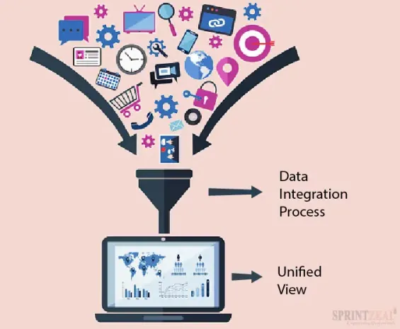 2. Data Integration:
2. Data Integration:
Data integration involves combining internal and external data sources to create a comprehensive view of a customer’s credit profile. Internal data, such as payment history and account activity, provides insights into the customer’s relationship with the business, while external sources, such as credit bureau reports and public financial records, offer additional validation. Integrated data systems enable businesses to cross-reference multiple data points, reducing the likelihood of errors or oversights and providing a holistic understanding of credit risk.
3. Continuous Monitoring and Reevaluation
Defining creditworthiness is not a one-time process but an ongoing effort. Customers’ financial conditions and behaviors can change over time due to economic fluctuations, business growth, or operational challenges. Businesses must regularly monitor and reevaluate credit profiles to adapt to these changes. For instance, a customer who demonstrates improved payment behavior may warrant higher credit limits or more favorable terms, while declining financial health may necessitate stricter credit policies.
The Importance of a Comprehensive Approach
Assessing creditworthiness requires a blend of quantitative metrics and qualitative insights, supported by advanced tools and continuous monitoring. By combining financial history, credit scores, trade references, and market trends, businesses can make informed decisions that balance growth opportunities with risk management. Modern tools, such as automated credit scoring and data integration, further enhance this process by delivering accurate and timely evaluations. Ultimately, a comprehensive approach to assessing creditworthiness helps businesses minimize financial risks, maintain stable cash flow, and build strong, trust-based relationships with their customers.
2. Setting Credit Limits
Once creditworthiness has been assessed, the next crucial step in credit management is determining appropriate credit limits for each customer. Credit limits define the maximum amount of credit a business is willing to extend, acting as a safeguard against overexposure to financial risks. Setting these limits ensures that businesses maintain a controlled approach to extending credit, balancing the desire for revenue growth with the need for financial prudence.
Several factors influence the determination of credit limits. The customer’s financial health is a primary consideration; a strong credit profile often justifies higher credit limits, whereas customers with lower creditworthiness may be granted more conservative thresholds. Additionally, a customer’s transaction history plays a significant role. Long-term customers with a proven record of timely payments may qualify for higher credit limits, reflecting the trust and confidence established over time. The size and frequency of a customer’s orders are also critical. Businesses may impose stricter limits for high-value, infrequent transactions compared to regular, smaller purchases. Lastly, organizational objectives, such as expanding into new markets or building customer loyalty, may shape credit limit policies. For example, a company aiming to attract new clients might temporarily offer higher credit limits as a strategic incentive.
Modern credit policies often embrace flexibility through dynamic credit limits, which adjust automatically based on real-time factors. For instance, a customer who consistently pays invoices early might see their credit limit increase as a reward for their reliability. Conversely, customers who exhibit late payment behavior could face immediate reductions in their credit limits to mitigate risk. This adaptive approach allows businesses to respond quickly to changes in customer behavior, ensuring that credit limits remain aligned with the latest financial data.
Monitoring and revising credit limits is an ongoing process. Changes in a customer’s financial condition, shifts in industry trends, or broader economic fluctuations may necessitate adjustments. Automated systems play a pivotal role in this process, flagging accounts that require review and ensuring that credit limits are continually optimized.
By setting well-calibrated credit limits, businesses strike a balance between promoting sales growth and protecting themselves from excessive financial exposure. This measured approach to credit management fosters financial stability while supporting strategic business objectives.
3. Establishing Terms and Conditions
The terms and conditions of credit agreements define the rules and expectations governing the relationship between a business and its customers. These provisions are essential for ensuring clarity, fairness, and enforceability. By clearly outlining responsibilities and obligations, businesses lay the groundwork for smooth transactions, reduce the potential for misunderstandings, and minimize disputes.
 A key element of credit agreements is the specification of payment terms, which define the timeframe within which payments are expected. Common examples include “net 30,” where payment is due within 30 days of the invoice date. Early payment discounts, such as “2/10 net 30,” incentivize prompt payments by offering a small reduction in the total amount owed. On the other hand, penalties for late payments help discourage delays and ensure accountability. Interest rates and administrative fees for overdue balances are also standard features, compensating businesses for the additional costs incurred during collection efforts.
A key element of credit agreements is the specification of payment terms, which define the timeframe within which payments are expected. Common examples include “net 30,” where payment is due within 30 days of the invoice date. Early payment discounts, such as “2/10 net 30,” incentivize prompt payments by offering a small reduction in the total amount owed. On the other hand, penalties for late payments help discourage delays and ensure accountability. Interest rates and administrative fees for overdue balances are also standard features, compensating businesses for the additional costs incurred during collection efforts.
Credit application requirements are another foundational aspect of credit agreements. These requirements outline the information customers must provide when applying for credit, such as financial statements, trade references, and credit scores. Gathering this information upfront ensures that businesses can make informed decisions about extending credit. Dispute resolution procedures are equally critical, offering a clear process for addressing issues like invoice discrepancies or product complaints. By resolving disputes efficiently, businesses reduce the likelihood of prolonged conflicts and maintain positive customer relationships. In cases of non-payment, default and recovery terms specify the actions a business may take, including engaging collection agencies, initiating legal proceedings, or halting further credit extensions.
Credit policies often tailor terms and conditions to different customer segments. For example, large enterprises may negotiate customized terms that reflect their purchasing power and strategic importance. In contrast, small businesses might receive standardized terms with stricter safeguards due to their higher risk profiles. This customization allows businesses to align credit agreements with the unique needs and risks associated with each customer segment.
Technology plays a vital role in enforcing terms and conditions. Automated invoicing and payment tracking systems streamline the process by sending reminders for due dates, applying penalties for late payments, and integrating with collection software for overdue accounts. These tools improve efficiency and ensure that terms are consistently applied.
Legal and regulatory compliance is a non-negotiable aspect of credit terms and conditions. Policies must adhere to relevant laws, such as anti-discrimination statutes and industry-specific guidelines. Compliance not only protects businesses from legal risks but also demonstrates ethical and responsible practices, fostering trust with customers and stakeholders.
The core components of credit policies—defining creditworthiness, setting credit limits, and establishing terms and conditions—are deeply interconnected. For instance, a customer’s creditworthiness directly influences the credit limits they receive and the terms of their agreement. Similarly, payment terms must align with credit limits to ensure that customers can realistically meet their obligations. Together, these components create a cohesive framework that supports sound financial management, enhances customer satisfaction, and drives long-term business success.
Conclusion
The core components of credit policies—defining creditworthiness, setting credit limits, and establishing terms and conditions—are vital for effective credit management. By systematically assessing creditworthiness, businesses minimize financial risks while identifying opportunities for growth. Establishing appropriate credit limits ensures that the organization balances sales generation with financial prudence. Meanwhile, clear and enforceable terms and conditions foster transparency, trust, and compliance.
When these elements are thoughtfully designed and seamlessly integrated, credit policies become a powerful tool for managing accounts receivable, protecting cash flow, and supporting strategic goals. In a competitive and ever-evolving business landscape, businesses that master these core components are better equipped to navigate challenges and capitalize on opportunities.

Case Study
A notable example of a company implementing effective credit policies is MicroBilt Corporation, a credit reporting and alternative credit data provider. Since its founding in 1978, MicroBilt has developed a range of products designed to help businesses accurately assess risk, particularly for consumers with limited traditional credit histories. By offering services such as automated credit scoring systems and data integration tools, MicroBilt enables companies to make informed credit decisions, thereby minimizing financial risks and fostering strong customer relationships.

Exercise 1.1: Reflection Exercise – Consolidating Learning on Credit Policies
Spend 5-10 minutes reviewing the three core components of credit policies: defining creditworthiness, setting credit limits, and establishing terms and conditions. Reflect on the tools, techniques, and strategies associated with each.
Read the following scenario and answer the questions below:
You are the credit manager for a mid-sized company that manufactures industrial equipment. A new customer, a startup in the renewable energy sector, has approached your company for a large order on credit. They provide financial statements showing limited profitability but strong cash flow. Their credit score is average, and they offer a trade reference from a supplier who reports timely payments. However, the renewable energy sector is experiencing regulatory uncertainty that could affect their operations.
1. Defining Creditworthiness:
• Based on the provided information, how would you assess this customer’s creditworthiness?
• What tools or additional data would you use to validate your assessment?
2. Setting Credit Limits:
• Considering the customer’s financial history and industry trends, what factors would influence the credit limit you set?
• Would you recommend dynamic credit limits for this customer? Why or why not?
3. Establishing Terms and Conditions:
• What payment terms would you propose (e.g., net 30, early payment discount)?
• How would you address potential risks, such as regulatory uncertainty, in the terms and conditions?

Course Manual 2: The Relationship Between Credit Policies and Economic Growth
Credit policies play a pivotal role in shaping the economic landscape, acting as a bridge between financial institutions and the broader economy. By defining the terms under which credit is extended to individuals and businesses, these policies directly impact access to capital—a fundamental driver of economic activity. Well-structured credit policies stimulate economic growth by empowering businesses to invest, innovate, and expand, while also enabling consumers to make significant purchases such as homes, vehicles, or education. Conversely, restrictive or poorly designed credit policies can stifle growth, creating barriers to entry for entrepreneurs and limiting consumer spending.
In a dynamic economic environment, credit policies serve as a tool for managing risk and promoting stability. During periods of economic expansion, credit policies often loosen, allowing greater access to financing and fueling growth. Conversely, in times of economic downturn, tightening credit policies can mitigate risks but may also restrict growth potential. Striking the right balance between accessibility and prudence is critical for fostering sustainable economic development.
The interplay between credit policies and economic growth is particularly evident in the role of financial institutions, which act as intermediaries between lenders and borrowers. By shaping the flow of credit, policies influence the level of investment in key sectors, job creation, and consumer confidence. This discussion explores the multifaceted relationship between credit policies and economic growth, examining the mechanisms through which credit availability drives economic activity, the risks of imbalance, and strategies for optimizing policies to support long-term prosperity.
The Role of Credit Policies in Capital Allocation
Credit policies play a crucial role in determining how financial resources are distributed across different industries, directly shaping the trajectory of economic growth. By setting the criteria for lending and borrowing, credit policies influence which sectors receive funding, driving investment decisions and capital flows. This allocation of capital is vital to fostering innovation, enhancing productivity, and maintaining economic balance.
In industries such as real estate, manufacturing, and technology, credit policies dictate the availability and cost of financing for development and expansion. For instance, in the real estate sector, lenient credit policies that allow for accessible mortgages and development loans can stimulate housing construction, commercial projects, and property ownership. These activities, in turn, drive demand for construction materials, labor, and related services, creating a multiplier effect that benefits the broader economy. Conversely, restrictive credit policies in this sector can limit growth, reducing the availability of affordable housing and slowing urban development.
Manufacturing, a cornerstone of many economies, is another sector heavily influenced by credit policies. Accessible credit enables manufacturers to invest in equipment, raw materials, and technology upgrades, boosting production capacity and competitiveness. Credit policies that favor long-term loans with manageable interest rates encourage industrial expansion and job creation. On the other hand, tightening credit availability can constrain these investments, hindering productivity and innovation.
The technology sector, often characterized by high-risk, high-reward ventures, is particularly sensitive to credit policies. Startups and innovative enterprises rely on favorable credit terms to fund research and development, scale operations, and bring groundbreaking ideas to market. Credit policies that prioritize venture capital and support for emerging technologies can drive significant advancements, positioning economies as global leaders in innovation. However, overly cautious policies may stifle creativity and deter investment in high-potential but risky projects.
Credit policies also influence the distribution of capital among regions, addressing or exacerbating economic disparities. By directing credit to underserved areas or industries, policymakers can promote inclusive growth and regional development. Conversely, a lack of targeted credit policies may perpetuate inequalities and hinder overall economic progress.
Ultimately, credit policies act as a steering mechanism for capital allocation, shaping the economic landscape by prioritizing certain sectors and activities. Well-designed policies ensure that financial resources are allocated efficiently, supporting sectors that drive innovation, create jobs, and contribute to sustainable economic growth.
Credit Policies and Small Business Growth
Small and medium-sized enterprises (SMEs) are vital to economic growth, serving as engines of innovation, entrepreneurship, and job creation. Accessible credit policies significantly impact the ability of SMEs to thrive, as these businesses often rely on external financing to fund operations, expand their reach, and invest in new technologies. Well-structured credit policies create opportunities for SMEs to contribute to economic resilience and innovation, while restrictive policies can stifle their growth potential.
Access to credit allows SMEs to overcome barriers posed by limited internal resources. Startups, for example, often lack substantial capital reserves and depend on favorable credit terms to launch their operations. Business loans, lines of credit, and other financing options enable entrepreneurs to secure the equipment, inventory, and facilities necessary to establish a market presence. For existing SMEs, accessible credit facilitates investments in technology, workforce development, and expansion into new markets, fostering both growth and competitiveness.
Innovation is another key area where credit policies influence SMEs. These businesses are often at the forefront of technological advancements and creative problem-solving. However, innovation typically requires significant upfront investment in research and development, which may not yield immediate returns. Credit policies that prioritize funding for SMEs in innovative industries, such as technology and green energy, provide these enterprises with the runway needed to develop transformative solutions. Supportive credit policies also encourage risk-taking among entrepreneurs, driving the exploration of new ideas and business models.
Job creation is one of the most tangible benefits of accessible credit for SMEs. Financing allows businesses to hire employees, expand production, and increase service capacity. SMEs collectively account for a substantial share of global employment, and their ability to access credit directly impacts job availability and economic stability in local communities. Conversely, restrictive credit policies limit the growth of these businesses, curbing their capacity to contribute to job creation.
However, challenges persist in extending credit to SMEs, particularly in assessing creditworthiness and managing risk. To address these barriers, modern credit policies increasingly leverage technology, such as AI-powered credit scoring and alternative data sources, to provide SMEs with fair access to financing.
In summary, credit policies play a critical role in shaping the success of SMEs. By enabling access to financing, fostering innovation, and driving job creation, well-designed credit policies ensure that SMEs can contribute meaningfully to economic growth and resilience.
Consumer Credit and Economic Activity
Consumer credit is a key driver of economic activity, providing individuals with the financial flexibility to make significant purchases, manage cash flow, and invest in their future. Credit policies governing personal loans, mortgages, and credit cards play a pivotal role in shaping consumer spending, which accounts for a substantial portion of overall economic demand. By influencing the availability and affordability of credit, these policies directly impact household consumption, market dynamics, and economic growth.
Personal loans provide individuals with access to funds for various needs, from financing major purchases to consolidating debt. Favorable credit policies that lower interest rates, extend repayment terms, or simplify application processes make personal loans more accessible, encouraging consumers to spend. This increased spending fuels economic demand, benefiting industries such as retail, travel, and home improvement. Conversely, restrictive credit policies can limit access to personal loans, suppressing consumption and slowing economic activity.
Mortgages are another critical area where credit policies significantly affect economic dynamics. Homeownership, often facilitated by mortgage financing, drives substantial economic activity. Favorable credit policies that lower down payment requirements or offer fixed, low-interest rates make home buying more accessible, stimulating demand in the real estate market. This demand has a cascading effect on related sectors, including construction, furniture, and home maintenance. Restrictive mortgage policies, on the other hand, can slow housing market activity, reducing economic growth.
Credit cards are perhaps the most accessible form of consumer credit, enabling individuals to manage day-to-day expenses, finance short-term needs, and participate in discretionary spending. Credit card policies, such as interest rates, credit limits, and repayment terms, significantly influence consumer behavior. For example, lower interest rates and higher credit limits encourage spending, while stricter policies may lead to reduced usage. Credit card-driven consumption benefits a wide range of industries, from retail to dining and entertainment.
The impact of consumer credit extends beyond individual spending. Increased consumer demand drives business revenues, promotes job creation, and generates tax income for governments. However, overly lenient credit policies may lead to excessive consumer debt, posing risks to financial stability. Striking the right balance between accessibility and responsibility is essential to ensuring that consumer credit contributes positively to economic growth.
Credit policies governing personal loans, mortgages, and credit cards shape consumer behavior and influence economic activity. Well-designed policies foster responsible borrowing, stimulate demand, and drive growth, highlighting their critical role in a thriving economy.
The Risks of Credit Policy Imbalance
Credit policies are integral to maintaining economic stability, but their design requires a delicate balance. Policies that are either overly lenient or excessively restrictive can lead to significant economic risks, including the formation of economic bubbles, credit crunches, and even financial crises. Understanding these consequences is essential for developing credit frameworks that foster sustainable growth.
Overly Lenient Credit Policies
When credit policies are too lenient, they can encourage excessive borrowing and risk-taking by individuals and businesses. This often leads to the formation of economic bubbles, where asset prices become inflated beyond their intrinsic value. A notable example is the 2008 global financial crisis, which was fueled by lenient mortgage lending practices in the United States. Easy access to subprime mortgages encouraged speculative investments in real estate, driving up housing prices until the bubble burst, resulting in widespread defaults and economic collapse.
Overextension of credit also increases the risk of nonperforming loans (NPLs), where borrowers are unable to meet repayment obligations. High levels of NPLs can strain financial institutions, reducing their ability to lend and undermining overall economic stability. Furthermore, lenient policies may distort markets by directing credit to unproductive sectors, limiting resources for innovation and long-term growth.
Excessively Restrictive Credit Policies
Conversely, excessively restrictive credit policies can stifle economic growth by limiting access to essential financing. This phenomenon, often referred to as a credit crunch, occurs when lending conditions become so tight that businesses and individuals cannot access the capital they need to operate or expand. During credit crunches, consumer spending declines, businesses delay investments, and job creation slows, leading to economic stagnation or contraction.
Restrictive policies disproportionately impact small businesses and startups, which often lack alternative financing options. By curbing their access to credit, such policies hinder innovation, entrepreneurship, and regional development, exacerbating economic inequalities. Moreover, overly cautious lending practices during downturns can prolong recessions by preventing the economic recovery that access to credit typically supports.
Balancing Credit Policies
To avoid these extremes, credit policies must strike a balance between accessibility and prudence. Effective frameworks incorporate dynamic adjustments based on market conditions, leverage technology for accurate risk assessment, and promote transparency and accountability. Policymakers and financial institutions must monitor economic indicators closely to ensure that credit policies remain responsive and sustainable.
Imbalanced credit policies—whether too lenient or too restrictive—pose significant risks to economic stability. Striking the right balance is critical to fostering sustainable growth and mitigating the potential for crises.

Case Study: The Role of Credit Policies in the 2008 Global Financial Crisis
The 2008 Global Financial Crisis is a seminal example of how imbalanced credit policies can impact economic growth and stability. In the years leading up to the crisis, overly lenient credit policies in the U.S. mortgage market enabled widespread access to credit, even among high-risk borrowers. Financial institutions, seeking to expand profits, reduced lending standards, leading to the proliferation of subprime mortgages. While initially boosting economic activity, these policies ultimately resulted in an unsustainable housing bubble.
Credit Policy Dynamics
1. Lenient Lending Standards:
Financial institutions offered mortgage loans with minimal verification of borrowers’ financial stability, allowing individuals with poor credit histories to secure home loans. Adjustable-rate mortgages (ARMs) with low initial interest rates attracted borrowers who were unable to afford higher fixed-rate loans.
2. Securitization of Mortgages:
Lenders bundled mortgages into complex financial instruments known as mortgage-backed securities (MBS) and collateralized debt obligations (CDOs). These were sold to investors worldwide, spreading the associated risks across the global financial system. Lenient credit rating practices further exacerbated the problem, as risky instruments were often rated as safe investments.
3. Inflated Housing Market:
Easy access to credit fueled demand for housing, driving property prices to unsustainable levels. This created a speculative bubble, where homebuyers and investors expected prices to continue rising indefinitely.
Economic Consequences
When the housing bubble burst, home values plummeted, leaving borrowers unable to refinance or sell their properties. Subprime borrowers defaulted en masse, leading to significant losses for financial institutions. The crisis cascaded through the economy, resulting in a severe credit crunch as lenders tightened policies to mitigate risk. This restricted access to capital, causing a sharp decline in consumer spending, business investments, and job creation.
Lessons Learned
The 2008 crisis underscored the importance of balanced credit policies. Excessive leniency, combined with inadequate risk assessment and oversight, led to widespread financial instability. Following the crisis, governments and regulatory bodies worldwide implemented reforms to tighten credit standards, increase transparency, and strengthen oversight. Policies like the U.S. Dodd-Frank Act aimed to prevent future crises by promoting responsible lending practices and mitigating systemic risks.
Optimizing Credit Policies for Sustainable Growth
Credit policies are powerful tools for balancing economic development and financial stability. Well-optimized credit policies not only manage risk effectively but also foster sustainable growth by ensuring the responsible allocation of financial resources. Achieving this balance requires strategies that prioritize data-driven insights, leverage technology, and align with long-term economic goals.
Risk Assessment and Segmentation
One of the most effective ways to optimize credit policies is by implementing advanced risk assessment strategies. By segmenting borrowers into distinct risk categories based on creditworthiness, financial history, and market trends, lenders can tailor policies to suit each group. Low-risk borrowers may benefit from more favorable terms, while high-risk borrowers can be managed with safeguards like stricter credit limits or higher interest rates. This targeted approach minimizes potential losses while expanding access to credit for those who can use it responsibly.
Leveraging Technology and Data Analytics
Technology plays a critical role in optimizing credit policies. Artificial intelligence (AI) and machine learning (ML) enable lenders to analyze vast datasets, uncovering patterns and insights that traditional methods might overlook. These tools enhance the accuracy of credit evaluations by considering a wider range of factors, such as real-time payment behaviors and alternative data sources. Additionally, automation streamlines credit processes, reducing administrative burdens and improving decision-making efficiency. For example, dynamic credit scoring models can adjust in real-time to reflect changes in borrower behavior, ensuring that policies remain relevant and responsive.
Promoting Financial Inclusion
Inclusive credit policies are essential for sustainable growth. By incorporating alternative data—such as utility payments, rental histories, or mobile transaction records—lenders can assess the creditworthiness of underbanked populations who lack traditional credit histories. Expanding access to credit for small businesses, startups, and underserved communities drives entrepreneurship, job creation, and regional development, contributing to broader economic progress.
Aligning with Environmental, Social, and Governance (ESG) Goals
Sustainable credit policies increasingly incorporate ESG considerations. For example, lenders may prioritize financing for green technologies, renewable energy projects, or socially responsible businesses. These policies align with global sustainability objectives while mitigating long-term risks associated with climate change or social instability.
Continuous Monitoring and Adaptation
Optimized credit policies require ongoing review and adaptation to respond to changing economic conditions, borrower behaviors, and regulatory landscapes. Regular updates ensure that policies remain effective, equitable, and aligned with strategic goals.
Optimizing credit policies for sustainable growth involves balancing risk management with economic development. By leveraging technology, promoting inclusion, and aligning with ESG principles, lenders can create policies that drive prosperity while safeguarding financial stability.

Exercise 1.2: Group Discussion
1. The Role of Credit Policies in Driving Innovation and Inclusion
• In what ways can credit policies support innovation, particularly in high-risk sectors like technology or green energy?
• Discuss the importance of financial inclusion in credit policy design. How can alternative data and technology help underserved populations and small businesses access credit responsibly?
• Are there trade-offs between inclusivity and risk management? How can they be addressed?

Course Manual 3: The Role of Credit Policies in Economic Stability
Credit policies are critical instruments in ensuring economic stability. By regulating the flow of credit in the economy, these policies influence liquidity, promote sustainable growth, and minimize financial risks. Whether implemented by central banks, financial institutions, or policymakers, credit policies serve as a mechanism to balance the competing demands of fostering economic activity and maintaining financial discipline. Their effectiveness can determine how resilient an economy is to shocks, such as recessions, inflationary pressures, or financial crises.
In times of economic expansion, credit policies may encourage borrowing and investment, fueling growth and innovation. Conversely, during downturns, tightening credit policies can help manage liquidity, control inflation, and mitigate systemic risks. Central banks, for instance, use tools like interest rates and reserve requirements to influence credit availability and ensure that the financial system operates smoothly. At the same time, financial institutions set their own credit policies to assess borrower risk, manage nonperforming loans, and safeguard their stability.
The role of credit policies extends beyond managing financial institutions; they also affect households, businesses, and governments. For individuals, credit policies impact access to loans for major purchases, education, and emergencies. For businesses, they determine the ability to finance operations, expand capacity, and weather economic volatility. On a macroeconomic level, effective credit policies support long-term stability by preventing economic bubbles, credit crunches, and financial crises.
This discussion explores the multifaceted role of credit policies in maintaining economic stability. It examines how these policies manage liquidity, promote balanced growth, and mitigate risks across different economic sectors.
Credit Policies and Liquidity Management
Credit policies play a vital role in managing liquidity within an economy, ensuring a stable money supply that supports economic activity while minimizing risks. Both central banks and financial institutions implement credit policies to regulate the availability of credit, which directly impacts liquidity in the financial system. By carefully adjusting credit flows, these entities aim to maintain economic balance during periods of growth, recession, or financial uncertainty.
Role of Central Banks
Central banks, as the primary regulators of a country’s monetary policy, employ credit policies to control liquidity. One key tool is the adjustment of interest rates, which influences borrowing and lending behaviors. During periods of economic expansion, central banks may raise interest rates to discourage excessive borrowing, reducing liquidity and preventing inflation. Conversely, in times of economic downturn, central banks lower interest rates to encourage borrowing and investment, injecting liquidity into the system and stimulating economic activity.
Another mechanism is the use of reserve requirements, which dictate the amount of funds banks must hold in reserve rather than lend out. By increasing reserve requirements, central banks restrict liquidity, while lowering them allows banks to lend more, boosting credit availability. Additionally, central banks use open market operations (OMO), buying or selling government securities to inject or withdraw money from the economy, ensuring optimal liquidity levels.
Role of Financial Institutions
Financial institutions also play a significant role in liquidity management through their credit policies. By evaluating borrowers’ creditworthiness and setting terms for loans, banks control the flow of credit into various sectors. For example, during periods of financial instability, banks may tighten credit policies by imposing stricter eligibility criteria or reducing credit limits, thus containing liquidity to prevent defaults. Conversely, during stable periods, banks may adopt more lenient credit policies to support growth and foster economic development.
Impact of Liquidity Management
Effective liquidity management through credit policies ensures the smooth functioning of the financial system. Adequate liquidity prevents disruptions in credit markets, enabling businesses and households to access funds for investments and consumption. It also minimizes risks such as bank runs, currency volatility, and inflationary pressures.
In conclusion, credit policies are essential tools for regulating liquidity, allowing central banks and financial institutions to respond dynamically to economic fluctuations. This careful management supports stability, promotes sustainable growth, and safeguards the broader economy.
Promoting Sustainable Economic Growth
Sustainable economic growth is the cornerstone of a thriving economy, balancing the immediate need for development with long-term financial stability, environmental preservation, and social equity. Credit policies play a pivotal role in fostering this balance by guiding the flow of financial resources toward productive sectors, ensuring equitable access to credit, and minimizing the risks associated with unsustainable borrowing practices. By aligning credit policies with broader developmental goals, central banks, financial institutions, and policymakers can stimulate innovation, job creation, and economic resilience while avoiding the pitfalls of economic bubbles and crises.
The Role of Credit Policies in Economic Growth
At their core, credit policies regulate the availability and cost of credit in an economy. These policies determine the terms under which individuals, businesses, and governments can borrow funds, thereby shaping investment decisions and consumption patterns. By promoting access to affordable credit, policymakers can encourage entrepreneurship, enhance productivity, and drive technological advancements, all of which are essential for sustainable economic growth.
For example, in the manufacturing sector, accessible credit allows businesses to invest in machinery, expand operations, and increase efficiency. In the technology sector, credit policies that prioritize venture capital and funding for research and development foster innovation, enabling economies to remain competitive in a rapidly changing global landscape. Similarly, in agriculture, credit policies can support the adoption of sustainable practices and technologies, improving productivity while preserving natural resources.
Aligning Credit Policies with Sustainability Goals
Sustainable economic growth goes beyond financial metrics; it encompasses environmental and social considerations. Credit policies can play a transformative role in advancing these goals by incentivizing green investments and promoting financial inclusion.
1. Incentivizing Green Investments
Credit policies can be designed to encourage investments in renewable energy, energy efficiency, and sustainable infrastructure. For instance, financial institutions can offer preferential loan terms for projects that align with environmental goals, such as solar and wind energy installations or green building certifications. Central banks can support these initiatives by providing refinancing schemes or lower risk-weight requirements for green loans, making it more attractive for banks to extend credit to environmentally friendly projects.
2. Promoting Financial Inclusion
Inclusive credit policies ensure that underserved populations, such as small businesses, rural communities, and low-income households, have access to financial resources. By leveraging alternative data sources—such as utility payments or mobile transaction histories—financial institutions can assess creditworthiness more comprehensively, enabling broader access to credit. Inclusive credit policies not only reduce inequality but also stimulate economic activity in previously neglected regions, driving holistic growth.
Balancing Growth with Risk Management
Credit policies are vital for fostering economic growth, but they must also address the risks associated with excessive borrowing and overleveraging. Policies that are too lenient can result in unsustainable debt levels, asset bubbles, and financial crises, while overly restrictive policies may suppress growth and stifle innovation. Striking the right balance is crucial for ensuring that credit policies contribute to long-term economic stability.
Preventing Economic Bubbles:Economic bubbles often arise from excessively lenient credit policies, which encourage speculative investments and inflate asset prices. A notable example is the 2008 global financial crisis, which was driven by lax mortgage lending practices that fueled unsustainable growth in the housing market. To avoid similar scenarios, credit policies must incorporate rigorous risk assessment frameworks and regular monitoring of credit trends. By identifying warning signs early, financial institutions and regulators can adjust policies to mitigate risks and maintain economic stability.
Encouraging Responsible Borrowing:Promoting financial literacy and responsible borrowing is another critical aspect of balancing growth with risk management. Credit policies should include initiatives that educate consumers and businesses about the dangers of overleveraging and the importance of sound financial planning. These programs can reduce default rates by helping borrowers make informed decisions, ultimately supporting long-term economic health. Responsible borrowing practices ensure that credit remains a tool for empowerment rather than a source of financial strain.
Dynamic Credit Policy Adjustments:Adaptability is a key feature of effective credit policies. Economic conditions are constantly evolving, and credit policies must adjust to these changes to remain effective. During periods of economic expansion, tightening credit policies can help prevent overheating and the formation of bubbles. Conversely, in times of economic downturn, loosening credit policies can stimulate demand, support recovery, and restore growth momentum. Central banks and financial institutions should leverage real-time data and advanced analytics to make informed policy adjustments, ensuring that credit flows remain aligned with the economy’s needs.
Balancing growth with risk management is a fundamental challenge for credit policymakers. Preventing bubbles, encouraging responsible borrowing, and implementing dynamic adjustments are critical strategies for ensuring that credit policies foster sustainable growth while safeguarding economic stability. This balance not only supports immediate development but also ensures resilience against future financial challenges.
The Role of Technology in Promoting Sustainable Growth
Advancements in technology have significantly reshaped the design and implementation of credit policies, enhancing their capacity to foster sustainable economic growth. By leveraging data-driven tools, digital platforms, and innovative financial solutions, technology has made credit policies more effective, inclusive, and environmentally conscious.
Data-Driven Insights: Artificial intelligence (AI) and machine learning (ML) have revolutionized credit policy frameworks by enabling financial institutions to analyze vast datasets. These technologies uncover patterns that inform better credit decisions, offering deeper insights into borrower behavior and market trends. Enhanced risk assessment tools powered by AI and ML provide more accurate evaluations of creditworthiness, helping financial institutions reduce default risks and allocate resources more efficiently. This precision allows credit policies to support sustainable growth by promoting responsible lending and minimizing financial instability.
Digital Platforms for Financial Inclusion: Mobile banking and digital lending platforms have expanded credit access for underserved populations, particularly in developing regions. These technologies bridge the gap between financial institutions and remote or economically marginalized communities, offering tailored credit solutions to individuals and businesses often overlooked by traditional banking systems. By increasing financial inclusion, digital platforms empower these groups to participate in economic activities, fostering regional development and reducing economic disparities. This democratization of credit access plays a crucial role in sustainable growth by enabling broader participation in the economy.
Green FinTech Solutions: Technology also advances sustainable finance through green FinTech innovations. Platforms designed to track carbon footprints or provide insights into the environmental impact of investments empower borrowers and lenders to make informed, sustainability-focused financial decisions. These tools align credit policies with environmental goals, encouraging investments in renewable energy, energy-efficient projects, and other green initiatives. By incorporating environmental considerations into credit decisions, green FinTech promotes economic growth that is both productive and ecologically sustainable.
Technology has become an indispensable ally in promoting sustainable economic growth through credit policies. From enhancing risk assessment with data-driven insights to broadening credit access via digital platforms and fostering environmentally responsible investments through green FinTech, these advancements ensure that credit policies align with long-term economic, social, and environmental objectives.
Credit Policies and Long-Term Economic Resilience
Sustainable economic growth is inherently tied to resilience—the ability of an economy to adapt to challenges such as climate change, technological disruptions, and financial crises. Credit policies can enhance resilience by directing resources toward sectors that build long-term capacity and adaptability.
1. Investment in Human Capital
Credit policies that prioritize education and skill development, such as student loans or training grants, contribute to a more skilled workforce. This, in turn, enhances productivity and innovation, strengthening the economy’s foundation for sustained growth.
2. Support for Resilient Infrastructure
Credit policies that fund resilient infrastructure projects, such as climate-adaptive buildings and transportation systems, help economies withstand environmental and economic shocks. These investments also create jobs and stimulate demand, contributing to immediate and long-term growth.
3. Encouraging Diversification
Diversifying credit flows across sectors and regions reduces economic vulnerabilities. For instance, ensuring that credit is available not only for traditional industries but also for emerging sectors such as renewable energy or biotechnology promotes balanced growth and reduces reliance on single industries.
Conclusion
Credit policies are indispensable tools for promoting sustainable economic growth. By regulating the flow of financial resources, they influence investment, innovation, and consumption patterns that drive development. Aligning these policies with sustainability goals—through green investments, financial inclusion, and responsible borrowing—ensures that growth is equitable and resilient. Leveraging technology and maintaining a balance between accessibility and risk management further enhances the effectiveness of credit policies.
In a rapidly evolving global economy, credit policies must adapt to new challenges while remaining focused on long-term objectives. Well-designed credit policies not only fuel growth but also ensure that economies can thrive sustainably, benefiting current and future generations.
Risk Mitigation Through Credit Policies
Effective credit policies are essential for minimizing risks in the financial system, including those associated with excessive borrowing, asset bubbles, and nonperforming loans (NPLs). By employing well-structured strategies, central banks, financial institutions, and regulators can safeguard economic stability and ensure that credit is used as a tool for sustainable growth rather than a source of systemic risk.
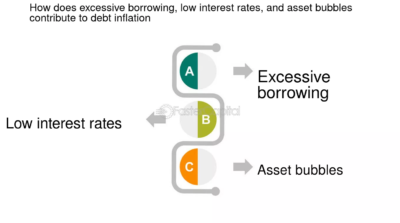
Addressing Excessive Borrowing
Excessive borrowing can lead to overleveraging, financial distress, and economic instability. To mitigate these risks, credit policies must encourage responsible lending and borrowing practices. This begins with stringent creditworthiness assessments, where financial institutions evaluate borrowers using tools like credit scores, debt-to-income (DTI) ratios, and income verification. These measures ensure borrowers have the capacity to repay their loans. Additionally, setting DTI limits prevents individuals from taking on unsustainable debt by capping the proportion of income allocated to debt payments. Loan-to-value (LTV) ratio caps further reduce risks by requiring borrowers to make larger down payments, ensuring they have a vested interest in their purchases and reducing default likelihood during market downturns.
Preventing Asset Bubbles
Asset bubbles, fueled by speculative investments and excessive credit expansion, are a significant threat to economic stability. Credit policies play a crucial role in detecting and mitigating such risks. Regular monitoring of credit growth trends across industries and regions allows policymakers to identify sectors experiencing unsustainable expansion. Tools like stress testing and scenario analysis help assess vulnerabilities. Central banks can also adjust interest rates to curb speculative activities; higher borrowing costs discourage excessive credit use and help moderate asset price inflation. Additionally, sector-specific credit controls, such as stricter lending criteria for real estate or stock market investments, can prevent bubbles from forming while ensuring other sectors continue receiving adequate credit.
Managing Nonperforming Loans (NPLs)
Nonperforming loans undermine the financial health of lenders and the broader economy. Effective credit policies focus on early detection and intervention to address delinquent accounts before they become nonperforming. Strategies include restructuring loans, modifying repayment terms, and maintaining adequate loan loss provisions to absorb potential losses. Regular asset quality reviews ensure that credit risk management practices remain robust, while efficient debt resolution mechanisms, such as bankruptcy frameworks, enable financial institutions to recover and reallocate capital effectively.
The Role of Technology in Risk Mitigation
Technology has revolutionized risk mitigation by enhancing the ability of financial institutions to monitor and manage credit risks. AI-powered tools analyze vast datasets to predict borrower behavior and identify early signs of financial distress, enabling targeted interventions. Real-time monitoring systems track loan performance and market conditions, allowing swift responses to emerging risks. Automation in compliance ensures adherence to regulatory standards, reducing lapses and their associated risks.
Dynamic Credit Policies for Risk Management
Dynamic credit policies that adjust to economic conditions are vital for managing risks effectively. During periods of economic expansion, tightening credit policies can prevent overheating, while loosening them during downturns supports recovery and limits NPL growth. By leveraging real-time data and advanced analytics, central banks and financial institutions can make informed adjustments that align with evolving market conditions.
Mitigating risks through credit policies is crucial for maintaining economic stability. Strategies such as responsible lending, targeted credit controls, proactive NPL management, and technology integration ensure that credit flows responsibly and sustainably. Policymakers and financial institutions must balance fostering growth with safeguarding against systemic vulnerabilities, ensuring that credit policies remain resilient in a constantly changing economic landscape. These measures not only protect the financial system but also support long-term economic development.

Case Study: The 2008 Global Financial Crisis and the Introduction of the Dodd-Frank Act
The 2008 global financial crisis, one of the most significant economic downturns in modern history, was largely driven by excessive borrowing and overly lenient credit policies. These practices encouraged speculative behaviors, particularly in the U.S. housing market, where financial institutions extended subprime mortgages to borrowers with poor credit histories. These high-risk loans were bundled into complex financial products, such as mortgage-backed securities (MBS) and collateralized debt obligations (CDOs), which obscured their underlying risks. The speculative housing bubble eventually burst in 2007, leading to widespread defaults, the collapse of major financial institutions, and a cascading global financial crisis.
The crisis caused a severe global recession, resulting in millions of job losses, widespread foreclosures, and a significant erosion of household wealth. It exposed weaknesses in financial systems worldwide and highlighted the critical need for stronger credit policies to prevent similar crises in the future.
The Solution: The Dodd-Frank Act
In response to the crisis, the U.S. government introduced the Dodd-Frank Wall Street Reform and Consumer Protection Act in 2010. This legislation aimed to reform the financial system by addressing the vulnerabilities exposed during the crisis, strengthening regulation, and enhancing transparency.
One key element of the Act was the establishment of the Consumer Financial Protection Bureau (CFPB). The CFPB was tasked with enforcing fair lending practices, protecting consumers from predatory loans, and improving transparency in credit terms. Additionally, stricter mortgage lending standards were introduced, requiring lenders to verify borrowers’ ability to repay loans through more rigorous creditworthiness assessments. High-risk practices, such as issuing loans without documentation or with high-interest adjustable rates, were prohibited.
The Act also implemented risk retention rules, mandating that financial institutions retain a portion of the credit risk for securitized loans. This encouraged more prudent lending practices by aligning lenders’ interests with those of investors. Furthermore, stress testing and higher capital requirements were introduced to ensure that financial institutions maintained sufficient reserves to absorb potential losses during economic shocks. The creation of the Financial Stability Oversight Council (FSOC) provided systemic risk oversight, enabling early identification and intervention in potential crises.
Outcomes
The Dodd-Frank Act significantly improved the stability of the U.S. financial system. By enforcing stricter lending standards, it reduced the prevalence of high-risk loans. Enhanced transparency in securitization processes and risk retention measures restored investor confidence. Stress testing and higher capital reserves strengthened the resilience of financial institutions, while the CFPB ensured fair practices and consumer protection.
Although the Act faced criticism for increasing regulatory burdens, it was instrumental in stabilizing the financial system and supporting economic recovery. These reforms set a precedent for how credit policies can be used to manage risks and promote long-term stability.
Lessons Learned
The 2008 global financial crisis underscored the dangers of unchecked credit expansion and inadequate oversight. The Dodd-Frank Act demonstrated how comprehensive reforms, such as stricter credit standards, risk retention requirements, and robust regulatory frameworks, can rebuild financial stability. This case study highlights the importance of aligning credit policies with effective risk management to ensure sustainable economic growth and resilience against future crises.

Exercise 1.3: Pairs Exercise – Consolidating Learning on Credit Policies
To deepen understanding of credit policies by discussing real-world applications and reflecting on their impact on economic stability.
1. Pair Up:
Divide into pairs. Each pair will discuss and analyze a short scenario related to credit policies.
2. Scenario Discussion:
Read the scenario below and discuss the questions that follow.
A central bank observes a sharp rise in borrowing and housing prices. To manage this, it raises interest rates and tightens mortgage lending criteria. Businesses in the construction sector express concerns about declining investments, while financial analysts warn of potential slowdowns in economic growth.
• What are the central bank’s primary goals in adjusting credit policies in this scenario?
• How might these actions prevent risks like asset bubbles and excessive borrowing?
• What could be the unintended consequences of these tightened policies, and how could they be mitigated?
3. Key Takeaways:
After discussing the scenario, each pair will summarize:
• One insight about how credit policies manage risks.
• One potential challenge in implementing effective credit policies.
Pairs share their insights with the group, allowing everyone to compare perspectives and consolidate learning about the complexities of credit policy design and its role in economic stability.

Course Manual 4: Credit Risk Assessment and Management
Credit risk assessment and management are fundamental aspects of financial systems, ensuring the stability and sustainability of credit markets. Credit risk arises when borrowers fail to meet their financial obligations, posing potential losses for lenders. Effective management of credit risk is essential to protect the interests of both financial institutions and borrowers, maintaining a balance between access to credit and financial stability.
Credit risk management begins with a thorough assessment process, which evaluates the likelihood of borrower default. This process incorporates various tools and criteria, such as credit scores, financial ratios, and market trends, to gauge the creditworthiness of individuals and businesses. By identifying potential risks early, lenders can implement measures to mitigate losses, such as adjusting loan terms, diversifying credit portfolios, or requiring collateral. These strategies not only safeguard lenders but also promote responsible borrowing practices.
Effective credit risk management is a collaborative effort between financial institutions, regulators, and borrowers. Policies governing credit risk play a vital role in fostering a transparent and disciplined lending environment. They ensure that risks are evenly distributed, prevent systemic failures, and enhance overall market confidence. In today’s complex economic landscape, where global interconnectivity and technological advancements create new opportunities and challenges, robust credit risk policies are more critical than ever.
This discussion explores the principles of credit risk assessment and management, highlighting how effective policies mitigate risks and ensure sustainable credit practices.
Understanding Credit Risk
Credit risk is the potential for financial loss that arises when a borrower fails to meet their contractual obligations to a lender. This risk is a fundamental consideration for financial institutions, as it directly impacts profitability, liquidity, and overall financial stability. To manage and mitigate this risk effectively, it is essential to understand its various forms and the factors that contribute to its occurrence.
Types of Credit Risk
1. Default Risk:
Default risk occurs when a borrower is unable to repay the principal or interest on their debt as agreed. This is the most common type of credit risk, often evaluated using credit scores, payment histories, and financial ratios to predict the likelihood of default.
2. Concentration Risk:
Concentration risk arises when a lender’s credit exposure is heavily focused on a single borrower, industry, or geographic region. For example, a bank that predominantly lends to the real estate sector may face significant losses if that market experiences a downturn.
3. Systemic Risk:
Systemic risk refers to the potential for credit issues within one institution or sector to spread across the broader financial system, triggering widespread economic instability. This type of risk became evident during the 2008 global financial crisis when defaults in the U.S. housing market had global repercussions.
Key Factors Contributing to Credit Risk
Several factors influence the likelihood and severity of credit risk, making it essential for lenders to monitor and analyze these variables regularly.
1. Borrower Behavior:
The financial habits and reliability of borrowers are critical in assessing credit risk. Indicators such as inconsistent payment histories, high levels of indebtedness, or frequent loan applications may signal increased risk.
2. Economic Conditions:
Macroeconomic factors like unemployment rates, inflation, and GDP growth significantly impact borrowers’ ability to meet their obligations. During economic downturns, credit risk tends to increase as incomes decline and default rates rise.
3. Market Trends:
Fluctuations in industry performance or asset prices can affect borrowers’ financial stability. For instance, a downturn in the energy sector might impact companies reliant on oil and gas revenues, increasing their risk of default.
Understanding credit risk requires a comprehensive approach that considers its various forms and contributing factors. By identifying and analyzing these elements, financial institutions can develop effective strategies to mitigate risks and ensure the stability of their operations.
Credit Risk Assessment Tools
Credit risk assessment is a fundamental aspect of financial management, allowing lenders to evaluate the likelihood of borrower default and make informed decisions. Various tools and methods are employed for this purpose, ranging from traditional models like credit scoring and financial ratio analysis to advanced technologies such as AI-powered risk assessments. These tools help financial institutions mitigate risks, improve decision-making accuracy, and expand credit access, especially for underserved populations through alternative data integration.
Traditional Credit Risk Assessment Tools
Credit scoring models are among the most widely used tools for assessing credit risk. These models generate a numerical score based on factors such as payment history, credit utilization, and length of credit history. High credit scores generally indicate lower credit risk, enabling lenders to make quick and consistent decisions. Systems like FICO and VantageScore streamline evaluations, particularly for individual borrowers.
For businesses, financial ratio analysis is a critical method for assessing creditworthiness. Ratios such as debt-to-income (DTI), liquidity ratios, and profitability ratios provide insights into a company’s financial health and ability to service debt. For instance, DTI ratios assess whether borrowers can manage additional debt, while liquidity ratios examine the ability to cover short-term liabilities. This method offers a detailed understanding of financial stability but often requires expert interpretation.
Advanced Credit Risk Assessment Tools
Technological advancements have introduced sophisticated tools for credit risk assessment. Artificial intelligence (AI) and machine learning (ML) are at the forefront, analyzing vast datasets to identify patterns and correlations traditional models might overlook. These tools dynamically adapt to new data, improving accuracy over time. Behavioral analytics is another innovation, examining real-time borrower behaviors like payment timing and spending trends to predict creditworthiness. Additionally, stress testing simulates adverse economic scenarios, such as recessions or interest rate hikes, to assess a borrower’s resilience under challenging conditions.
The Role of Alternative Data in Credit Risk Assessment
Traditional credit models often exclude underserved populations, such as those with limited credit histories or small businesses in emerging markets. Alternative data sources, including utility payments, mobile transactions, and digital behaviors, provide a solution. For example, mobile payment records can demonstrate financial responsibility for individuals without traditional credit histories. This approach broadens access to credit, improves accuracy, and delivers real-time updates for timely decision-making. However, challenges like privacy concerns, data reliability, and regulatory compliance must be addressed.
The Future of Credit Risk Assessment
The integration of traditional models, advanced technologies, and alternative data is shaping the future of credit risk assessment. Hybrid approaches offer a more comprehensive understanding of creditworthiness, balancing the need for precision with inclusivity. Tools like AI-driven algorithms combined with traditional credit scores and stress testing create nuanced risk profiles, benefiting both lenders and borrowers. These advancements make credit risk assessment more dynamic, resilient, and inclusive.
Credit risk assessment tools are essential for sustainable lending and financial stability. From traditional credit scoring to cutting-edge AI models and alternative data use, these tools enhance risk evaluations while expanding credit access. As technology evolves, credit risk assessment will continue to improve, providing precise, inclusive, and adaptive solutions that strengthen individual lending practices and the broader financial system.
Mitigating Credit Risk for Lenders
Credit risk—the possibility of financial loss due to a borrower’s failure to meet debt obligations—poses a significant challenge for lenders. It can impact profitability, liquidity, and long-term stability. To minimize exposure, lenders employ various strategies that enhance risk management and protect their financial health. These strategies include diversification, collateral requirements, loan covenants, stress testing, and scenario analysis. By employing these measures, lenders not only safeguard their operations but also contribute to the overall stability of the financial system.
Diversification: Spreading Risk Across Borrowers and Sectors
One of the most fundamental strategies for mitigating credit risk is diversification. Concentrated exposure to a single borrower, sector, or geographic region increases the potential for significant losses if that entity or market experiences difficulties. Diversification allows lenders to spread their credit exposure across multiple borrowers, industries, and regions, reducing the impact of localized or sector-specific risks.
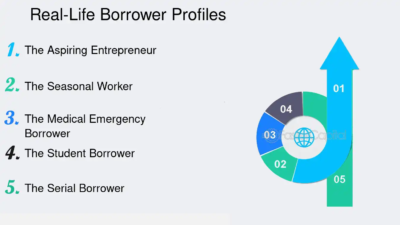 1. Diversifying Borrower Profiles:
1. Diversifying Borrower Profiles:
Lenders often extend credit to a mix of borrowers with varying credit ratings. High-risk borrowers may be balanced with low-risk ones, ensuring that potential losses from defaults are offset by stable repayments from more reliable customers.
2. Industry and Geographic Diversification:
Lending across different industries and geographic regions reduces exposure to market-specific downturns. For instance, if the real estate sector faces a slump, diversified lending to sectors like technology or healthcare can mitigate losses. Similarly, geographic diversification helps protect lenders from risks associated with regional economic downturns or political instability.
3. Portfolio Analysis:
Regular analysis of the loan portfolio enables lenders to assess concentration risks and adjust their strategies. By maintaining a balanced portfolio, lenders ensure resilience against market fluctuations and borrower defaults.
Collateral Requirements: Reducing Exposure Through Asset Backing
Collateral is a key strategy for mitigating credit risk, offering lenders a security buffer against potential borrower defaults. By pledging assets such as real estate, equipment, or inventory, borrowers provide assurance that lenders can recover their losses by seizing and liquidating these assets if necessary. Collateral requirements are especially critical in high-risk lending scenarios or during periods of economic uncertainty, where default risks are heightened.
Types of Collateral
Different types of collateral are used depending on the nature of the loan. Real estate is a common form of collateral for mortgages, while vehicles are typically pledged for auto loans. Businesses may offer accounts receivable or inventory as collateral for operational loans. Lenders carefully assess the value and liquidity of the collateral to ensure that it can be converted to cash quickly and efficiently in the event of default. This evaluation is crucial to minimize potential losses and ensure the adequacy of asset backing.
Loan-to-Value (LTV) Ratios
Loan-to-value ratios are an essential tool for managing the risks associated with collateral. An LTV ratio specifies the percentage of a loan covered by the pledged collateral. For instance, an LTV ratio of 80% means that the borrower must provide collateral worth at least 125% of the loan amount. Lower LTV ratios are preferred by lenders because they provide greater protection, reducing the likelihood of losses if the collateral needs to be liquidated. By setting appropriate LTV ratios, lenders can balance the need for security with the borrower’s ability to meet collateral requirements.
Collateral Monitoring
The value of collateral is not static and can change over time due to market conditions. For example, a decline in real estate prices could reduce the value of a property pledged as collateral. To address this, lenders regularly monitor the value of collateral to ensure it remains sufficient to cover the outstanding loan balance. If the value drops significantly, lenders may require borrowers to pledge additional assets to maintain adequate coverage. This ongoing monitoring helps lenders manage risks effectively and maintain the integrity of their loan portfolios.
Collateral requirements provide a vital layer of security for lenders, ensuring that they can recover losses in the event of borrower default. By carefully evaluating collateral, setting appropriate LTV ratios, and monitoring asset values, lenders can significantly reduce their exposure to credit risk.
Loan Covenants: Ensuring Borrower Accountability
Loan covenants are contractual agreements between lenders and borrowers that set conditions for the loan. These conditions are designed to ensure that borrowers maintain financial discipline and reduce the likelihood of default. Covenants provide lenders with an additional layer of protection by enabling proactive intervention if a borrower’s financial situation deteriorates.
1. Positive Covenants:
Positive covenants require borrowers to meet specific obligations, such as maintaining a minimum level of liquidity, providing regular financial statements, or using loan proceeds for approved purposes.
2. Negative Covenants:
Negative covenants restrict borrowers from engaging in high-risk activities, such as taking on additional debt, selling key assets, or making significant changes to their business operations without lender approval.
3. Event of Default Clauses:
Covenants often include clauses that define events triggering default, such as failure to meet financial ratios or breach of contractual terms. These clauses empower lenders to take corrective actions, such as renegotiating terms or recalling the loan.
Stress Testing: Preparing for Economic Downturns
Collateral is a key strategy for mitigating credit risk, offering lenders a security buffer against potential borrower defaults. By pledging assets such as real estate, equipment, or inventory, borrowers provide assurance that lenders can recover their losses by seizing and liquidating these assets if necessary. Collateral requirements are especially critical in high-risk lending scenarios or during periods of economic uncertainty, where default risks are heightened.
Different types of collateral are used depending on the nature of the loan. Real estate is a common form of collateral for mortgages, while vehicles are typically pledged for auto loans. Businesses may offer accounts receivable or inventory as collateral for operational loans. Lenders carefully assess the value and liquidity of the collateral to ensure that it can be converted to cash quickly and efficiently in the event of default. This evaluation is crucial to minimize potential losses and ensure the adequacy of asset backing.

Loan-to-value ratios are an essential tool for managing the risks associated with collateral. An LTV ratio specifies the percentage of a loan covered by the pledged collateral. For instance, an LTV ratio of 80% means that the borrower must provide collateral worth at least 125% of the loan amount. Lower LTV ratios are preferred by lenders because they provide greater protection, reducing the likelihood of losses if the collateral needs to be liquidated. By setting appropriate LTV ratios, lenders can balance the need for security with the borrower’s ability to meet collateral requirements.
The value of collateral is not static and can change over time due to market conditions. For example, a decline in real estate prices could reduce the value of a property pledged as collateral. To address this, lenders regularly monitor the value of collateral to ensure it remains sufficient to cover the outstanding loan balance. If the value drops significantly, lenders may require borrowers to pledge additional assets to maintain adequate coverage. This ongoing monitoring helps lenders manage risks effectively and maintain the integrity of their loan portfolios.
In summary, collateral requirements provide a vital layer of security for lenders, ensuring that they can recover losses in the event of borrower default. By carefully evaluating collateral, setting appropriate LTV ratios, and monitoring asset values, lenders can significantly reduce their exposure to credit risk.
Scenario Analysis: Understanding Broad Risk Implications
Scenario analysis complements stress testing by examining the broader implications of economic events on a lender’s operations and the financial system as a whole. While stress testing focuses on portfolio performance, scenario analysis evaluates the ripple effects of economic changes on credit risk, liquidity, and capital adequacy.
1. Macroeconomic Scenarios:
Scenario analysis considers macroeconomic trends, such as GDP contraction, inflation spikes, or currency devaluation, to assess their impact on borrowers’ repayment capacity.
2. Regulatory and Policy Impacts:
Scenarios also factor in changes to regulations or government policies. For instance, stricter lending regulations during a financial crisis may affect a lender’s ability to extend credit, while stimulus programs might reduce default risks.
3. Comprehensive Risk Assessment:
By integrating credit risk with liquidity and market risks, scenario analysis provides a holistic view of potential vulnerabilities. This enables lenders to develop robust contingency plans and allocate resources effectively.
The Role of Technology in Risk Mitigation
Advancements in technology have transformed how lenders mitigate credit risk. Tools like artificial intelligence (AI) and machine learning (ML) analyze vast amounts of data to identify patterns and predict borrower behavior. Real-time monitoring systems track loan performance, enabling early detection of potential defaults. Additionally, blockchain technology enhances transparency in loan origination and collateral verification, reducing fraud and improving risk assessments.
Conclusion
Mitigating credit risk is a critical priority for lenders, as it ensures financial stability and resilience in the face of economic uncertainties. Strategies such as diversification, collateral requirements, and loan covenants provide lenders with tools to manage risks effectively, while stress testing and scenario analysis enable proactive preparation for downturns. Technology further enhances these efforts, offering precision and scalability in risk assessment and monitoring.
By combining these strategies, lenders can protect their financial health, maintain operational stability, and support economic growth. In a dynamic and interconnected financial landscape, robust credit risk mitigation measures are essential not only for individual institutions but also for the broader stability of the global economy.

Case Study: Stress Testing and Collateral Management – COVID-19 Pandemic
The COVID-19 pandemic provided a real-world example of how stress testing and collateral management helped financial institutions mitigate credit risk during a period of unprecedented economic uncertainty. As global lockdowns disrupted economic activities, many borrowers struggled to meet their debt obligations, and the value of certain types of collateral, such as commercial real estate, began to fluctuate.
Prior to the pandemic, some financial institutions had developed stress tests to simulate the effects of global economic shocks, such as a sudden decline in GDP, a rise in unemployment, or a significant reduction in demand for commercial real estate. When the pandemic hit, these institutions quickly updated their scenarios to reflect real-time challenges, such as prolonged economic shutdowns and sector-specific vulnerabilities.
For instance, stress tests simulated the impact of a 30% drop in commercial property values or a significant decline in cash flow for small businesses heavily reliant on foot traffic. These tests helped lenders identify which loan portfolios were most at risk and guided them in reallocating resources to mitigate potential losses.
As the pandemic unfolded, some lenders tightened collateral requirements, particularly for new loans in high-risk sectors like retail, hospitality, and aviation. Borrowers in these industries were required to provide additional or higher-quality collateral, such as cash reserves or personal guarantees, to secure loans.
Additionally, lenders closely monitored the collateral tied to existing loans. For example, commercial properties pledged as collateral were reassessed for their current market value, considering the shift to remote work and reduced demand for office space. In cases where collateral values dropped below acceptable thresholds, borrowers were asked to either pledge additional assets or restructure their loans to prevent defaults.
Financial institutions conducted sensitivity analyses on their loan portfolios to measure the potential impact of prolonged economic challenges. For example, banks evaluated the likelihood of default among small businesses or individual borrowers with limited financial reserves. Insights from these analyses enabled lenders to extend repayment terms, offer temporary payment holidays, or reduce interest rates to prevent defaults while maintaining long-term relationships with borrowers.
Lenders that implemented stress testing and dynamic collateral management strategies during the pandemic fared better than those that did not. These institutions were able to anticipate risks, adjust lending criteria, and take preemptive measures to mitigate losses. Conversely, lenders that relied on static collateral evaluations or failed to adapt to changing conditions faced higher default rates and financial instability.
This example underscores the importance of integrating stress testing with real-time collateral management. By preparing for adverse scenarios and dynamically responding to changing economic conditions, financial institutions can enhance their resilience and maintain operational stability during crises.

Exercise 1.4: Credit Risk Challenge
To consolidate key concepts of credit risk assessment and management through a fun and interactive activity.
1. Form Small Groups:
Divide participants into groups of 3-5 people.
2. The Scenario:
Each group represents a lending institution assessing a loan application. They must evaluate the risk based on the provided borrower profile.
3. The Borrower Profiles (choose one or rotate):
• Profile A: A small business in the hospitality industry with inconsistent revenue but strong collateral in the form of real estate.
• Profile B: An individual with a high credit score but recent job loss and increasing credit card debt.
• Profile C: A startup in the renewable energy sector with strong industry growth prospects but no credit history.
4. Discussion Points:
Each group discusses:
• What type(s) of credit risk might this borrower present (default, concentration, systemic)?
• Which assessment tools would they use (credit score, financial ratios, alternative data)?
• How would they mitigate risks (collateral, loan covenants, stress testing)?
5. Group Sharing:
Each group presents their decision:
• Would they approve the loan? Why or why not?
• What mitigation strategies would they apply if they chose to lend?
Wrap-Up:
Facilitator summarizes key takeaways, linking group decisions to real-world credit risk management practices. Highlight the importance of balancing risks and opportunities, using tools effectively, and fostering responsible borrowing.

Course Manual 5: Globalization and Cross-Border Credit Policies
Globalization has significantly reshaped the global financial landscape, creating complex networks of international trade and cross-border financial flows. These interconnected systems have profound implications for credit policies, requiring financial institutions and policymakers to adapt their strategies to manage risks and opportunities in a globalized economy.
Cross-border credit policies govern the extension of credit between nations, impacting international trade, investment, and economic stability. These policies must address unique challenges, such as currency fluctuations, differing regulatory environments, geopolitical risks, and varying creditworthiness criteria. At the same time, globalization offers opportunities to diversify credit portfolios, foster innovation, and enable financial inclusion on a global scale.
As financial institutions lend across borders, they must navigate an intricate web of regulatory frameworks, currency risks, and cultural nuances. Central banks and international organizations, such as the International Monetary Fund (IMF) and World Bank, play a crucial role in harmonizing credit practices and mitigating systemic risks. Advanced technologies, including blockchain and artificial intelligence, further enable efficient cross-border credit management, ensuring transparency and reducing transaction costs.
This discussion explores the impact of globalization on cross-border credit policies, analyzing the challenges and strategies involved in managing credit across borders.
The Role of International Trade in Shaping Credit Policies
International trade plays a pivotal role in shaping credit policies, influencing the availability, terms, and management of cross-border credit. As nations engage in global commerce, the demand for credit to finance trade activities grows, leading to the development of specialized policies and instruments. Cross-border trade agreements and financial globalization have further intertwined economies, necessitating adaptive credit practices. Simultaneously, factors such as trade imbalances and the complexity of global supply chains introduce risks that credit policies must address.
How Cross-Border Trade Agreements Influence Credit Policies
Cross-border trade agreements form the foundation of international commerce, creating frameworks that encourage trade and investment between nations. These agreements often include provisions that directly or indirectly influence credit policies.
Facilitating Trade Finance
Trade agreements often aim to reduce barriers to commerce, such as tariffs and quotas, making it easier for businesses to engage in international transactions. To support these activities, financial institutions develop trade finance instruments such as letters of credit, export credit, and trade insurance. These tools reduce the risk of nonpayment and ensure that exporters and importers have access to the credit they need to sustain operations.
Standardization of Practices
Many trade agreements establish uniform standards for financial transactions, fostering consistency in cross-border lending. For example, agreements may harmonize documentation requirements or establish dispute resolution mechanisms, reducing uncertainty for lenders and borrowers.
Promoting Regional Cooperation
Trade blocs, such as the European Union (EU) and the North American Free Trade Agreement (NAFTA), often include financial integration initiatives that influence credit policies. The EU, for instance, has established common frameworks for credit ratings, banking regulations, and payment systems, enabling seamless cross-border credit flows within the bloc.
Encouraging Development through Export Credit Agencies (ECAs)
Governments often establish ECAs to promote exports by providing guarantees, insurance, and loans to domestic firms engaged in international trade. These agencies mitigate credit risk for exporters and their financiers, especially in transactions involving emerging markets or politically unstable regions.
The Impact of Financial Globalization on Credit Terms
Financial globalization, defined by the integration of international capital markets, has profoundly influenced the terms and conditions of cross-border credit. This interconnectedness has brought both opportunities and challenges for lenders and borrowers, reshaping how credit is accessed, priced, and managed across the globe.
One of the most significant benefits of financial globalization is the expansion of credit availability. By diversifying their portfolios internationally, financial institutions can extend credit beyond domestic markets. This diversification allows businesses, particularly those in emerging markets, to access funding from international lenders. Often, these businesses secure credit on more favorable terms than they would through local institutions, benefiting from the broader reach and competitive offerings of global financial markets.
The global nature of financial markets intensifies competition among lenders, creating downward pressure on interest rates. Borrowers gain from this dynamic as they have the flexibility to compare and select credit terms from various jurisdictions. This competition fosters more borrower-friendly terms and improves access to affordable credit, particularly for businesses seeking to finance international trade or cross-border investments.
Cross-border lending inherently involves currency exchange risks. Loans often come in currencies other than the borrower’s home currency, exposing both parties to potential losses due to currency fluctuations. To mitigate these risks, lenders frequently require borrowers to employ hedging strategies, such as currency swaps or forward contracts. While these measures reduce exposure to currency volatility, they also increase the complexity and cost of credit agreements, adding another layer of consideration for borrowers.
The interconnectedness of global financial markets means that economic shocks in one region can have far-reaching effects on credit availability and terms elsewhere. For example, the 2008 global financial crisis, which began in the United States, quickly impacted credit markets worldwide. As lenders adjusted to heightened risks, borrowing conditions tightened, and risk premiums rose globally. Such volatility underscores the need for robust risk management strategies in a globalized credit environment.
In summary, financial globalization has significantly shaped cross-border credit terms by enhancing access, fostering competition, and introducing new risks. While borrowers benefit from greater opportunities and lower interest rates, challenges like currency risks and economic volatility demand careful consideration from both lenders and borrowers.
Trade Imbalances and Their Effect on Credit Policies
Trade imbalances, where a country’s imports exceed its exports or vice versa, can significantly influence credit risk and the development of credit policies.
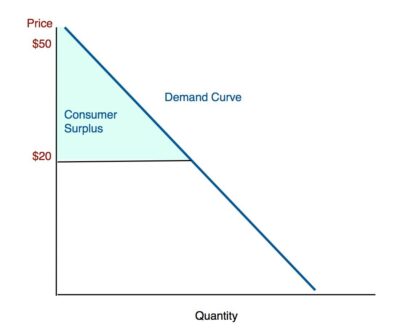
1. Surplus Economies and Capital Flows
Countries with trade surpluses often become major creditors in the global financial system. For example, nations like China and Germany reinvest their trade surpluses by extending credit to deficit economies. While this promotes global liquidity, it can create imbalances in capital flows, requiring policies to manage exposure to high-debt economies.
2. Deficit Economies and Borrowing Risks
Trade deficits increase a nation’s reliance on external financing to fund imports. This dependence can lead to higher credit risks, particularly if the deficit persists and debt levels become unsustainable. Credit policies in deficit economies often focus on attracting foreign investment and managing debt repayment structures to avoid default.
3. Policy Responses to Imbalances
Policymakers may implement measures to address trade imbalances that indirectly influence credit policies. For instance, imposing tariffs to reduce imports can impact the creditworthiness of import-reliant businesses, while currency devaluations to boost exports may increase the cost of servicing foreign-denominated debt.
The Role of Global Supply Chains in Shaping Credit Policies
The expansion of global supply chains has significantly impacted credit risk management, introducing new complexities that influence the design and implementation of credit policies. As businesses operate across borders and rely on interconnected networks, lenders must adapt their strategies to address the unique risks and challenges associated with these supply chains.
Businesses engaged in global supply chains often require extended credit terms to finance activities such as production, shipping, and inventory management. These longer payment cycles present additional risks for lenders, including potential delays or disputes between supply chain participants. Credit policies must account for these extended timelines by incorporating measures to manage the risks and ensure that financing remains viable throughout the supply chain process.
Operating within global supply chains means navigating multiple countries, each with its own regulatory frameworks, economic conditions, and political environments. Credit policies must address the inherent risks associated with multijurisdictional operations, such as legal disputes, fluctuations in currency values, and geopolitical instability. These factors can disrupt supply chain financing and increase the likelihood of credit defaults, requiring lenders to implement comprehensive risk assessment and mitigation strategies tailored to specific regions.
To support the financial stability of supply chain participants, lenders have developed innovative solutions like supplier financing and reverse factoring. These tools allow suppliers to access early payments for their invoices, improving cash flow and reducing credit risk for upstream partners. By enabling suppliers to manage their working capital more effectively, these financing mechanisms help stabilize the broader supply chain and minimize disruptions caused by financial stress.
Advancements in technology, such as blockchain and real-time data analytics, are revolutionizing credit risk management within global supply chains. Blockchain enhances transparency by providing an immutable record of transactions, while real-time analytics offer actionable insights into financial and operational performance. These technologies streamline credit processes, reduce inefficiencies, and enable lenders to make informed decisions based on accurate, up-to-date information.
Global supply chains have transformed credit policies, requiring financial institutions to address extended credit terms, multijurisdictional risks, and evolving financing needs. By leveraging technological advancements and innovative solutions, lenders can navigate the complexities of global supply chains while mitigating credit risks and fostering stability in international trade networks.
Challenges in Managing Cross-Border Credit Risk
Despite the opportunities created by international trade and financial globalization, managing credit risk in cross-border transactions remains challenging.
1. Geopolitical Uncertainty
Political instability, trade wars, and sanctions can disrupt credit flows and increase default risks in certain regions. Credit policies must incorporate contingency plans to address these risks.
2. Regulatory Divergences
Varying regulatory frameworks across countries create inconsistencies in credit risk assessments and enforcement mechanisms. Harmonizing credit policies across jurisdictions remains a complex task.
3. Cultural and Legal Differences
Cultural attitudes toward debt and differences in legal systems can impact repayment behavior and dispute resolution, requiring lenders to tailor credit policies to specific markets.
International trade and financial globalization have profoundly influenced credit policies, reshaping how credit is extended and managed across borders. Trade agreements and financial integration have expanded access to credit, fostered competition, and promoted innovative financing solutions. At the same time, challenges such as trade imbalances, global supply chain risks, and geopolitical uncertainties necessitate robust credit policies to mitigate risks and ensure stability.
As globalization deepens, the role of credit policies will continue to evolve, balancing the need for economic growth with the imperative of risk management. Financial institutions, policymakers, and international organizations must work collaboratively to develop adaptive, transparent, and resilient credit frameworks that support sustainable global commerce.
Regulatory Harmonization and Divergence
Regulatory harmonization plays a critical role in creating a stable global financial environment, particularly in cross-border credit policies. International organizations such as the International Monetary Fund (IMF) and the Basel Committee on Banking Supervision work to standardize credit regulations, fostering consistency and reducing systemic risks in international financial transactions. However, significant challenges arise from the differing regulatory frameworks across nations, complicating efforts to create a unified global approach to credit risk management.

The Role of International Organizations
Organizations like the IMF and Basel Committee aim to promote financial stability by establishing common standards and best practices for credit regulations. The Basel Committee, for instance, has introduced frameworks like Basel III, which sets guidelines for capital adequacy, liquidity, and risk management in banks. These standards ensure that financial institutions maintain sufficient buffers to absorb shocks and prevent cascading failures.
The IMF complements these efforts by providing policy advice, technical assistance, and financial support to member countries, helping them align their credit regulations with international norms. By encouraging regulatory convergence, these organizations create a level playing field for financial institutions, facilitating smoother cross-border transactions and reducing the potential for regulatory arbitrage, where institutions exploit differences in national regulations for financial gain.
Challenges of Regulatory Divergence
Despite these efforts, significant regulatory divergence persists due to variations in national priorities, economic conditions, and legal systems. Countries may interpret international guidelines differently, leading to inconsistencies in implementation. For example, while Basel III has been adopted widely, the pace and scope of its implementation vary across jurisdictions, creating uneven regulatory environments.
These divergences pose challenges for financial institutions engaged in cross-border lending. Varying requirements for capital reserves, reporting standards, or risk assessments can increase compliance costs and operational complexities. Additionally, regulatory misalignments may create competitive disadvantages for institutions operating in stricter jurisdictions compared to those in more lenient ones.
Furthermore, political and cultural differences can exacerbate regulatory fragmentation. Nations with protectionist tendencies may resist harmonization efforts to safeguard domestic industries, while emerging economies might prioritize growth over stringent regulatory compliance.
Regulatory harmonization is vital for fostering stability and reducing risks in global financial systems, yet differing national frameworks present significant obstacles. Balancing international standardization with local needs remains a critical challenge. Continued collaboration among international organizations, governments, and financial institutions is essential to bridging these gaps, ensuring a more cohesive and resilient global credit system.
Technological Innovations in Cross-Border Credit Management
Technological advancements have revolutionized cross-border credit management, making international lending more efficient, transparent, and accessible. Innovations such as blockchain, artificial intelligence (AI), and digital platforms are transforming how credit processes are conducted, reducing inefficiencies, and enabling financial institutions to navigate the complexities of global lending more effectively.

Blockchain Technology: Enhancing Transparency and Security
Blockchain technology has emerged as a game-changer in cross-border credit management. Its decentralized and immutable ledger system ensures that transactions are secure, transparent, and tamper-proof. Blockchain simplifies processes like loan documentation, payment tracking, and collateral verification, providing all parties with real-time access to transaction details. This transparency reduces the risks of fraud and disputes, which are common challenges in international lending.
For example, smart contracts powered by blockchain can automate loan agreements by executing predefined terms once conditions are met. This reduces the need for intermediaries, accelerating transaction timelines and cutting costs. Additionally, blockchain ensures compliance by maintaining an auditable record of transactions, facilitating adherence to regulatory requirements across jurisdictions.
Artificial Intelligence: Enhancing Decision-Making and Risk Assessment
AI and machine learning are transforming risk assessment and decision-making in cross-border lending. These technologies analyze vast datasets, including borrower credit histories, market trends, and macroeconomic indicators, to predict creditworthiness with greater accuracy. AI models can adapt to new data in real-time, allowing lenders to respond dynamically to changing economic conditions.
AI also enables fraud detection and anomaly monitoring, flagging irregularities in transaction patterns that may indicate potential risks. By automating these processes, financial institutions can reduce human error and improve operational efficiency, ensuring that credit decisions are both faster and more reliable.
Digital Platforms: Reducing Costs and Expanding Access
Digital lending platforms facilitate cross-border credit by connecting borrowers and lenders directly, bypassing traditional banking intermediaries. These platforms streamline loan origination, documentation, and disbursement processes, significantly reducing transaction costs. Additionally, they expand access to credit by leveraging alternative data sources to assess creditworthiness, enabling underserved populations to participate in global financial systems.
For instance, fintech platforms allow small and medium-sized enterprises (SMEs) in emerging markets to access international financing, fostering economic inclusion and growth. With user-friendly interfaces and efficient workflows, these platforms enhance borrower experience and lender confidence.
Technological innovations like blockchain, AI, and digital platforms are reshaping cross-border credit management by enhancing transparency, reducing transaction costs, and streamlining processes. These advancements empower financial institutions to navigate the complexities of international lending while fostering a more inclusive and efficient global financial ecosystem.

Case Study: HSBC and Blockchain in Cross-Border Credit Management
One notable example of technological innovation in cross-border credit management is HSBC’s adoption of blockchain technology to streamline international trade financing. HSBC pioneered the use of blockchain for a live trade finance transaction in 2018, facilitating a letter of credit between Cargill, a U.S.-based agribusiness, and a buyer in Asia. This transaction marked a significant advancement in how cross-border credit processes are managed.
The transaction utilized the Voltron blockchain platform, designed specifically for trade finance. By digitizing the letter of credit process, the platform reduced the time required for document verification and approval from 5–10 days to just 24 hours. This efficiency was achieved through the secure and transparent sharing of documents among all parties involved, including banks, buyers, sellers, and shipping companies.
Blockchain ensured that all participants had real-time access to the transaction’s progress, reducing the risk of disputes and delays. Additionally, the technology eliminated the need for physical paperwork and intermediaries, resulting in substantial cost savings. These benefits underscored the potential of blockchain to revolutionize traditional trade finance, which has historically been burdened by inefficiencies and high costs.
Following the success of this pilot transaction, HSBC expanded its use of blockchain for trade finance, demonstrating the scalability of the technology. The bank has since partnered with other financial institutions to create a blockchain-based trade finance network, aiming to bring similar efficiencies to a broader range of cross-border credit activities.
This example highlights how blockchain can address key challenges in cross-border credit management, such as transparency, inefficiencies, and transaction costs. By leveraging blockchain, HSBC and its partners have streamlined the flow of credit across borders, fostering greater trust and reliability in international trade finance.
HSBC’s blockchain initiative is a real-world demonstration of how cutting-edge technology can transform cross-border credit management. It exemplifies the potential of innovations like blockchain to enhance transparency, reduce costs, and streamline processes, ultimately enabling financial institutions to meet the demands of an increasingly interconnected global economy.

Exercise 1.5: Global Credit Policy Scenarios
To reinforce understanding of how globalization impacts cross-border credit policies through collaborative discussion and practical application.
1. Form Pairs:
Participants pair up to analyze a real-world scenario related to cross-border credit policies.
2. Scenario Assignment:
Each pair is assigned one of the following scenarios:
• Scenario 1: A multinational company faces challenges securing credit due to differing regulatory standards in two countries.
• Scenario 2: A small business in an emerging market needs cross-border credit to expand but faces currency fluctuation risks.
• Scenario 3: A trade surplus nation reinvests its surplus into loans for a deficit economy, creating potential trade imbalances.
• Scenario 4: A global supply chain is disrupted by geopolitical tensions, increasing credit default risks for upstream suppliers.
3. Discussion Points:
Each pair discusses:
• What are the key challenges in the scenario?
• Which strategies (e.g., regulatory harmonization, hedging, technological solutions) could address the issues?
• How might international organizations or innovative tools play a role in resolving the problem?
4. Pair Presentations:
Each pair presents their scenario and proposed solutions to the group, fostering a collaborative discussion.
The facilitator summarizes the exercise, highlighting key insights and connections to real-world credit policy dynamics. Emphasis is placed on the importance of balancing risks and opportunities in a globalized financial system.

Course Manual 6: Digital Transformation and Credit
Digital transformation has profoundly reshaped the financial landscape, revolutionizing how credit is managed, assessed, and distributed. Technologies such as digital payment systems, artificial intelligence (AI), and blockchain are at the forefront of this evolution, driving efficiency, transparency, and accessibility in credit policies and risk management. These innovations not only streamline traditional credit processes but also expand access to underserved populations, fostering financial inclusion on a global scale.
Digital payment systems facilitate real-time transactions, enhancing the speed and reliability of credit repayments while reducing defaults. AI, on the other hand, provides sophisticated tools for credit scoring, risk assessment, and fraud detection, offering unprecedented accuracy and efficiency. Blockchain technology further transforms credit management by introducing immutable records and automating agreements through smart contracts, reducing operational costs and enhancing trust between stakeholders.
However, this digital revolution is not without its challenges. Issues such as cybersecurity threats, data privacy concerns, and regulatory uncertainties pose significant risks that must be addressed to fully harness the potential of digital technologies in credit management. As financial institutions, regulators, and technology providers navigate these challenges, the integration of digital solutions continues to shape the future of credit.
This discussion explores the multifaceted impact of digital transformation on credit policies and risk management, highlighting its potential to revolutionize the industry while addressing the challenges it brings.
The Role of Digital Payment Systems in Credit Management
Digital payment systems have revolutionized credit management, transforming how borrowers repay loans and how lenders handle credit flows. By leveraging real-time payment technologies, these systems enhance the efficiency, reliability, and transparency of credit repayment processes. They also play a vital role in reducing defaults and improving liquidity, benefiting both lenders and borrowers.
Real-time payment systems allow for instantaneous fund transfers between borrowers and lenders, eliminating the delays inherent in traditional payment methods. This immediacy has significantly improved the repayment process, ensuring borrowers can meet their obligations on time and reducing the risk of late payments. For example, borrowers can automate recurring loan payments through digital platforms, minimizing the chance of missed deadlines. This automation not only reduces administrative burdens for lenders but also enhances the borrower experience, fostering trust and convenience.
One of the key advantages of digital payment systems is their ability to provide real-time updates on transaction statuses. This transparency simplifies the reconciliation process, reducing errors and potential disputes. Borrowers also benefit from immediate confirmation of their payments, which promotes accountability and confidence in the credit system. Moreover, these systems offer borrowers flexibility by supporting various repayment options, such as mobile wallets, online banking, and direct debit. This accessibility ensures that even borrowers in remote or underserved areas can fulfill their obligations conveniently.
Digital payment systems also help reduce defaults and enhance liquidity, which are critical challenges in credit management. Automated reminders and notifications integrated into many platforms prompt borrowers to make payments before due dates, reducing the likelihood of penalties and defaults. These proactive measures ensure borrowers maintain good credit standing, ultimately lowering default rates across portfolios.
For lenders, real-time payments improve liquidity by accelerating the flow of funds into their accounts. This enables financial institutions to reinvest funds, disburse new loans, and meet operational expenses more efficiently. Additionally, advanced digital payment systems often incorporate predictive analytics to identify borrowers at risk of default. By analyzing repayment patterns, lenders can offer targeted interventions, such as flexible repayment plans or financial counseling, to mitigate potential risks.
Digital payment systems have redefined credit management by streamlining repayment processes, reducing defaults, and enhancing liquidity. Their ability to provide real-time efficiency and proactive risk management makes them indispensable for modern financial institutions. As these technologies evolve, they will continue to shape a more inclusive, efficient, and resilient financial ecosystem. Institutions that embrace these innovations are well-positioned to strengthen borrower relationships and improve credit portfolio performance.
AI-Driven Credit Scoring and Risk Assessment
Artificial intelligence (AI) has become a transformative force in credit scoring and risk assessment, enabling financial institutions to evaluate creditworthiness with unprecedented accuracy and efficiency. By leveraging machine learning (ML) algorithms and predictive analytics, lenders can better understand borrower behavior, identify potential risks, and make data-driven decisions. These advanced tools are not only streamlining traditional credit evaluation processes but also improving access to credit for underserved populations while mitigating risks for lenders.

Case Study: Zest AI and AI-Driven Credit Scoring
Zest AI, a fintech company based in California, has revolutionized credit scoring and risk assessment by leveraging machine learning (ML) and artificial intelligence (AI). Traditional credit models rely on limited data points such as FICO scores, income, and debt levels, often excluding individuals with no formal credit history. Zest AI’s advanced algorithms address this limitation by analyzing diverse data sources, including utility payments, rent history, and employment records. This approach enables lenders to evaluate creditworthiness more comprehensively, fostering financial inclusion by expanding access to credit for underserved populations.
The company’s AI-driven models not only broaden access to credit but also mitigate risks through predictive analytics. By identifying patterns in borrower behavior, Zest AI’s tools can flag potential risks early, allowing lenders to take proactive measures such as adjusting repayment plans or offering financial counseling. These interventions have proven effective in reducing default rates, with some lenders reporting up to a 30% decrease. Furthermore, the speed and efficiency of AI have significantly shortened loan processing times, enabling near-instantaneous approvals for qualified borrowers.
Zest AI’s impact is reflected in tangible success metrics. Lenders using the platform have seen a 15-20% increase in loan approvals for low-risk borrowers, alongside substantial reductions in defaults. The platform’s ability to combine alternative data sources with real-time analytics makes it a valuable tool for improving decision-making, reducing operational costs, and strengthening customer relationships.
This real-world example highlights the transformative potential of AI in credit scoring and risk management. By addressing traditional limitations and promoting financial inclusion, Zest AI demonstrates how advanced technologies can create a more efficient, accurate, and equitable credit ecosystem.
Machine Learning in Creditworthiness Evaluation
Machine learning is at the heart of AI-driven credit scoring, offering innovative methods to assess an individual’s or business’s ability to repay loans. Traditional credit scoring models rely heavily on static data points, such as credit history, income levels, and debt-to-income ratios. While effective to an extent, these models often fail to capture the nuances of borrower behavior or adapt to changing circumstances.
ML algorithms overcome these limitations by analyzing vast amounts of data from diverse sources, including nontraditional metrics such as utility payments, mobile transaction histories, and social media activity. These algorithms continuously learn from new data, refining their accuracy over time. For example, an ML model might consider payment behaviors, transaction patterns, and even economic trends to evaluate creditworthiness dynamically.
This approach is particularly beneficial for individuals or small businesses with limited or no formal credit history. Traditional systems often exclude such populations due to a lack of data, while ML models can analyze alternative data points to determine creditworthiness, expanding financial inclusion. By leveraging AI-driven tools, lenders can offer fairer, more inclusive access to credit without compromising risk management.
Predictive Analytics for Risk Mitigation
AI-driven predictive analytics goes beyond evaluating creditworthiness; it proactively identifies and mitigates potential risks. By analyzing historical data and identifying patterns, predictive models can foresee scenarios where borrowers might struggle to meet their obligations. This foresight allows lenders to take preemptive actions, such as adjusting loan terms or offering financial counseling, to prevent defaults.
For instance, AI can monitor a borrower’s financial activity in real time, flagging changes that might indicate financial stress, such as a sudden drop in income or irregular repayment behavior. These insights enable lenders to intervene early, reducing default rates and protecting their loan portfolios.
Predictive analytics also aids in macro-level risk management by identifying broader market trends that may impact credit risks. For example, during an economic downturn, predictive models can assess which sectors or borrower groups are most vulnerable, allowing financial institutions to adjust their strategies accordingly. By combining micro-level borrower insights with macroeconomic analysis, predictive analytics provides a comprehensive risk mitigation framework.
Advantages of AI-Driven Credit Scoring and Risk Assessment
1. Enhanced Accuracy:
AI models can process and analyze significantly more data than traditional methods, improving the accuracy of credit scoring and risk predictions. This reduces the likelihood of misjudging a borrower’s creditworthiness.
2. Speed and Efficiency:
AI-driven systems can evaluate credit applications in seconds, significantly reducing the time required for manual reviews. This efficiency benefits both lenders and borrowers, ensuring faster access to credit.
3. Customization:
AI enables the creation of highly tailored credit products based on an individual’s financial behavior and needs. This personalization increases customer satisfaction while maintaining risk controls.
4. Cost Savings:
Automation reduces operational costs for lenders by minimizing the need for extensive manual processing and human intervention. This cost efficiency can be passed on to borrowers in the form of lower interest rates or fees.
5. Fraud Detection:
AI and ML are highly effective in identifying fraudulent activities. By analyzing transaction patterns and anomalies, these systems can flag suspicious behavior, protecting lenders and borrowers from potential fraud.
Challenges and Ethical Considerations
While AI-driven credit scoring offers numerous benefits, it also presents challenges and ethical concerns that require careful management.
1. Data Privacy:
The extensive use of personal and alternative data raises concerns about privacy and data protection. Financial institutions must ensure compliance with data protection regulations, such as GDPR and CCPA, to safeguard borrower information.
2. Bias in Algorithms:
AI models are only as unbiased as the data they are trained on. Historical biases in credit data can lead to discriminatory outcomes, particularly against marginalized groups. Ensuring fairness and transparency in AI algorithms is crucial to building trust.
3. Regulatory Challenges:
The rapid adoption of AI-driven tools often outpaces regulatory frameworks, creating uncertainty for financial institutions. Clear guidelines and oversight are needed to ensure ethical and effective use of AI in credit evaluation.
4. Overreliance on Technology:
While AI offers remarkable accuracy, it is not infallible. Overreliance on AI systems without human oversight can lead to errors or unintended consequences in credit decision-making.
The Future of AI in Credit Risk Management
The integration of AI and ML in credit scoring and risk assessment is set to deepen as these technologies evolve. Innovations such as explainable AI (XAI) are addressing transparency concerns by providing clear explanations for credit decisions, making these systems more accountable. Additionally, the use of blockchain technology in conjunction with AI is enhancing data security and fraud prevention.
As AI-driven tools become more sophisticated, they will likely play an even greater role in fostering financial inclusion, improving risk management, and driving operational efficiency. However, achieving this potential requires collaboration between financial institutions, technology providers, and regulators to address challenges and ensure responsible implementation.
AI-driven credit scoring and risk assessment represent a paradigm shift in how financial institutions evaluate creditworthiness and manage risks. By leveraging machine learning and predictive analytics, lenders can make faster, more accurate decisions, reduce risks, and expand credit access. Despite challenges such as data privacy and algorithmic bias, the transformative potential of AI in credit management is undeniable. With ongoing innovation and responsible governance, AI will continue to shape a more inclusive and efficient financial ecosystem.
Blockchain and Smart Contracts in Credit Policies
Blockchain technology and smart contracts are transforming credit policies, offering innovative solutions to enhance transparency, reduce inefficiencies, and build trust in financial systems. By leveraging the decentralized nature of blockchain and the self-executing capabilities of smart contracts, financial institutions can streamline credit agreements and improve risk management. These advancements are redefining traditional credit practices, fostering greater efficiency, and addressing longstanding challenges in the industry.
Enhancing Transparency and Trust Through Blockchain-Ledger Systems
At its core, blockchain is a distributed ledger technology that records transactions in a secure, immutable, and transparent manner. This inherent transparency is particularly beneficial in credit policies, where trust between lenders and borrowers is crucial.
Blockchain eliminates the need for intermediaries by providing a shared, tamper-proof record of transactions accessible to all parties involved. This ensures that every action related to a credit agreement—such as loan issuance, repayment, or collateral management—is visible and verifiable in real time. For instance, when a borrower makes a payment, the blockchain ledger updates automatically, providing immediate proof of the transaction to both the borrower and lender.
This transparency reduces disputes and fraud, as all data on the blockchain is cryptographically secured and cannot be altered retroactively. Furthermore, it fosters confidence among stakeholders, particularly in cross-border credit arrangements, where differing regulations and potential legal complexities can create uncertainty. Blockchain’s ability to provide a single, trusted source of truth simplifies compliance and audit processes, strengthening the overall integrity of credit systems.
Automating Credit Agreements With Smart Contracts
Smart contracts are self-executing contracts embedded with pre-defined terms and conditions, programmed to trigger specific actions automatically when certain criteria are met. Integrated with blockchain, smart contracts have significant potential to revolutionize credit policies by automating various aspects of credit agreements.
For example, a smart contract could automatically release loan funds to a borrower once all required documentation is verified on the blockchain. Similarly, it could deduct payments directly from the borrower’s account on agreed-upon dates or impose penalties in case of late payments. These automated processes reduce the need for manual intervention, minimizing human error and operational delays.
The efficiency of smart contracts extends to collateral management as well. If a borrower defaults, a smart contract can instantly initiate the transfer of pledged assets to the lender without the need for lengthy legal proceedings. This streamlining of credit agreements not only saves time and resources but also ensures swift resolution of disputes.
Reducing Inefficiencies and Costs
Blockchain and smart contracts significantly reduce inefficiencies in credit processes by eliminating intermediaries, automating workflows, and ensuring real-time updates. These innovations cut down administrative costs, which are often a major expense in traditional credit management. For instance, manual document verification, loan processing, and payment tracking can be replaced with automated blockchain systems, allowing financial institutions to allocate resources more effectively.
Additionally, the decentralized nature of blockchain eliminates reliance on central authorities, making cross-border lending more accessible and cost-effective. Smart contracts facilitate seamless interactions between parties from different jurisdictions, enabling faster loan approvals and disbursements.
Challenges and Considerations
Despite their potential, blockchain and smart contracts face challenges that need to be addressed for widespread adoption. Scalability issues, high energy consumption, and regulatory uncertainties are significant barriers. Moreover, smart contracts require precise programming, as errors in the code can lead to unintended consequences. Collaboration between financial institutions, technology providers, and regulators is essential to overcoming these obstacles.
Blockchain and smart contracts are transforming credit policies by enhancing transparency, building trust, and automating key processes. These technologies address inefficiencies in traditional credit systems, offering faster, more secure, and cost-effective solutions for lenders and borrowers alike. While challenges remain, their potential to revolutionize the financial industry is undeniable. As adoption grows and frameworks evolve, blockchain and smart contracts will play an increasingly pivotal role in shaping the future of credit management.

Exercise 1.6: Reflection Exercise – Exploring the Impact of Digital Transformation on Credit Management
Take 10 minutes to reflect on the following questions. Write your thoughts in a journal or discuss them with a partner:
1. Digital Payment Systems:
• How do real-time payment systems improve the credit repayment process for both borrowers and lenders?
• What benefits do automated payments bring to the overall efficiency of credit management?
• Can you think of a situation where digital payment systems might encounter limitations or challenges?
2. AI in Credit Scoring and Risk Assessment:
• How does AI improve access to credit for underserved populations?
• What are the key ethical considerations when using AI for credit scoring?
• Imagine you are a lender; how would you use AI insights to prevent defaults in your loan portfolio?
3. Blockchain and Smart Contracts:
• How does blockchain enhance transparency and trust in credit agreements?
• What benefits do smart contracts bring to automating credit agreements?
• What risks or challenges might arise in using blockchain for cross-border credit transactions?

Course Manual 7: Regulation and Compliance in Credit Policies
Regulation and compliance are critical pillars of credit policy frameworks, ensuring stability, transparency, and trust in financial systems. Credit policies govern how financial institutions extend and manage credit, influencing lending practices and risk management. Regulatory frameworks and compliance requirements establish the boundaries within which these policies operate, protecting stakeholders and minimizing systemic risks.
Global financial crises, such as the 2008 recession, underscore the importance of robust regulatory oversight in maintaining economic stability. Regulatory bodies, including central banks and international organizations like the Basel Committee, create guidelines to mitigate risks and promote resilience in credit markets. These frameworks aim to prevent predatory lending, ensure fair access to credit, and maintain the integrity of financial systems.
Compliance with these regulations is essential for financial institutions to operate effectively and ethically. Adherence to anti-money laundering (AML) laws, data privacy requirements, and capital adequacy standards not only ensures legal operation but also strengthens customer trust. Failure to comply can result in financial penalties, reputational damage, and systemic risks.
In today’s globalized and digitized economy, the complexity of regulatory environments is increasing. Financial institutions must navigate diverse national and international regulations while leveraging advanced technologies to manage compliance efficiently. This discussion explores the intricate relationship between regulation, compliance, and credit policies, emphasizing their role in fostering a stable and trustworthy financial ecosystem.
The Role of Regulatory Frameworks in Credit Policies
Regulatory frameworks are integral to shaping credit policies, ensuring that financial institutions operate within boundaries that promote stability, transparency, and accountability. These frameworks are designed to protect the interests of stakeholders, mitigate systemic risks, and uphold the integrity of financial markets. By influencing lending practices and credit management, regulations play a crucial role in maintaining economic stability and preventing financial crises.
Key Regulations Influencing Credit Policies
One of the most prominent regulatory frameworks influencing credit policies is Basel III, developed by the Basel Committee on Banking Supervision. Basel III is a global regulatory standard aimed at strengthening bank capital requirements, improving risk management, and enhancing financial stability. It was introduced in the aftermath of the 2008 financial crisis, which exposed significant weaknesses in the global financial system.
Basel III mandates that banks maintain higher levels of capital adequacy to absorb potential losses. This includes stricter requirements for Tier 1 capital (the core capital of a bank) and the introduction of capital conservation buffers to protect banks during periods of economic stress. By requiring institutions to hold more robust capital reserves, Basel III ensures that banks are better equipped to withstand financial shocks.
Another critical aspect of Basel III is the liquidity coverage ratio (LCR), which mandates that banks maintain sufficient high-quality liquid assets to cover their cash outflows over a 30-day period of financial stress. This requirement enhances banks’ ability to manage short-term liquidity crises, reducing the likelihood of disruptions to credit availability.
Additionally, the net stable funding ratio (NSFR) focuses on ensuring that banks maintain a stable funding profile relative to their assets and off-balance-sheet activities. This measure prevents excessive reliance on short-term funding, promoting long-term financial stability.
Other regulatory frameworks also contribute to shaping credit policies. For instance, anti-money laundering (AML) and know-your-customer (KYC) regulations require financial institutions to verify the identity of their clients and monitor transactions for suspicious activity. These measures prevent illicit activities such as money laundering and fraud, reinforcing trust in the financial system.
Influence on Lending Practices
Regulatory frameworks directly impact how financial institutions extend credit. For example, capital adequacy requirements influence the amount of credit banks can offer, as institutions must balance lending with maintaining sufficient capital reserves. This creates a more cautious lending environment, particularly for high-risk borrowers or sectors.
In addition, regulations like Basel III encourage more prudent risk management by requiring banks to evaluate the riskiness of their loan portfolios. Institutions are incentivized to diversify their lending activities, avoid excessive exposure to specific industries, and prioritize lending to low-risk clients. These practices not only reduce default rates but also enhance the overall stability of the credit system.
Regulations also shape the terms of credit agreements, including interest rates, repayment schedules, and collateral requirements. By enforcing transparency and fairness in credit contracts, regulatory frameworks protect borrowers from predatory lending practices, ensuring equitable access to credit.
Addressing Systemic Risks
Systemic risks refer to the potential for disruptions within the financial system to trigger widespread economic instability. Regulatory frameworks are designed to mitigate these risks by promoting resilience within financial institutions and markets.
1. Preventing Overleveraging
Overleveraging, where financial institutions take on excessive debt relative to their equity, is a significant contributor to systemic risks. Regulatory measures like capital adequacy requirements limit the extent to which banks can leverage their assets, ensuring that they remain solvent even during economic downturns.
2. Mitigating Contagion Effects
Systemic risks often arise from the interconnectedness of financial institutions. A failure in one bank can cascade through the system, impacting other institutions and markets. Regulatory frameworks address this by requiring robust risk management practices and regular stress testing to assess the resilience of financial institutions to adverse scenarios.
3. Enhancing Transparency
Transparency is critical for identifying and addressing systemic risks. Regulations mandate the disclosure of financial statements, risk exposures, and lending practices, allowing regulators and market participants to monitor the health of financial institutions and take proactive measures to mitigate risks.
Promoting Financial Stability
By addressing systemic risks, regulatory frameworks promote the long-term stability of financial systems. Stable credit markets are essential for economic growth, as they provide businesses and consumers with the financing needed for investments, operations, and consumption.
Building Resilience:Regulatory measures like stress testing and scenario analysis ensure that financial institutions are prepared for economic downturns. These tools simulate adverse conditions, such as recessions or interest rate hikes, to evaluate the resilience of banks and other lenders. Institutions that fail these tests are required to strengthen their risk management practices, enhancing the overall robustness of the financial system.
Encouraging Confidence:Confidence is a cornerstone of financial stability. When borrowers, lenders, and investors trust that financial institutions are well-regulated and secure, they are more likely to participate in the credit market. Regulatory frameworks foster this confidence by ensuring that institutions operate transparently and ethically.
Fostering Economic Growth:Financial stability creates an environment conducive to economic growth. Businesses can access financing for expansion, consumers can secure loans for significant purchases, and governments can fund infrastructure projects. By maintaining stability, regulatory frameworks enable credit systems to support broader economic objectives.
Regulatory frameworks play a vital role in shaping credit policies, ensuring that financial institutions operate responsibly and mitigate systemic risks. Key regulations like Basel III establish standards for capital adequacy, liquidity management, and risk assessment, fostering resilience within the financial system. These frameworks influence lending practices, promoting prudence, transparency, and fairness in credit markets.
By addressing systemic risks and promoting financial stability, regulatory frameworks create a secure foundation for credit systems to support economic growth. However, as financial markets continue to evolve, regulatory bodies must adapt their frameworks to address emerging challenges, such as technological disruptions and globalization. Collaboration between regulators, financial institutions, and other stakeholders will be essential to maintaining trust and stability in the credit ecosystem.
Compliance Requirements for Financial Institutions
Compliance requirements are fundamental to maintaining the integrity, stability, and ethical operation of financial institutions. These regulations establish frameworks to prevent financial crimes, protect consumers, and ensure that institutions operate transparently and responsibly. Key compliance areas, such as anti-money laundering (AML), know-your-customer (KYC), and data protection laws, form the backbone of these efforts. By adhering to these requirements, financial institutions not only meet legal obligations but also foster trust among stakeholders, protect their reputations, and contribute to a stable financial ecosystem.
Critical Compliance Areas
1. Anti-Money Laundering (AML):
AML regulations are designed to prevent financial institutions from being used as conduits for money laundering activities. These laws require institutions to detect, monitor, and report suspicious activities that may indicate the movement of illicit funds. Compliance with AML involves implementing robust systems for tracking and analyzing transactions, training staff to identify red flags, and filing reports such as Suspicious Activity Reports (SARs) with relevant authorities. Failure to comply can result in severe penalties, reputational damage, and even criminal charges.
For example, financial institutions must conduct due diligence on customers to ensure that their funds come from legitimate sources. Transactions involving unusually large sums, complex structures, or high-risk jurisdictions are scrutinized more intensively. These measures disrupt the flow of illicit funds, thereby curbing crimes like terrorism financing, tax evasion, and drug trafficking.
2. Know-Your-Customer (KYC):
KYC processes are critical for verifying the identities of customers and understanding their financial behaviors. These procedures are integral to combating fraud, money laundering, and other financial crimes. KYC requirements mandate institutions to collect and verify personal information such as names, addresses, and identification documents. For businesses, KYC extends to understanding ownership structures and identifying beneficial owners to ensure transparency.
KYC compliance is a dynamic process that extends beyond onboarding. Financial institutions must continuously monitor customer accounts for unusual activities and update records to reflect changes in customer information. By ensuring that they truly “know” their customers, institutions reduce the risk of engaging with high-risk individuals or entities.
3. Data Protection Laws:
In an increasingly digital financial landscape, protecting customer data is paramount. Data protection laws, such as the General Data Protection Regulation (GDPR) in Europe and the California Consumer Privacy Act (CCPA) in the United States, impose stringent requirements on how financial institutions collect, store, and use personal information. These laws mandate explicit customer consent for data usage, require secure storage practices, and enforce transparency regarding data handling.
Noncompliance with data protection laws can lead to significant financial penalties and reputational damage. For instance, breaches exposing customer data not only result in fines but also erode trust in the institution. Financial institutions must implement robust cybersecurity measures, encryption protocols, and regular audits to ensure compliance and safeguard sensitive information.
The Role of Compliance in Ethical Lending Practices
Compliance requirements extend beyond legal mandates; they are essential for fostering ethical lending practices. Adherence to these frameworks ensures that financial institutions operate transparently and equitably, protecting customers from exploitation and promoting trust in the financial system.
1. Preventing Predatory Lending:
Compliance frameworks discourage unethical practices, such as predatory lending, where customers are subjected to unfair terms, exorbitant interest rates, or hidden fees. By enforcing transparency in credit agreements and requiring clear disclosure of terms, regulations protect consumers from exploitation. These measures ensure that borrowers fully understand their obligations, fostering a fair and ethical lending environment.
2. Ensuring Fair Access to Credit:
Compliance requirements promote inclusivity by mandating non-discriminatory lending practices. Financial institutions are prohibited from denying credit based on factors like race, gender, or religion. By ensuring equal access to credit, compliance frameworks help bridge financial gaps and support economic empowerment for marginalized groups.
3. Building Customer Trust:
Ethical lending practices are rooted in transparency and accountability, which are hallmarks of compliance. When customers see that financial institutions adhere to regulations, they gain confidence in the system. This trust translates into stronger relationships, improved customer retention, and a positive reputation for the institution.
Preventing Financial Crimes Through Compliance
Compliance is a critical tool for preventing financial crimes that can undermine the integrity of the financial system. Institutions that adhere to regulations play a key role in deterring, detecting, and addressing illicit activities.
Robust compliance systems enable institutions to monitor transactions in real-time, identifying anomalies that may indicate fraud. For example, advanced analytics tools can flag patterns of behavior, such as rapid account activity or multiple transactions just below reporting thresholds, as potential signs of criminal activity.
AML and KYC requirements help institutions identify and mitigate risks associated with money laundering and terrorism financing. By implementing enhanced due diligence for high-risk clients and collaborating with international organizations, financial institutions contribute to global efforts to combat these crimes.
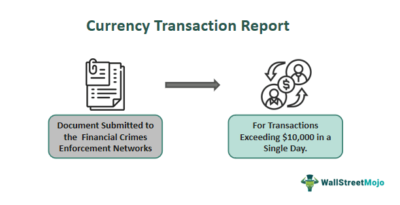
Transparency is critical in the fight against financial crimes. Compliance frameworks mandate reporting mechanisms, such as SARs and Currency Transaction Reports (CTRs), ensuring that suspicious activities are promptly flagged to authorities. This collaboration between institutions and regulators enhances the overall integrity of financial systems.
While compliance is essential, it presents challenges for financial institutions. The evolving regulatory landscape requires continuous adaptation, which can be resource-intensive. Institutions must invest in technology, staff training, and compliance systems to meet requirements effectively. Balancing compliance with operational efficiency is a persistent challenge, particularly for smaller institutions with limited resources.
Compliance requirements are fundamental to the ethical and secure operation of financial institutions. Critical areas such as AML, KYC, and data protection laws establish frameworks that safeguard against financial crimes, protect customers, and promote trust in the financial system. By adhering to these regulations, institutions ensure fair and transparent lending practices, contributing to the stability and integrity of the financial ecosystem.
However, compliance is not without its challenges. The dynamic nature of regulations necessitates ongoing investment in technology and training. Financial institutions must strike a balance between meeting compliance requirements and maintaining operational efficiency. As regulatory landscapes evolve, robust compliance frameworks will remain essential to navigating the complexities of modern finance and ensuring the long-term sustainability of credit systems.
The Importance of Regulation and Compliance for Trust and Stability
Regulation and compliance are foundational to the trust and stability of financial systems, particularly in the realm of credit policies. These mechanisms ensure that financial institutions operate transparently, ethically, and responsibly, fostering confidence among customers, stakeholders, and investors. Moreover, by mitigating systemic risks and promoting sustainable practices, regulation and compliance play a critical role in ensuring long-term economic resilience.
Building Customer Confidence Through Transparent and Fair Credit Practices
Customer trust is a cornerstone of successful financial systems. Transparent and fair credit practices, enforced through robust regulation and compliance frameworks, are essential for building and maintaining this trust.
Transparency in credit practices ensures that borrowers clearly understand the terms and conditions of their loans. Regulations mandate financial institutions to provide detailed disclosures about interest rates, fees, repayment schedules, and penalties. This openness prevents predatory lending practices, where borrowers are misled or charged exorbitant rates, and fosters an equitable relationship between lenders and borrowers. Customers who feel informed and respected are more likely to trust and engage with financial institutions.
Compliance also enforces fairness in credit distribution, prohibiting discrimination based on factors like race, gender, or religion. By promoting equal access to credit, regulatory frameworks help bridge financial gaps and empower underserved populations. This inclusivity not only builds trust but also strengthens the social and economic fabric of communities.
Furthermore, adherence to data protection regulations, such as the General Data Protection Regulation (GDPR), enhances customer confidence. Protecting sensitive information from breaches and unauthorized access demonstrates a commitment to safeguarding customer interests. In an era where data privacy concerns are paramount, institutions that comply with these regulations position themselves as trustworthy custodians of customer information.
Ensuring Long-Term Economic Resilience Through Risk Mitigation
Regulation and compliance are vital for mitigating risks that could destabilize financial systems and economies. By addressing potential vulnerabilities, these frameworks contribute to long-term economic resilience.
One of the primary objectives of regulation is to prevent systemic risks—situations where the failure of one financial institution or sector triggers widespread instability. Compliance with measures like capital adequacy requirements, liquidity ratios, and stress testing ensures that financial institutions maintain sufficient buffers to withstand economic shocks. For example, frameworks like Basel III were designed to enhance the resilience of banks after the 2008 financial crisis, which exposed the dangers of inadequate risk management.
Additionally, regulations targeting financial crimes, such as anti-money laundering (AML) and know-your-customer (KYC) requirements, protect the integrity of financial systems. These measures prevent illicit activities like money laundering, terrorism financing, and fraud, which can erode trust and destabilize markets. Institutions that adhere to these requirements contribute to a safer, more stable financial environment.
Regulation and compliance also encourage sustainable practices, such as responsible lending and environmental, social, and governance (ESG)-aligned financing. By prioritizing long-term impacts over short-term gains, these practices ensure that financial systems support economic growth without compromising future stability.
Regulation and compliance are indispensable for fostering trust and ensuring the stability of credit systems. Transparent and fair credit practices build customer confidence, while robust risk mitigation measures promote economic resilience. Financial institutions that adhere to these frameworks not only fulfill legal obligations but also position themselves as ethical and reliable partners in the financial ecosystem.
As the financial landscape evolves, the importance of regulation and compliance will only grow. Technological advancements, globalization, and shifting economic dynamics introduce new risks and opportunities that require adaptive regulatory approaches. By maintaining a commitment to transparency, fairness, and stability, financial institutions and regulators can navigate these changes effectively, ensuring the long-term sustainability of credit systems and the broader economy.

Case Study
The introduction of the General Data Protection Regulation (GDPR) in 2018 significantly reshaped how financial institutions manage customer data, especially in credit policies. This regulation emphasizes transparency, accountability, and consumer rights protection, requiring organizations to clearly communicate how personal data is used in credit assessments. Financial institutions must obtain explicit consent for data collection, ensure data minimization, and implement robust security measures to prevent breaches. GDPR also grants individuals greater control over their data, including rights to access and request the deletion of personal information.
Compliance with GDPR has enhanced trust between financial institutions and customers by fostering transparency and safeguarding sensitive data. Institutions that align their credit policies with GDPR standards demonstrate a commitment to ethical practices and consumer protection. Conversely, non-compliance can result in severe financial penalties and reputational damage. By adhering to GDPR, financial institutions not only mitigate regulatory risks but also strengthen customer confidence, creating a more secure and transparent credit ecosystem.

Exercise 1.7: Group Discussion
• Discuss how financial institutions can balance the need for regulatory compliance with the drive for innovation, especially in areas like AI-driven credit scoring and blockchain technology.
• Consider: What challenges arise in integrating new technologies while adhering to existing regulations? How can institutions and regulators collaborate to foster innovation responsibly?

Course Manual 8: Credit Policies During Economic Crises
Economic crises pose significant challenges to financial systems, disrupting credit markets, diminishing liquidity, and increasing the risk of defaults. During these periods, credit policies become critical tools for stabilizing economies, supporting businesses, and fostering recovery. By regulating the flow of credit, policymakers and financial institutions can mitigate economic shocks and lay the groundwork for long-term stability.
The 2008 global financial crisis and the post-COVID-19 recovery highlight the pivotal role of credit policies in navigating downturns. In 2008, the collapse of major financial institutions underscored the importance of robust credit frameworks to prevent systemic risks. Governments and central banks implemented emergency measures, such as lowering interest rates and introducing quantitative easing, to restore confidence and revive lending. Similarly, during the COVID-19 pandemic, unprecedented disruptions prompted policymakers to adopt innovative credit policies, including moratoriums on loan repayments and targeted lending programs, to safeguard livelihoods and stabilize businesses.
These crises demonstrate that credit policies must adapt to unique economic conditions, addressing both immediate challenges and long-term risks. The effectiveness of these policies often depends on timely implementation, coordination among stakeholders, and leveraging lessons from past downturns. This discussion explores key case studies to illustrate how credit policies have shaped economic recovery and resilience during financial crises.
The 2008 Global Financial Crisis: A Turning Point for Credit Policies
The 2008 global financial crisis marked one of the most severe economic downturns since the Great Depression, shaking financial systems worldwide and exposing significant vulnerabilities in credit policies and risk management. The crisis was rooted in systemic risks, credit mismanagement, and the widespread issuance of subprime mortgages. It underscored the need for robust credit frameworks, regulatory oversight, and proactive risk mitigation strategies.
Credit Mismanagement and Systemic Risks
The crisis began in the U.S. housing market, where excessive lending to subprime borrowers—individuals with poor credit histories—created a bubble of unsustainable growth. Financial institutions, driven by profit incentives, issued high-risk loans and bundled them into complex financial instruments like mortgage-backed securities (MBS) and collateralized debt obligations (CDOs). These instruments were sold to investors under the assumption that diversification mitigated risk. However, the underlying assets were highly correlated, and when housing prices began to decline, defaults surged.
Systemic risks were exacerbated by a lack of transparency and regulatory oversight. Institutions relied on flawed credit rating models, underestimating the true risks of these financial instruments. The interconnected nature of global financial markets amplified the crisis, as defaults in the U.S. housing sector triggered a cascade of losses across banks, investment firms, and economies worldwide.
Policy Responses to Stabilize Credit Markets
The U.S. government and central banks worldwide implemented unprecedented measures to stabilize credit markets and restore economic confidence. Key interventions included:
1. TARP (Troubled Asset Relief Program): Enacted in 2008, TARP authorized the U.S. Treasury to purchase distressed assets and inject capital into financial institutions. By acquiring toxic assets, the program aimed to stabilize banks’ balance sheets, restore credit flows, and prevent widespread bank failures. TARP disbursed approximately $475 billion, much of which was eventually repaid as economic conditions improved.
2. Quantitative Easing (QE): The Federal Reserve introduced quantitative easing, a monetary policy tool designed to stimulate lending and investment by increasing the money supply. The Fed purchased long-term securities, such as government bonds and MBS, injecting liquidity into financial markets. This intervention reduced interest rates and encouraged borrowing, helping to revive economic activity.
3. Bank Bailouts: Governments around the world implemented bailouts to rescue systemically important financial institutions. For instance, the U.S. provided emergency funding to firms like AIG, which faced collapse due to its exposure to credit default swaps. These bailouts prevented a domino effect of failures, stabilizing the broader financial system.
4. Global Coordination: International organizations like the International Monetary Fund (IMF) and central banks collaborated to address the crisis’s global impact. Coordinated actions included synchronized interest rate cuts and the provision of emergency loans to struggling economies, demonstrating the importance of collective efforts during financial turmoil.
Lessons Learned for Credit Risk Management and Systemic Stability
The 2008 crisis served as a wake-up call for policymakers, financial institutions, and regulators, highlighting critical gaps in credit risk management and the need for systemic reforms. Key takeaways include:
The Importance of Robust Credit Risk Assessment: The crisis revealed the dangers of inadequate credit evaluations and overreliance on flawed models. Financial institutions learned to adopt more comprehensive risk assessment frameworks, incorporating stress testing, scenario analysis, and real-time monitoring to identify potential vulnerabilities.
Enhanced Regulatory Frameworks: In response to the crisis, global regulatory bodies introduced reforms to strengthen financial stability. The Basel III framework, for example, established stricter capital adequacy requirements, liquidity standards, and risk management practices. These measures aim to ensure that banks are better equipped to absorb losses and withstand economic shocks.
Addressing Systemic Risks: The crisis emphasized the need to mitigate systemic risks arising from interconnected financial institutions and markets. Policymakers implemented measures to improve transparency, such as mandating disclosures for complex financial instruments and requiring standardized reporting for derivatives.
The Role of Central Banks in Crisis Management: Central banks demonstrated their ability to act as lenders of last resort, providing liquidity to stabilize markets. The crisis reinforced the importance of proactive monetary policies, including the use of QE and interest rate adjustments, to manage economic downturns.
The Value of Consumer Protection: The crisis highlighted the consequences of predatory lending practices and misinformation. In response, consumer protection measures were strengthened, such as the establishment of the Consumer Financial Protection Bureau (CFPB) in the U.S., which oversees fair lending practices and safeguards borrowers’ rights.
The 2008 global financial crisis fundamentally reshaped credit policies and risk management practices, leaving a lasting impact on the global financial system. It exposed the dangers of unchecked credit expansion, systemic risks, and inadequate regulatory oversight while prompting significant reforms to enhance resilience and stability. The lessons learned from the crisis continue to influence credit policies, guiding financial institutions and policymakers in navigating future challenges and fostering a more secure economic environment.

Case Study
The Troubled Asset Relief Program (TARP), enacted during the 2008 global financial crisis, was a pivotal government intervention designed to stabilize the financial system. Created under the Emergency Economic Stabilization Act of 2008, TARP aimed to address the liquidity crisis by injecting capital into struggling financial institutions and removing toxic assets from their balance sheets. Its primary goal was to restore confidence in the credit markets, which had been severely disrupted by the collapse of major banks and financial institutions.
One key element of TARP was the Capital Purchase Program (CPP), which involved the U.S. Treasury purchasing equity in banks to bolster their capital reserves. This infusion allowed banks to absorb losses from bad loans while continuing to provide credit to businesses and consumers. Another significant component was the Asset-Backed Securities Loan Facility (TALF), which supported credit markets by backing asset-backed securities for auto loans, student loans, and credit card debt. These initiatives ensured that credit remained available during the crisis.
TARP also addressed broader economic issues through targeted programs. The Automotive Industry Financing Program (AIFP) provided financial assistance to General Motors and Chrysler, preventing their collapse and stabilizing a critical sector of the U.S. economy. Additionally, the program supported homeowners through mortgage modification initiatives like the Home Affordable Modification Program (HAMP), which helped reduce foreclosures during the crisis.
The impact of TARP was significant. It injected over $475 billion into financial markets, restoring liquidity and stabilizing key sectors. By 2014, most of the funds had been repaid, yielding a net positive return of $15.3 billion for the U.S. Treasury. TARP’s interventions prevented further financial institution failures, preserved jobs in the automotive sector, and supported a broader economic recovery.
The program also provided valuable lessons for future crisis management. It highlighted the effectiveness of targeted interventions in stabilizing financial systems, the importance of transparency and oversight in managing bailout funds, and the necessity of regulatory reforms to prevent future crises. TARP paved the way for the Dodd-Frank Act, which introduced stricter financial regulations and oversight mechanisms.
Overall, TARP exemplifies how proactive credit policies and government interventions can mitigate systemic risks and foster recovery during financial crises. Its success underscores the importance of well-designed policy frameworks in ensuring economic stability and resilience.
Credit Policies During the COVID-19 Pandemic
The COVID-19 pandemic posed an unprecedented global economic challenge, prompting swift and substantial interventions in credit markets. Governments, central banks, and financial institutions implemented a range of credit policies to stabilize economies, support businesses, and safeguard livelihoods. These measures, including loan moratoriums, targeted credit programs, and government-backed schemes, were crucial in maintaining liquidity and preventing widespread bankruptcies.
Loan Moratoriums and Debt Relief
One of the immediate responses to the economic disruptions caused by COVID-19 was the implementation of loan moratoriums. These policies allowed businesses and individuals to defer loan repayments without penalty, providing much-needed financial relief during periods of reduced income and cash flow. For example, in India, the Reserve Bank of India (RBI) introduced a six-month moratorium on term loans to mitigate the financial stress on borrowers. Similarly, the European Central Bank (ECB) encouraged member states to adopt moratoriums to shield households and small businesses from insolvency.
Loan moratoriums were instrumental in preventing a cascade of defaults and enabling businesses to weather the uncertainty. However, they also required careful monitoring to avoid potential long-term risks, such as credit deterioration and increased non-performing assets for lenders.
Targeted Credit Programs
Governments and central banks also introduced targeted credit programs to provide liquidity to specific sectors most affected by the pandemic. For example, the U.S. Paycheck Protection Program (PPP) offered forgivable loans to small businesses to cover payroll and operational expenses. These loans helped millions of businesses retain employees and continue operations during the crisis.
In the European Union, the European Investment Bank (EIB) launched financing initiatives aimed at small and medium-sized enterprises (SMEs), recognizing their critical role in economic recovery. Targeted credit programs focused on sectors like healthcare, hospitality, and retail, which were disproportionately affected by lockdowns and reduced consumer activity.

Government-Backed Credit Schemes
Government-backed credit schemes played a significant role in mitigating the impact of the pandemic. These programs included guarantees for loans extended by commercial banks, reducing the risk for lenders and encouraging them to provide credit to struggling businesses. For instance, the UK’s Coronavirus Business Interruption Loan Scheme (CBILS) guaranteed up to 80% of loans, allowing banks to extend credit with reduced risk exposure.
In Germany, the KfW Development Bank provided extensive guarantees and direct loans to businesses, ensuring liquidity in the private sector. These government-backed initiatives reduced borrowing costs and facilitated access to credit during a period of heightened financial uncertainty.
Central Bank Interventions
Central banks worldwide undertook extraordinary measures to stabilize credit markets during the pandemic. Interest rate cuts, asset purchase programs, and quantitative easing ensured liquidity in financial systems. For example, the U.S. Federal Reserve reduced interest rates to near zero and initiated extensive bond-buying programs to support credit flow. Similarly, the European Central Bank launched the Pandemic Emergency Purchase Program (PEPP) to stabilize sovereign debt markets and maintain credit availability.
These interventions not only supported banks and financial institutions but also ensured that credit remained accessible to businesses and consumers. Central banks coordinated with governments to create a seamless flow of funds, preventing credit markets from freezing during the crisis.
Long-Term Implications
While these credit policies provided immediate relief, they also raised questions about long-term implications. Loan moratoriums and government guarantees increased public debt levels, necessitating fiscal consolidation in the future. Additionally, central bank interventions expanded balance sheets significantly, raising concerns about inflation and financial stability.
Despite these challenges, the pandemic underscored the importance of proactive credit policies in managing systemic risks and supporting economic recovery. The measures implemented during COVID-19 demonstrated the critical role of credit systems in sustaining economic activity and highlighted the need for collaboration among governments, central banks, and financial institutions in times of crisis.
Impact of Emergency Credit Policies on Small and Medium Enterprises (SMEs)
Small and medium enterprises (SMEs) are the backbone of many economies, contributing significantly to employment, innovation, and GDP. During crises such as the COVID-19 pandemic and the 2008 financial crisis, SMEs often face disproportionate challenges, including liquidity constraints, reduced consumer demand, and operational disruptions. Emergency credit policies, including credit guarantees and relief programs, have played a crucial role in sustaining SMEs during such turbulent times. However, their implementation has also presented challenges, particularly in ensuring access for vulnerable sectors.
Credit Guarantees and Relief Programs
Credit guarantees have been a cornerstone of emergency credit policies aimed at supporting SMEs. These programs reduce the risk borne by financial institutions, encouraging them to extend loans to businesses facing financial strain. For instance, during the COVID-19 pandemic, the United States introduced the Paycheck Protection Program (PPP), offering forgivable loans to SMEs to cover payroll and operational expenses. Similarly, the United Kingdom’s Coronavirus Business Interruption Loan Scheme (CBILS) provided government guarantees covering up to 80% of loans extended to SMEs.
These initiatives provided essential liquidity, enabling SMEs to maintain operations, retain employees, and adapt to rapidly changing market conditions. In Germany, the KfW Development Bank’s programs offered extensive guarantees and direct loans to SMEs, ensuring that even small businesses in vulnerable sectors could access credit during the pandemic. In India, the Emergency Credit Line Guarantee Scheme (ECLGS) helped alleviate financial stress among SMEs by guaranteeing loans from banks and non-banking financial companies (NBFCs).
Relief programs also included deferred loan repayments, tax deferrals, and grants. Loan moratoriums allowed SMEs to defer debt repayments without penalties, providing short-term relief during periods of cash flow constraints. Grants targeted specific sectors, such as hospitality and tourism, which faced severe revenue declines.
Challenges in Implementation
Despite their importance, emergency credit policies faced significant challenges in implementation. One major issue was the unequal access to funding, particularly for the most vulnerable SMEs. Many small businesses lacked the financial literacy or administrative resources to navigate complex application processes. In developing economies, smaller firms in rural or underserved areas often struggled to access credit due to limited banking infrastructure and digital connectivity.
Another challenge was the speed of fund disbursement. Delays in loan approvals and disbursements, often caused by bureaucratic bottlenecks or overwhelmed financial institutions, reduced the effectiveness of relief measures. In some cases, stringent eligibility criteria excluded micro and informal enterprises that were among the hardest hit.
Misperceptions of risk also hindered access to funding. Financial institutions, despite government guarantees, often hesitated to lend to SMEs in high-risk sectors, such as retail, travel, and hospitality, due to fears of default. This risk aversion limited the reach of emergency credit programs and highlighted the need for better communication between governments, lenders, and SMEs.
Sustaining SMEs During Crises
Emergency credit policies were critical in mitigating the immediate impacts of crises on SMEs. By providing liquidity and ensuring credit flow, these policies helped prevent widespread bankruptcies and layoffs. However, their effectiveness depended heavily on targeted design and efficient implementation. Simplifying application processes, expanding outreach to underserved sectors, and leveraging technology to streamline disbursements are essential steps for enhancing the impact of future credit policies.
Moreover, post-crisis support is vital. As SMEs recover, governments and financial institutions must transition from emergency measures to long-term credit solutions that foster resilience and growth. Programs that encourage digital transformation, innovation, and market diversification can strengthen SMEs’ ability to withstand future crises and contribute to sustainable economic recovery.
In summary, while emergency credit policies have provided vital support to SMEs during crises, addressing the challenges in implementation and ensuring equitable access are critical for maximizing their impact. SMEs’ survival and recovery are integral to economic stability and growth, making effective credit policies a priority for policymakers worldwide.

Exercise 1.8: Group Discussion
• Explore how credit policies can balance the need for immediate economic relief with the goal of fostering long-term financial stability.
• Consider the trade-offs between short-term measures like loan moratoriums and long-term strategies like regulatory reforms.
• How can policymakers ensure that credit interventions during crises strengthen systemic resilience for future challenges?

Course Manual 9: Consumer Credit Policies and Behavior
Consumer credit policies play a vital role in shaping individual borrowing behavior, financial decision-making, and overall economic stability. These policies, implemented by financial institutions and influenced by regulatory frameworks, govern the terms and conditions under which consumers can access credit. Key components include credit scores, interest rates, and lending terms, which collectively determine a consumer’s ability to borrow and the cost of doing so.
Understanding consumer credit policies is essential for both lenders and borrowers. For lenders, these policies minimize risk by assessing a borrower’s creditworthiness, ensuring that loans are repaid. For consumers, they influence access to credit and the affordability of financial products such as mortgages, credit cards, and personal loans. Elements like credit scores serve as benchmarks for assessing risk, while interest rates and lending terms are tailored based on a consumer’s financial profile and borrowing history.
Consumer credit policies also have a profound impact on behavior, encouraging financial discipline through incentives such as lower interest rates for timely payments or penalizing defaults with higher borrowing costs. These policies drive consumer spending patterns, affect saving habits, and contribute to broader economic trends.
This discussion explores the principles behind consumer credit policies, their impact on borrower behavior, and the broader implications for financial institutions and economies.
The Role of Credit Scores in Consumer Lending
Credit scores are a cornerstone of modern consumer lending, providing a standardized measure of an individual’s creditworthiness. Financial institutions rely on credit scores to assess risk, determine lending terms, and approve or deny credit applications. By distilling complex financial behaviors into a single numerical value, credit scores simplify the decision-making process for lenders while incentivizing responsible financial behavior among borrowers.
How Credit Scores Are Calculated
Credit scores are derived from a consumer’s credit report, which compiles information about their borrowing and repayment history. Different credit scoring models, such as FICO and VantageScore, may vary slightly in their methodologies, but they generally consider similar factors:
1. Payment History (35% of FICO score):
Payment history is the most significant factor in credit scoring, reflecting a consumer’s record of making timely payments on loans and credit accounts. Late payments, defaults, or bankruptcies can have a substantial negative impact on the score.
2. Credit Utilization (30%):
This measures the ratio of credit used to the total credit limit available. High credit utilization suggests a greater reliance on borrowed funds, which can signal financial stress and increase perceived risk.
3. Length of Credit History (15%):
The age of credit accounts and the average length of credit history indicate stability. A longer history provides more data for lenders to evaluate financial behavior.
4. Credit Mix (10%):
This factor assesses the variety of credit accounts, such as credit cards, mortgages, and auto loans. A diverse credit mix demonstrates an ability to manage different types of debt effectively.
5. New Credit (10%):
The frequency of recent credit inquiries or newly opened accounts is also considered. A high number of recent inquiries may indicate financial instability or a need for immediate funds, raising red flags for lenders.
These factors collectively determine a credit score, which typically ranges from 300 to 850. Higher scores indicate lower credit risk, while lower scores suggest a higher likelihood of default.
Influence of Credit Scores on Lending Decisions
Credit scores play a pivotal role in lending decisions, acting as a critical determinant of whether a borrower qualifies for credit and under what terms. Lenders use credit scores to assess risk and establish a framework for offering credit products.
A strong credit score increases the likelihood of loan approval, as it signals a borrower’s ability to manage debt responsibly. Conversely, a low credit score may result in loan rejection or require additional guarantees, such as co-signers or collateral.
Credit scores directly influence the cost of borrowing. Lenders assign interest rates based on the perceived risk associated with a borrower’s credit profile. Borrowers with higher credit scores are typically offered lower interest rates, reflecting their reduced risk of default. Conversely, lower credit scores result in higher interest rates, compensating lenders for the increased risk. For example, a borrower with a credit score of 780 might secure a mortgage at a 3% interest rate, while someone with a score of 620 could face rates as high as 6%.
Credit scores also determine the amount of credit a borrower can access. Individuals with higher scores may be approved for larger loan amounts or higher credit card limits due to their demonstrated ability to manage debt. Lower scores may result in restricted borrowing limits, limiting financial flexibility for the borrower.
In addition to interest rates and borrowing limits, credit scores influence other loan terms, such as repayment schedules and fees. Borrowers with strong credit profiles may negotiate more favorable terms, including longer repayment periods and reduced origination fees.
Impact on Borrower Behavior
Credit scores are not just tools for lenders; they also influence borrower behavior. A high credit score offers tangible benefits, incentivizing consumers to maintain responsible financial habits. For instance, individuals are motivated to pay bills on time, reduce outstanding debts, and avoid excessive credit inquiries to preserve or improve their scores.
Conversely, a low credit score can create financial challenges, such as higher borrowing costs or limited access to credit. This can lead to a cycle of financial strain, as borrowers with poor scores may struggle to secure affordable financing, further exacerbating their difficulties.
Broader Implications of Credit Scores
The widespread use of credit scores extends beyond individual lending decisions, impacting broader economic and societal trends.
Financial Inclusion: While credit scores streamline lending, they can also exclude certain populations, such as young adults or individuals with limited credit histories, from accessing credit. Efforts to incorporate alternative data, such as utility payments and rental history, into credit scoring models aim to address this issue and expand access to credit for underserved populations.
Risk Management for Lenders: Credit scores allow financial institutions to manage risk effectively, enabling them to build diverse loan portfolios that balance high-risk and low-risk borrowers. This reduces the likelihood of systemic financial instability.
Economic Activity: By facilitating lending decisions, credit scores contribute to overall economic activity. Access to credit enables consumers to make significant purchases, such as homes or vehicles, driving demand in key industries and supporting economic growth.
Transparency and Accountability: Credit scores provide transparency in the lending process, ensuring that decisions are based on standardized criteria rather than subjective judgment. This fosters accountability and fairness in financial transactions.
Challenges and Criticisms
Despite their utility, credit scores face criticism for their potential to perpetuate inequality. For example, individuals from low-income backgrounds may struggle to build strong credit profiles due to systemic barriers, such as limited access to traditional financial services. Additionally, inaccuracies in credit reports can unfairly penalize borrowers, underscoring the importance of robust reporting mechanisms and dispute resolution processes.
Credit scores are fundamental to consumer lending, shaping access to credit, borrowing costs, and financial behavior. By providing a standardized measure of creditworthiness, they enable lenders to manage risk while incentivizing responsible financial habits among borrowers. However, as the financial landscape evolves, addressing challenges such as financial inclusion and data accuracy will be essential to ensuring that credit scores remain a fair and effective tool in modern lending.

Case Study: The Role of Credit Scores in Consumer Lending – The U.S. Mortgage Market
The U.S. mortgage market provides a compelling example of how credit scores influence lending decisions and borrower outcomes. Credit scores, primarily through the FICO scoring model, are a critical determinant in mortgage approvals, interest rates, and loan terms for homebuyers.
When a prospective homebuyer applies for a mortgage, lenders assess their creditworthiness to determine whether they qualify for a loan and under what conditions. In this process, the applicant’s credit score plays a pivotal role. The higher the credit score, the more favorable the terms the borrower is likely to receive.
Consider a borrower with an excellent credit score of 800. This individual applies for a $300,000 30-year fixed-rate mortgage. Due to their high credit score, they qualify for a low interest rate, say 3.5%, reflecting their reduced risk of default. Over the loan term, this lower rate results in monthly payments of approximately $1,347 and total interest payments of around $184,000.
Now, consider a borrower with a fair credit score of 620 applying for the same loan. Due to the increased perceived risk, the lender offers a higher interest rate, such as 5.5%. The monthly payment rises to approximately $1,703, and total interest payments over 30 years amount to roughly $313,000. The borrower with the lower credit score pays $129,000 more in interest over the life of the loan compared to the borrower with an excellent credit score.
During the 2008 financial crisis, many borrowers with low credit scores obtained subprime mortgages with high interest rates and unfavorable terms. These loans were inherently riskier, leading to widespread defaults when economic conditions worsened. This underscores how credit scores can influence not only individual financial outcomes but also broader economic stability.
Lessons from the Example
• Incentive for Strong Credit Scores: Borrowers are incentivized to maintain high credit scores to secure favorable loan terms, demonstrating the importance of timely payments, low credit utilization, and responsible borrowing.
• Risk Management for Lenders: Credit scores allow lenders to assess borrower risk systematically, helping them price loans appropriately and manage portfolio risks.
• Economic Disparities: Borrowers with low scores often face significantly higher costs, highlighting the importance of financial literacy and access to credit-building tools.
Interest Rates: Costs of Borrowing
Interest rates play a central role in consumer credit policies, shaping borrowing behavior and financial decision-making. They represent the cost of borrowing money, directly affecting the affordability of loans, credit cards, and other financial products. For consumers, understanding how interest rates are determined and their implications—whether fixed or variable—is critical to making informed financial choices.
Interest rates are influenced by several factors, ranging from macroeconomic conditions to individual borrower characteristics. These determinants collectively shape the rates that lenders offer to consumers.
The monetary policy of a country’s central bank is a primary driver of interest rates. Central banks, such as the Federal Reserve in the U.S., use tools like the federal funds rate to control inflation, encourage spending, and stabilize the economy. When central banks raise rates, borrowing becomes more expensive, curbing inflation but potentially slowing economic growth. Conversely, lowering rates stimulates borrowing and spending, fueling economic activity.
Economic indicators like GDP growth, unemployment rates, and inflation levels also influence interest rates. In a strong economy with low unemployment and rising wages, lenders may increase rates due to higher demand for credit. In contrast, during recessions or periods of economic uncertainty, rates are often lowered to encourage borrowing and stimulate the economy.
Lenders consider borrower-specific risk factors, such as credit scores, debt-to-income ratios, and repayment histories, to determine individual interest rates. Borrowers with high credit scores are considered low-risk and are typically offered lower rates, while those with poor credit histories face higher rates to compensate lenders for the increased risk of default.
The level of competition among lenders also affects interest rates. In highly competitive markets, lenders may offer lower rates to attract borrowers. Conversely, in monopolistic markets, rates may be higher due to limited consumer options.
Fixed Versus Variable Interest Rates
When consumers borrow money, they often choose between fixed and variable interest rates. Each option has distinct characteristics and implications for consumer behavior.
Fixed Interest Rates
A fixed interest rate remains constant throughout the term of the loan or credit agreement. For example, a 30-year fixed-rate mortgage locks in the interest rate, ensuring predictable monthly payments.
Advantages:
• Stability: Fixed rates provide consistent payments, simplifying budgeting and long-term planning.
• Protection from Rate Hikes: Borrowers are insulated from market fluctuations and rising interest rates, reducing financial uncertainty.
Disadvantages:
• Higher Initial Rates: Fixed rates are often higher than introductory variable rates, increasing upfront borrowing costs.
• Limited Flexibility: Borrowers cannot take advantage of declining market rates unless they refinance.
Consumers seeking long-term stability, such as homeowners or those financing large purchases, often prefer fixed rates despite the potentially higher costs.
Variable Interest Rates
Variable interest rates, also known as adjustable rates, fluctuate over time based on an underlying benchmark, such as the prime rate or LIBOR (London Interbank Offered Rate). Credit cards, some student loans, and adjustable-rate mortgages (ARMs) typically feature variable rates.
Advantages:
• Lower Initial Rates: Variable rates often start lower than fixed rates, making borrowing more affordable in the short term.
• Potential for Savings: Borrowers benefit from falling market rates, reducing monthly payments and total interest costs.
Disadvantages:
• Uncertainty: Monthly payments can increase significantly if market rates rise, posing a risk to borrowers with tight budgets.
• Complexity: Understanding and predicting rate adjustments requires financial literacy, which may overwhelm some consumers.
Variable rates appeal to consumers who are confident in their ability to manage fluctuating payments or anticipate short-term borrowing needs.
Implications for Consumer Behavior
Interest rates profoundly impact consumer borrowing decisions, influencing the type and amount of credit they seek, as well as their overall financial strategies.
Lower interest rates encourage borrowing by reducing the cost of loans. For instance, during periods of low rates, consumers are more likely to take on mortgages, finance cars, or consolidate debt. Conversely, higher rates deter borrowing, as the cost of credit increases, prompting consumers to delay major purchases or seek alternative financing options.
Interest rates directly affect the total cost of debt repayment. Borrowers with high-interest loans, such as credit card debt, face significant financial burdens if rates rise, often prioritizing repayment or refinancing. Conversely, low rates allow consumers to carry debt more comfortably, sometimes encouraging riskier financial behaviors, such as over-leveraging.
Interest rates also influence consumer investment behavior. Low rates reduce the returns on savings accounts and fixed-income investments, prompting individuals to explore riskier assets like stocks or real estate. Conversely, high rates encourage saving and conservative investment strategies.
Declining interest rates often lead to a surge in refinancing activity, particularly in mortgage markets. Homeowners refinance existing loans to secure lower rates, reducing monthly payments and overall interest costs. However, refinancing carries costs and risks, such as fees and extended loan terms, requiring careful evaluation by consumers.
Balancing Costs and Benefits
For consumers, understanding how interest rates function is essential to making informed financial decisions. While fixed rates offer stability, variable rates provide flexibility and potential savings. Choosing the right option depends on individual circumstances, including financial goals, risk tolerance, and the economic environment.
Lenders also play a critical role in educating borrowers about interest rates. Transparent communication about how rates are determined, as well as the pros and cons of each option, fosters trust and enables consumers to select credit products that align with their needs.
Lending Terms and Conditions
Lending terms and conditions form the backbone of consumer credit agreements, establishing the rules under which borrowed funds must be repaid. These terms, which include repayment schedules, grace periods, and penalties, significantly impact borrowers’ financial experiences and lenders’ ability to manage risk. Tailoring these terms to individual financial profiles and needs ensures a balance between affordability for consumers and profitability for lenders.
Repayment Schedules
Repayment schedules specify the frequency and structure of loan payments. Common repayment options include:
• Equal Installments: Fixed monthly payments that cover both principal and interest, offering predictability for budgeting.
• Balloon Payments: Smaller regular payments with a larger lump sum due at the end, often used for short-term financing.
• Graduated Payments: Payments that start low and increase over time, catering to borrowers expecting future income growth.
Repayment schedules are designed to align with borrowers’ cash flow, ensuring they can meet obligations without financial strain. For instance, students with limited income during school years may opt for deferred repayment plans that begin after graduation.
Grace Periods
Grace periods provide borrowers with a window of time after a payment due date during which they can make payments without incurring penalties. These periods vary by lender and product type. For example, credit cards often have a grace period for purchases, during which no interest accrues if the balance is paid in full. Student loans may include grace periods after graduation, allowing borrowers time to establish stable income before repayment begins.
Grace periods offer financial flexibility and reduce the risk of defaults, particularly for borrowers facing temporary financial challenges. However, they require clear communication from lenders to avoid confusion about timelines and consequences of late payments.
Penalties
Penalties, such as late fees or higher interest rates, are imposed when borrowers fail to meet the terms of their credit agreements. These measures encourage timely payments and deter delinquency. However, excessive penalties can exacerbate financial difficulties for borrowers, potentially leading to default. Many lenders offer repayment assistance or forgiveness programs to support borrowers struggling with unexpected hardships.
Tailoring Lending Terms
Effective lending terms consider borrowers’ financial profiles, credit histories, and repayment capacities. Customization can include lower rates or extended terms for low-risk borrowers, or flexible options for those with fluctuating incomes, such as gig workers. Tailoring terms fosters inclusivity, ensuring access to credit for diverse financial situations while managing risk for lenders.
Lending terms and conditions are central to credit management, balancing borrower needs with lender interests. By aligning terms with individual circumstances, lenders promote financial stability and build trust, ensuring a sustainable credit ecosystem.

Exercise 1.9: Credit Policy Impact Discussion
To deepen understanding of consumer credit policies and their impact on borrowing behavior through peer discussion and real-world application.
1. Pair Up: Divide participants into pairs.
2. Scenario Assignment: Provide each pair with one of the following scenarios related to consumer credit policies:
• Scenario 1: A young professional with a low credit score is seeking a car loan. They face high-interest rates and limited repayment options.
• Scenario 2: A retiree is deciding between a fixed-rate mortgage and a variable-rate mortgage for a downsized home purchase.
• Scenario 3: A small business owner uses a credit card with a grace period but struggles with ballooning penalties due to late payments.
• Scenario 4: A college student is navigating the pros and cons of using a “buy now, pay later” service for purchasing a laptop.
3. Discussion Points: Each pair will discuss the following:
• How credit policies (e.g., credit scores, interest rates, lending terms) affect the decision-making in their assigned scenario.
• Strategies the individual in the scenario could use to improve their borrowing conditions.
• Potential pitfalls or opportunities tied to their financial decisions.
4. Sharing with the Group: Each pair will briefly present their insights to the larger group, fostering a shared understanding of the diverse impacts of consumer credit policies.
Participants will develop a clearer understanding of how consumer credit policies shape borrowing decisions and financial strategies, along with practical ways to navigate these policies effectively.

Course Manual 10: Corporate Credit Policies and Investment
Corporate credit policies play a pivotal role in shaping a business’s financial strategy, influencing both borrowing decisions and investment opportunities. These policies define the terms and conditions under which a company can access credit, including interest rates, collateral requirements, and repayment structures. The interplay between credit policies and investment strategies is critical to business growth, as access to affordable and flexible financing determines a company’s ability to fund operations, expand, and innovate.
Credit policies are influenced by a variety of factors, including market conditions, regulatory requirements, and corporate risk tolerance. Companies with robust credit policies can secure favorable borrowing terms, enabling them to invest in strategic initiatives such as research and development, mergers and acquisitions, or new market entry. Conversely, restrictive credit policies can limit financial flexibility, stifling growth and innovation.
The role of credit policies extends beyond internal decision-making. Financial institutions assess corporate creditworthiness based on these policies, influencing the availability and cost of external funding. Additionally, credit policies are often aligned with broader corporate objectives, such as sustainability or social responsibility, further shaping a company’s investment priorities.
This discussion explores how corporate credit policies influence borrowing and investment strategies, examining their design, implementation, and impact on business performance.
Key Components of Corporate Credit Policies
Corporate credit policies are essential frameworks that guide businesses in managing their borrowing and lending activities. These policies ensure financial stability, mitigate risks, and align with a company’s strategic goals. Effective credit policies address critical elements such as credit limits, risk assessment criteria, repayment terms, credit ratings, and internal financial metrics. This discussion explores these components and their influence on shaping robust credit frameworks.
Credit Limits: Managing Borrowing Capacity
Credit limits are one of the foundational elements of corporate credit policies. They define the maximum amount a business can borrow, balancing the need for operational liquidity with the imperative to maintain financial health. Credit limits are typically determined by factors such as a company’s revenue, cash flow, debt-to-equity ratio, and overall financial stability.
Establishing clear credit limits helps prevent over-leveraging, which can lead to financial distress and increased default risk. By capping borrowing at sustainable levels, companies can ensure that they remain solvent even during economic downturns. For lenders, credit limits provide a measure of security, ensuring that borrowers do not exceed their capacity to repay.
Credit limits also influence operational decision-making. Businesses with higher credit limits often have greater flexibility to pursue investment opportunities, such as acquiring new assets, expanding into new markets, or investing in research and development. Conversely, restrictive credit limits may compel companies to prioritize essential expenditures over growth initiatives.
Risk Assessment Criteria: Evaluating Borrower Viability
Risk assessment is a fundamental process in developing and implementing corporate credit policies. This critical evaluation determines a borrower’s financial health and their ability to meet repayment obligations, ensuring that credit is extended responsibly and sustainably. Robust risk assessment criteria serve as the backbone of this process, enabling lenders to make informed decisions and mitigate potential financial risks.
A borrower’s historical financial performance is one of the primary factors considered in risk assessment. By analyzing past income statements, balance sheets, and cash flow statements, lenders gain insights into the borrower’s financial stability and profitability trends. Consistent earnings and strong cash flow typically signal reliability, while irregularities or losses may indicate heightened risk.
Another crucial consideration is the borrower’s industry and market conditions. Evaluating the operating environment includes examining market competitiveness, regulatory challenges, and broader economic trends that could influence the borrower’s performance. For instance, businesses in highly competitive or volatile markets may face greater risks, whereas those in stable, growth-oriented sectors often present more favorable profiles.
The value and liquidity of collateral and guarantees also play a significant role in risk assessment. Collateral provides security for lenders, ensuring that assets can be leveraged or liquidated to recover funds in the event of default. Lenders assess whether the offered collateral is sufficient and readily marketable, reducing potential losses if repayment obligations are unmet.
Finally, a borrower’s credit history offers a window into their repayment behavior and overall creditworthiness. Reviewing historical borrowing patterns, adherence to credit agreements, and past defaults enables lenders to predict future reliability. A strong credit history increases confidence in the borrower’s ability to meet obligations, while a poor track record may necessitate stricter terms or additional guarantees.
By integrating these factors, lenders can build a comprehensive profile of borrower viability, aligning credit decisions with risk tolerance and financial objectives. Effective risk assessment not only minimizes exposure to defaults but also fosters trust and stability in financial relationships.
Repayment Terms: Structuring Loan Agreements
Repayment terms define the conditions under which borrowed funds must be repaid, including the loan’s duration, interest rate, and repayment schedule. These terms are tailored to align with the borrower’s cash flow and financial capacity while safeguarding the lender’s interests.
Loan Duration: Short-term loans are typically used for working capital needs, while long-term loans finance capital expenditures or large-scale projects. Repayment terms should align with the expected return on investment, ensuring that borrowers can generate sufficient revenue to meet their obligations.
Interest Rates: Interest rates reflect the cost of borrowing and are influenced by factors such as market conditions, borrower risk profile, and prevailing monetary policies. Fixed interest rates provide predictability, while variable rates adjust based on market fluctuations.
Repayment Schedules: Repayment schedules outline the frequency and amount of loan payments. Options include equal installments, balloon payments, or customized schedules that accommodate seasonal revenue variations.
Clearly defined repayment terms reduce ambiguity and establish a transparent framework for borrowers and lenders. They also play a critical role in risk management, as predictable repayment structures enhance cash flow planning and financial stability.
The Role of Credit Ratings in Policy Frameworks
Credit ratings are a vital tool for assessing a borrower’s creditworthiness and shaping corporate credit policies. These ratings, provided by external agencies such as Moody’s, S&P, or Fitch, evaluate a company’s ability to meet its financial obligations. High credit ratings signify lower risk and enable borrowers to access credit on favorable terms, such as lower interest rates and extended loan durations.
For Borrowers: Maintaining a strong credit rating is essential for businesses seeking to secure funding. High ratings enhance credibility with lenders and investors, broadening access to capital markets. To achieve this, companies must demonstrate prudent financial management, consistent revenue growth, and effective risk mitigation strategies.
For Lenders: Credit ratings provide an objective benchmark for evaluating borrower risk. They simplify the decision-making process by offering standardized assessments of financial health, reducing the need for extensive internal analyses.
In addition to external ratings, companies often rely on internal credit scores or models to assess risk. These tools incorporate proprietary metrics and provide a nuanced understanding of creditworthiness, enabling businesses to tailor credit policies to their specific needs and risk tolerance.
Internal Financial Metrics: Informing Policy Design
Internal financial metrics play a central role in shaping corporate credit policies, offering insights into a company’s operational efficiency, liquidity, and risk exposure. Common metrics include:
1. Debt-to-Equity Ratio: This metric assesses a company’s leverage by comparing total debt to shareholder equity. A lower ratio indicates conservative borrowing practices, while a higher ratio suggests greater reliance on debt financing.
2. Interest Coverage Ratio: This ratio evaluates a company’s ability to meet interest obligations from its earnings before interest and taxes (EBIT). A high ratio signifies strong financial health, reducing the likelihood of default.
3. Cash Flow Analysis: Assessing cash flow from operations provides a clear picture of a company’s ability to generate sufficient funds to cover debt repayments and operational expenses.
4. Return on Investment (ROI): ROI measures the profitability of investments financed through credit. Positive ROI indicates effective use of borrowed funds, justifying further credit extensions.
By integrating these metrics into credit policies, companies can align borrowing practices with financial performance and long-term objectives. Regular monitoring and updating of these metrics ensure that credit policies remain relevant in dynamic market conditions.
The key components of corporate credit policies—credit limits, risk assessment criteria, repayment terms, credit ratings, and internal financial metrics—are integral to fostering financial stability and enabling strategic decision-making. These elements provide a structured framework for evaluating creditworthiness, managing risks, and optimizing capital allocation.
Effective credit policies empower businesses to access the funding needed for growth and innovation while maintaining fiscal discipline. They also enhance trust between borrowers and lenders, facilitating sustainable financial relationships. As market dynamics and economic conditions evolve, companies must continuously refine their credit policies to navigate challenges and seize emerging opportunities. By prioritizing robust credit frameworks, businesses can strengthen their financial resilience and achieve long-term success.
Impact on Borrowing Decisions
Corporate credit policies significantly influence a company’s borrowing decisions, shaping how and where they secure funding. These policies govern the terms and conditions under which businesses access capital, affecting their relationships with banks, bond markets, and alternative lenders. A company’s borrowing capacity, cost of debt, and overall financial health are all directly impacted by these frameworks.
Credit policies, established by lenders, outline the criteria borrowers must meet to qualify for funding. These policies often include risk assessment measures, collateral requirements, and credit ratings, which collectively determine a company’s ability to secure financing. For example, banks may require a borrower to demonstrate strong cash flow and low debt-to-equity ratios before approving a loan. Similarly, bond markets assess a company’s credit rating to decide the interest rates on bond issuances. Companies with high credit ratings can borrow at lower costs, while those with weaker ratings may face higher interest rates or reduced access to funding.
The rise of alternative lenders, such as private equity firms and fintech platforms, has provided additional options for businesses, particularly those unable to meet traditional lending criteria. These lenders often offer more flexible terms but may charge higher interest rates due to the increased risk. Consequently, credit policies of traditional financial institutions versus alternative lenders can lead to different borrowing decisions based on a company’s financial position and funding needs.
Balancing the benefits of debt with the risks it introduces is another critical consideration for companies. Leveraging debt allows businesses to finance expansion, invest in innovation, or address short-term liquidity needs without diluting ownership. However, excessive reliance on debt can compromise financial stability, increasing the risk of default and reducing flexibility during economic downturns. Credit policies that enforce prudent borrowing practices encourage companies to maintain this balance, ensuring they can meet repayment obligations while pursuing growth.
Credit policies play a pivotal role in guiding corporate borrowing decisions. They not only define the terms and conditions of funding but also influence a company’s strategic approach to leveraging debt. By adhering to sound credit policies, businesses can secure the financing they need while safeguarding their long-term financial health and stability.
Shaping Investment Strategies
Corporate credit policies play a critical role in shaping a company’s investment strategies, influencing how capital is allocated across various initiatives such as research and development (R&D), infrastructure, or market expansion. These policies directly affect the availability, cost, and terms of credit, which in turn impact a company’s ability to pursue strategic investments.
The link between credit policies and investment decisions lies in their role as gatekeepers of financial resources. Favorable credit policies with flexible terms and competitive interest rates provide companies with the financial leverage needed to undertake large-scale projects. For example, businesses with access to affordable credit are more likely to invest in long-term initiatives like upgrading facilities, developing new products, or entering emerging markets. Conversely, stringent credit policies or high borrowing costs may constrain a company’s ability to allocate capital effectively, forcing them to prioritize short-term gains over strategic growth.
Credit availability is a key determinant of investment intensity. When credit is readily accessible, companies can seize growth opportunities without depleting internal reserves. For instance, during periods of economic stability, businesses often use favorable credit conditions to finance R&D projects. These investments drive innovation and provide a competitive edge, enabling companies to bring new products to market and enhance profitability over the long term. Similarly, credit access facilitates infrastructure development, such as building factories or adopting advanced technologies, which boosts operational efficiency and scalability.
The availability of credit also influences market expansion efforts. Companies seeking to establish a presence in new regions often rely on credit to fund entry costs, such as marketing campaigns, distribution networks, and regulatory compliance. For example, a retail chain entering an emerging market might secure loans to open new stores, ensuring rapid growth without overburdening existing resources.
However, the alignment between credit policies and investment strategies requires careful management. Companies must assess their capacity to meet repayment obligations while pursuing capital-intensive projects. Over-leveraging to fund investments can strain financial stability, especially during economic downturns, leading to defaults or missed opportunities.
In conclusion, corporate credit policies are integral to shaping investment strategies by determining the accessibility and affordability of financial resources. By aligning credit policies with strategic goals, businesses can unlock growth potential, drive innovation, and secure a competitive advantage in dynamic markets.

Case Study: Amazon’s Credit-Driven Investment Strategies
Amazon, one of the world’s leading technology companies, provides a compelling example of how corporate credit policies influence investment strategies. Over the years, Amazon has leveraged favorable credit terms to fund its ambitious growth initiatives, including investments in research and development (R&D), infrastructure, and market expansion.
Amazon’s business model is capital-intensive, requiring significant investment in technology, logistics, and market penetration. The company has used a mix of bank loans, bond issuances, and alternative financing methods to fund these initiatives. For instance, Amazon regularly issues corporate bonds to raise billions of dollars at competitive interest rates, leveraging its strong credit rating to secure favorable terms. The proceeds from these bonds have been used to finance investments in cloud computing (AWS), artificial intelligence, and logistics infrastructure.
Amazon’s ability to access affordable credit has allowed it to maintain its leadership in innovation. In 2022 alone, Amazon spent over $60 billion on R&D, focusing on AI-driven personalization, automation in fulfillment centers, and new products like Alexa and Echo. These investments, funded in part by credit, have strengthened Amazon’s market position and opened new revenue streams.
Amazon’s logistics network, including fulfillment centers, delivery systems, and data centers, has been a cornerstone of its business strategy. The company has relied heavily on credit to finance this global expansion. For example, Amazon secured loans to build state-of-the-art warehouses and invest in electric delivery vehicles, aligning with its sustainability goals while enhancing operational efficiency.
Amazon has also utilized credit to enter and expand in emerging markets like India and Brazil. These regions required significant upfront investments in local infrastructure, marketing, and partnerships to adapt to local consumer behavior. By tapping credit markets, Amazon funded these efforts without diverting resources from its core operations.
While Amazon has leveraged debt effectively, it has also maintained a balanced financial approach to ensure long-term stability. The company’s strong financial metrics and disciplined repayment practices have allowed it to maintain a high credit rating, ensuring continued access to low-cost capital.
Amazon’s strategic use of credit to fund innovation, infrastructure, and market expansion exemplifies how corporate credit policies can drive growth. By aligning credit access with long-term goals, Amazon has sustained its competitive edge and achieved significant global impact.

Exercise 1.10: Reflection Exercise – Understanding Corporate Credit Policies and Investment Strategies
This exercise encourages participants to reflect on how corporate credit policies influence borrowing decisions and investment strategies, helping consolidate learning and apply insights to real-world scenarios.
Ask participants to consider the following prompts and write down their thoughts:
1. Understanding Key Concepts:
What are the most critical components of corporate credit policies that stood out to you?
How do these components influence a company’s borrowing decisions?
2. Impact Analysis:
Think of a situation where credit policies could either enable or restrict a company’s growth. How would you assess the role of credit limits, risk assessment, or repayment terms in shaping that outcome?
How might a company balance the need for leveraging debt with maintaining financial stability?
3. Strategic Implications:
Reflect on how credit policies can drive or hinder investment in areas like research and development, infrastructure, or market expansion.
Encourage participants to think about how these reflections could apply to their own professional context or industries. Wrap up by emphasizing the importance of aligning credit policies with both operational needs and strategic aspirations.

Course Manual 11: Sustainable Credit Policies and ESG Goals
The global financial landscape is undergoing a paradigm shift as credit policies increasingly align with Environmental, Social, and Governance (ESG) goals. This transition reflects the growing recognition of the financial sector’s pivotal role in driving sustainable development and addressing critical challenges such as climate change, social inequality, and ethical governance. Sustainable credit policies aim to balance profitability with long-term environmental and social resilience, fostering responsible lending practices that prioritize global well-being.
Financial institutions are integrating ESG criteria into credit frameworks to evaluate borrowers not only on their financial metrics but also on their environmental impact, social responsibility, and governance structures. This shift incentivizes businesses to adopt sustainable practices, offering them preferential loan terms and expanded access to credit. Instruments like green bonds, sustainability-linked loans, and climate-resilient credit frameworks exemplify this trend, providing targeted financing for projects that align with global sustainability objectives.
The rise of sustainable credit policies is driven by increasing regulatory pressure, investor demand for ethical financial practices, and the mounting economic risks posed by climate change and social instability. As a result, credit policies are evolving to embed ESG goals into every stage of the lending process, from risk assessment to loan disbursement. However, challenges such as greenwashing, inconsistent ESG metrics, and implementation barriers highlight the need for robust frameworks and transparent reporting mechanisms.
This discussion explores the transformation of credit policies to support sustainable development, emphasizing their role in promoting environmental goals, ethical practices, and long-term resilience.
Integration of ESG Criteria into Credit Frameworks
The integration of Environmental, Social, and Governance (ESG) criteria into credit frameworks represents a transformative shift in the financial sector. This evolution is driven by the need to address critical global challenges, including climate change, social inequities, and governance shortcomings. By embedding ESG factors into credit assessments, financial institutions are reshaping traditional lending practices to incentivize sustainability, promote responsible investments, and mitigate long-term risks.
Reshaping Traditional Credit Assessments with ESG Factors
Traditional credit assessments have historically focused on financial metrics such as credit scores, debt-to-income ratios, and repayment histories. While effective in evaluating a borrower’s financial capacity, these metrics fail to capture broader risks and opportunities associated with environmental, social, and governance considerations. ESG integration broadens the scope of credit evaluations, enabling financial institutions to assess a borrower’s overall sustainability and resilience.
Environmental Factors: These include a company’s carbon footprint, resource efficiency, waste management, and alignment with global climate goals. For example, a company actively reducing emissions and transitioning to renewable energy sources may be deemed less risky in a world increasingly governed by stricter environmental regulations and carbon taxes.
Social Factors: These pertain to a company’s impact on communities, labor practices, diversity and inclusion, and human rights. For instance, businesses with fair labor policies and strong community engagement are more likely to gain consumer trust and avoid reputational risks.
Governance Factors: Governance involves assessing a company’s leadership practices, transparency, ethical behavior, and risk management. Organizations with strong governance structures are less likely to face regulatory scrutiny or scandals, enhancing their creditworthiness.
Incorporating ESG factors into credit frameworks provides a more holistic understanding of borrowers, capturing risks and opportunities that may not be evident through traditional financial metrics alone.
Incentivizing Sustainable Practices
One of the key objectives of integrating ESG criteria is to encourage borrowers to adopt sustainable practices. Financial institutions achieve this by linking loan terms to a company’s ESG performance, thereby aligning financial incentives with sustainability goals.
• Sustainability-Linked Loans (SLLs): SLLs tie interest rates to the borrower’s achievement of predefined ESG targets. For example, a company may commit to reducing greenhouse gas emissions or improving employee diversity. If these targets are met, the borrower benefits from reduced interest rates, creating a financial incentive to prioritize ESG improvements.
• Green Loans: These are loans specifically designed to fund environmentally friendly projects, such as renewable energy installations, sustainable agriculture, or green building developments. Borrowers receive favorable terms, and financial institutions position themselves as contributors to global sustainability efforts.
• Social Impact Financing: Credit frameworks now include instruments to fund projects that address social issues, such as affordable housing, healthcare facilities, and education initiatives. By allocating capital to socially impactful ventures, lenders support inclusive development while achieving financial returns.
Reducing Long-Term Risks
Integrating environmental, social, and governance (ESG) factors into credit assessments is not merely a matter of promoting sustainability—it is also a vital risk management strategy. Companies that neglect ESG issues increasingly face regulatory penalties, reputational damage, and operational disruptions, all of which can impact their ability to meet financial obligations.
Climate Risks
Businesses operating in carbon-intensive industries face heightened exposure as governments implement stricter environmental regulations and policies aimed at achieving net-zero emissions. Companies unable to adapt to a low-carbon economy may experience declining revenues, stranded assets, and increased compliance costs. Lenders who incorporate climate risks into their credit frameworks can proactively avoid exposure to such borrowers, thereby safeguarding their portfolios against long-term financial vulnerabilities.
Social Risks
Businesses with poor labor practices, insufficient community engagement, or disregard for social equity may encounter significant backlash, including protests, boycotts, and legal challenges. These issues can tarnish a company’s reputation and disrupt operations, ultimately affecting profitability and creditworthiness. By evaluating social factors, lenders can identify potential red flags and steer away from borrowers whose practices could lead to public or legal conflicts.
Governance Risks
Weak governance structures pose a substantial threat to financial stability. Companies with inadequate leadership, poor oversight, or unethical practices are more susceptible to fraud, corruption, and mismanagement. Integrating governance considerations into credit evaluations helps financial institutions mitigate these risks and maintain the integrity of their portfolios by avoiding borrowers with questionable leadership or risk controls.
By proactively identifying and mitigating climate, social, and governance risks, lenders can enhance the resilience of their portfolios and ensure long-term financial stability. The integration of ESG factors into credit assessments not only aligns with sustainability objectives but also strengthens risk management frameworks, providing a comprehensive approach to responsible and secure lending practices.
Challenges in ESG Integration
While the integration of ESG criteria into credit frameworks presents significant opportunities, it also poses challenges that financial institutions must address to achieve effective implementation.
• Data Availability and Standardization: A major challenge is the lack of standardized ESG metrics and data. Borrowers may report ESG performance inconsistently or selectively, making it difficult for lenders to conduct accurate assessments. The development of universally accepted ESG standards is critical to overcoming this barrier.
• Greenwashing: As ESG becomes a focal point in credit policies, there is a risk of borrowers exaggerating or misrepresenting their sustainability efforts to secure favorable terms. Lenders must implement rigorous verification processes to ensure the authenticity of ESG claims.
• Implementation Costs: Integrating ESG criteria requires significant investments in technology, training, and systems. Smaller financial institutions may face resource constraints in adopting these practices, creating disparities in ESG integration across the sector.
• Balancing Profitability and Impact: Financial institutions must navigate the challenge of aligning ESG goals with profitability. While sustainable practices often yield long-term benefits, the short-term costs may deter some lenders from fully committing to ESG integration.

Case Studies in ESG Integration
Several financial institutions are pioneering ESG integration in credit frameworks, offering valuable insights into best practices.
HSBC: HSBC has made significant strides in promoting green finance. The bank offers green loans and sustainability-linked loans, providing preferential terms to borrowers who meet ESG criteria. For example, HSBC’s Green Loan Principles guide borrowers on using loan proceeds exclusively for projects with environmental benefits.
ING: ING introduced the “Sustainability Improvement Loan,” a type of SLL that adjusts interest rates based on the borrower’s sustainability performance. This innovative product has encouraged companies across industries to adopt measurable ESG targets.
European Investment Bank (EIB): The EIB is a leader in financing climate action. The bank’s lending portfolio prioritizes projects aligned with the Paris Agreement, funding renewable energy, sustainable infrastructure, and energy efficiency initiatives. The EIB also emphasizes transparency, requiring detailed reporting on project outcomes.
The Role of Regulation and Collaboration
Governments and regulatory bodies play a crucial role in facilitating the integration of ESG criteria into credit frameworks. Policies that mandate ESG disclosures, establish reporting standards, and incentivize sustainable lending can accelerate this transition.
• Regulatory Mandates: In regions like the European Union, regulations such as the Sustainable Finance Disclosure Regulation (SFDR) require financial institutions to disclose ESG risks and impacts. These mandates enhance transparency and accountability in ESG integration.
• Public-Private Collaboration: Collaboration between governments, financial institutions, and international organizations can create a supportive ecosystem for ESG integration. Initiatives like the Green Climate Fund and partnerships with development banks provide resources and guidance for scaling sustainable finance.
The Future of ESG Integration in Credit Policies
The integration of ESG criteria into credit frameworks is not merely a trend but a fundamental shift that reflects the evolving priorities of the financial sector. As global challenges like climate change and social inequality intensify, the alignment of credit policies with ESG goals will become increasingly essential.
In the future, advancements in technology are expected to address current challenges, such as data standardization and greenwashing. Artificial intelligence and blockchain can enable more accurate ESG assessments, ensuring transparency and accountability. Additionally, as regulatory frameworks mature, financial institutions will face greater pressure to integrate ESG factors comprehensively.
By embedding ESG criteria into credit policies, financial institutions can create a virtuous cycle that rewards sustainability, mitigates risks, and drives positive social and environmental outcomes. This transformative approach not only enhances the resilience of credit systems but also positions the financial sector as a critical enabler of global sustainability goals.
Green Bonds and Sustainability-Linked Loans
The growing global emphasis on sustainability has propelled financial markets to innovate in support of environmental, social, and governance (ESG) goals. Green bonds and sustainability-linked loans (SLLs) are two transformative financial instruments that have gained prominence as tools to fund projects aligned with responsible development. By bridging the gap between financial markets and sustainability objectives, these instruments are driving investments into environmentally and socially impactful initiatives while offering tangible benefits to both issuers and investors.
What Are Green Bonds?
Green bonds and sustainability-linked loans (SLLs) play a pivotal role in accelerating the transition to a sustainable economy. By addressing diverse financing needs and incentivizing responsible behavior across industries, these innovative financial instruments serve as key enablers of corporate and societal ESG transformation.
Green bonds and SLLs cater to different but complementary sustainability objectives. Green bonds are specifically designed to fund environmentally focused projects, such as renewable energy installations or water conservation initiatives. In contrast, SLLs provide broader support, linking loan terms to a company’s ESG performance across various metrics, such as reducing carbon emissions or improving workforce diversity. Companies can strategically use both instruments to align their financing strategies with their long-term sustainability goals, creating a holistic approach to ESG integration.
These instruments effectively mobilize private capital for public good, directing funds toward initiatives with measurable environmental and social impacts. Green bonds channel resources into critical areas like renewable energy, climate resilience, and social equity, helping to address pressing global challenges. Similarly, SLLs encourage companies to commit to ESG targets, fostering corporate responsibility. The scalability of these tools makes them powerful allies in achieving the United Nations Sustainable Development Goals (SDGs) by bridging the gap between financial markets and sustainability objectives.
Green bonds and SLLs are particularly valuable in supporting the transition of carbon-intensive industries toward greener practices. For example, an energy company could issue green bonds to finance the development of renewable energy infrastructure, while simultaneously adopting SLLs to enhance its overall ESG performance, such as improving energy efficiency or reducing carbon intensity. By providing tailored financing options, these instruments enable industries to make meaningful progress toward sustainability without compromising operational viability.
Together, green bonds and SLLs provide versatile and impactful solutions for driving sustainability across sectors. Their ability to attract capital, incentivize responsible corporate behavior, and support transition financing positions them as essential components of the global effort to build a sustainable future.
How Green Bonds Support Sustainability
Green bonds provide a dual advantage: they help issuers attract capital while enabling investors to align their portfolios with sustainability goals. Their impact on the financial ecosystem and the broader environment is profound.
• Promoting Climate Action: Green bonds channel funding into projects that reduce greenhouse gas emissions, enhance energy efficiency, and support renewable energy adoption. For example, the World Bank has issued green bonds to finance solar and wind energy projects in developing nations, helping to transition economies toward low-carbon models.
• Encouraging Accountability: Issuers of green bonds must adhere to rigorous reporting standards, ensuring transparency about the use of proceeds and the environmental impact of funded projects. This accountability builds investor confidence and enhances the credibility of green finance.
• Boosting Market Confidence: Green bonds often attract a diverse range of investors, including environmentally conscious individuals, pension funds, and institutional investors. This broad appeal contributes to the liquidity and growth of the green finance market.
What Are Sustainability-Linked Loans (SLLs)?
SLLs are innovative loan products that tie financial terms, such as interest rates, to the borrower’s achievement of predefined sustainability performance targets (SPTs). Unlike green loans, which are restricted to specific projects, SLLs are more flexible, allowing funds to be used for general corporate purposes while incentivizing overall ESG improvements.
The unique aspect of SLLs lies in their performance-based pricing structure. If borrowers meet or exceed their ESG targets, they benefit from reduced interest rates. Conversely, failure to achieve these goals can result in higher costs.
Common SPTs include reducing greenhouse gas emissions, increasing renewable energy usage, improving workforce diversity, and enhancing community engagement initiatives.
SLLs and ESG Integration
SLLs play a critical role in advancing sustainability by embedding ESG considerations into corporate decision-making. Their impact extends beyond the immediate financial benefits to borrowers and lenders.
By tying financial incentives to sustainability goals, SLLs encourage companies to adopt responsible practices. This approach ensures that ESG considerations become integral to corporate strategies, rather than ancillary concerns.
SLLs offer flexibility for borrowers to allocate funds as needed while maintaining accountability for sustainability outcomes. This flexibility makes SLLs an attractive option for companies looking to align their operations with ESG goals without the restrictions associated with green loans.
SLL agreements typically include stringent monitoring and reporting requirements, ensuring that progress toward SPTs is measurable and verifiable. This transparency strengthens trust between lenders and borrowers while mitigating the risk of greenwashing.
The Role of Green Bonds and SLLs in Financing Sustainability
Green bonds and sustainability-linked loans (SLLs) play a pivotal role in accelerating the transition to a sustainable economy. By addressing diverse financing needs and incentivizing responsible behavior across industries, these innovative financial instruments serve as key enablers of corporate and societal ESG transformation.
Green bonds and SLLs cater to different but complementary sustainability objectives. Green bonds are specifically designed to fund environmentally focused projects, such as renewable energy installations or water conservation initiatives. In contrast, SLLs provide broader support, linking loan terms to a company’s ESG performance across various metrics, such as reducing carbon emissions or improving workforce diversity. Companies can strategically use both instruments to align their financing strategies with their long-term sustainability goals, creating a holistic approach to ESG integration.
These instruments effectively mobilize private capital for public good, directing funds toward initiatives with measurable environmental and social impacts. Green bonds channel resources into critical areas like renewable energy, climate resilience, and social equity, helping to address pressing global challenges. Similarly, SLLs encourage companies to commit to ESG targets, fostering corporate responsibility. The scalability of these tools makes them powerful allies in achieving the United Nations Sustainable Development Goals (SDGs) by bridging the gap between financial markets and sustainability objectives.
Green bonds and SLLs are particularly valuable in supporting the transition of carbon-intensive industries toward greener practices. For example, an energy company could issue green bonds to finance the development of renewable energy infrastructure, while simultaneously adopting SLLs to enhance its overall ESG performance, such as improving energy efficiency or reducing carbon intensity. By providing tailored financing options, these instruments enable industries to make meaningful progress toward sustainability without compromising operational viability.
Together, green bonds and SLLs provide versatile and impactful solutions for driving sustainability across sectors. Their ability to attract capital, incentivize responsible corporate behavior, and support transition financing positions them as essential components of the global effort to build a sustainable future.
Challenges and Opportunities
Despite their growing popularity, green bonds and SLLs face challenges that need to be addressed to maximize their potential.
Standardization: A lack of uniform standards for defining and verifying ESG performance creates inconsistencies in the market. Initiatives like the Green Bond Principles (GBP) and the Sustainability-Linked Loan Principles (SLLP) are helping establish guidelines, but further efforts are needed to achieve global harmonization.
Greenwashing Risks: The risk of greenwashing—where issuers falsely claim sustainability benefits—remains a concern. Robust third-party verification and independent audits are essential to maintain market integrity.
Market Accessibility: Smaller businesses and organizations in developing regions may face barriers to accessing these instruments due to high issuance costs or limited awareness. Expanding accessibility through government incentives and capacity-building programs can help overcome these obstacles.
The Future of Green Bonds and SLLs
As global priorities shift toward sustainability, green bonds and SLLs are poised to play an even more significant role in financial markets. Emerging trends and advancements promise to enhance their impact further.
• Technological Integration: Blockchain and AI are being explored to improve transparency and efficiency in issuing, monitoring, and reporting on green bonds and SLLs.
• Policy Support: Governments and regulatory bodies are increasingly recognizing the importance of green finance. Policy frameworks that encourage the adoption of these instruments, such as tax incentives and subsidies, will drive market growth.
• Alignment with Net-Zero Goals: Green bonds and SLLs will be critical in funding the transition to net-zero emissions. Financial institutions are expected to align their portfolios with global climate targets, further mainstreaming these instruments.
Conclusion
Green bonds and sustainability-linked loans represent a significant evolution in finance, aligning capital allocation with the pressing need for sustainable development. By funding environmentally and socially responsible projects, these instruments are not only fostering financial innovation but also addressing some of the most urgent challenges of our time. As markets mature and standards evolve, green bonds and SLLs will continue to be at the forefront of the global transition toward sustainability.

Exercise 1.11: Icebreaker Exercise: “The ESG Lens: A Quick Credit Case Study
Encourage participants to think critically about integrating ESG criteria into credit assessments while fostering collaboration and discussion.
1. Divide participants into small groups (3–5 people each).
2. Provide each group with a fictional borrower profile, including basic financial metrics and ESG-related details.
• Company Name: GreenFuture Energy Solutions
• Industry: Renewable Energy
• Financial Metrics:
Revenue: $50 million annually
Debt-to-Income Ratio: 40%
• ESG Metrics:
Environmental: Strong performance, with 70% of operations powered by renewable energy.
Social: Moderate, with a recent initiative to improve workforce diversity.
Governance: Weak, with a lack of transparency in executive compensation.
1. Review the Profile: Each group has 5 minutes to assess the company’s creditworthiness based on both financial and ESG factors.
2. Discuss Key Questions:
What are the potential risks and opportunities associated with this borrower?
Would you approve the loan, and if so, under what conditions?
How could the borrower improve their ESG performance to secure better terms?
3. Groups present a brief summary of their decision.
Participants consolidate their understanding of ESG integration in credit assessments and appreciate its complexity and importance.

Course Manual 12: Future Trends in Credit Policies
Credit policies are at a pivotal juncture as global dynamics such as emerging technologies, climate change, and geopolitical risks redefine the financial landscape. Traditional credit frameworks are evolving to accommodate these shifts, driven by the need to address unprecedented challenges while leveraging new opportunities. Innovations like artificial intelligence (AI), blockchain, and digital platforms are transforming risk assessments, credit scoring, and lending mechanisms. Simultaneously, the growing emphasis on sustainability is pushing policymakers to align credit strategies with climate goals, fostering green finance and responsible investments.
Geopolitical risks, including economic sanctions, trade conflicts, and regional instabilities, further complicate the landscape, necessitating adaptable and robust credit frameworks. These forces, combined with the lingering impacts of global crises like the COVID-19 pandemic, underscore the importance of forward-thinking policies that prioritize resilience, inclusivity, and long-term stability.
This discussion explores the future of credit policies, highlighting how emerging trends will shape their evolution. It considers the implications of technological advancements, environmental priorities, and geopolitical challenges in redefining credit systems.
Technological Innovations in Credit Management
The rapid advancement of technology is revolutionizing credit management, reshaping how financial institutions assess risk, process applications, and extend credit. Artificial intelligence (AI), machine learning (ML), blockchain, and digital platforms are at the forefront of this transformation, enabling automation, improving accuracy, and expanding credit access to underserved populations. These innovations are not only increasing efficiency but also fostering financial inclusion and creating new opportunities in credit markets.
The Role of AI and Machine Learning in Credit Management
Automating Credit Processes: AI and machine learning are streamlining credit operations by automating labor-intensive tasks such as credit scoring, loan processing, and fraud detection. Traditional credit assessments rely on fixed criteria like income, credit history, and debt-to-income ratios. While effective, these methods often fail to account for nuanced borrower behavior or adapt to real-time data.
AI-powered systems, however, analyze vast datasets from diverse sources, including alternative data such as utility payments, e-commerce transactions, and social media activity. ML algorithms learn from historical trends and borrower patterns, refining their predictions over time. This dynamic approach allows lenders to evaluate creditworthiness more accurately and tailor credit products to individual needs.
Enhancing Risk Assessments: AI is transforming risk management by identifying potential red flags that traditional models might overlook. Predictive analytics, driven by AI, foresees scenarios where borrowers may default, enabling proactive interventions. For instance, an AI system can monitor financial behaviors in real-time and alert lenders to sudden changes, such as missed payments or unusual spending patterns.
Additionally, AI enhances macro-level risk assessments by analyzing economic indicators, industry performance, and geopolitical trends. This comprehensive insight allows institutions to make informed decisions, manage exposure effectively, and reduce default rates.
The Role of Blockchain in Enhancing Transparency
Blockchain technology is revolutionizing credit management by providing a secure, immutable ledger for financial transactions. This transparency reduces fraud and builds trust between lenders and borrowers. For instance, blockchain enables instant verification of loan documentation, collateral, and repayment records, eliminating the need for intermediaries.
Smart Contracts in Credit Management: Smart contracts, powered by blockchain, automate the execution of credit agreements. These self-executing contracts trigger actions when predefined conditions are met. For example, a smart contract can automatically release funds upon verification of loan approval or enforce penalties for late payments. This automation reduces human error, operational costs, and delays, enhancing the efficiency of credit processes.
Expanding Credit Access Through Digital Platforms
Digital platforms are democratizing credit by enabling access for individuals and businesses traditionally excluded from formal financial systems. Mobile banking and fintech applications leverage alternative data to assess creditworthiness, allowing borrowers without conventional credit histories to access loans.

Case Study
Platforms like M-Pesa in Kenya and Tala in Southeast Asia have revolutionized financial access by leveraging mobile technology and nontraditional data sources to assess credit risk. These platforms cater to populations that have historically been excluded from traditional banking systems due to a lack of formal credit history, limited access to banking infrastructure, or economic marginalization.
M-Pesa: Empowering Small Businesses in Kenya
M-Pesa, a mobile money platform launched in Kenya by Safaricom and Vodafone, has transformed how individuals and small businesses conduct financial transactions. By enabling users to send and receive money, pay bills, and access savings and loan services via their mobile phones, M-Pesa has bridged the financial inclusion gap in a region where many lack access to formal banking.
M-Pesa’s integration with loan services allows financial institutions to use mobile transaction histories—such as patterns of deposits, withdrawals, and bill payments—to evaluate creditworthiness. For small businesses, this means access to microloans that were previously unattainable. For instance, farmers can secure loans to buy seeds or fertilizers, while shop owners can access credit to stock inventory. This access to credit has enabled thousands of small enterprises to grow, contribute to local economies, and improve livelihoods.
Tala: Expanding Credit Access in Southeast Asia
Tala, a fintech platform operating in countries like the Philippines and Indonesia, takes a similar approach by analyzing alternative data, including mobile phone usage, utility payments, and e-commerce activity. Using advanced algorithms, Tala assesses borrowers’ reliability and spending habits to determine loan eligibility.
For many users, Tala’s services represent their first interaction with formal credit. By offering small, short-term loans that are disbursed directly to mobile wallets, Tala empowers individuals to cover unexpected expenses, fund business ventures, or invest in education. As borrowers repay their loans on time, they build a credit history, enabling access to larger loans and other financial products in the future.
Broader Impact
These innovations have far-reaching effects beyond individual borrowers. By fostering financial inclusion, platforms like M-Pesa and Tala drive local economic growth, reduce reliance on informal lenders with exploitative practices, and contribute to poverty alleviation. Their success has inspired similar models worldwide, demonstrating the transformative power of mobile technology in expanding access to credit for underserved populations.
Digital platforms simplify the loan application and disbursement process, reducing the time and cost associated with traditional methods. Borrowers can complete applications online, upload required documents, and receive approvals within hours. These platforms also offer personalized loan products based on borrower profiles, enhancing customer satisfaction and trust.
Fostering Financial Inclusion
Technological innovations in credit management are crucial for closing the financial inclusion gap. By integrating AI, blockchain, and digital platforms, financial institutions can address challenges such as lack of credit history, geographic inaccessibility, and economic disparities.
Overcoming Geographic Barriers
Digital platforms and mobile applications allow lenders to reach remote areas where traditional banking infrastructure is limited. This expansion of credit access supports small businesses, farmers, and entrepreneurs in rural regions, driving local economic development.
Customizing Credit Solutions
AI and ML enable lenders to develop tailored credit products that cater to specific borrower needs, such as microloans for small businesses or flexible repayment plans for seasonal workers. This customization fosters trust and encourages responsible borrowing.
Challenges and Ethical Considerations
While technological advancements bring significant benefits, they also raise challenges that require careful management.
 1. Data Privacy and Security
1. Data Privacy and Security
The extensive use of personal and alternative data for credit assessments increases the risk of data breaches and misuse. Institutions must implement robust cybersecurity measures and comply with regulations like GDPR and CCPA to protect borrower information.
2. Algorithmic Bias
AI and ML systems are prone to biases if trained on skewed data. Ensuring fairness and transparency in algorithmic decision-making is essential to avoid discriminatory lending practices.
3. Regulatory Uncertainty
The rapid adoption of technologies like blockchain and AI often outpaces regulatory frameworks, creating challenges for compliance and oversight. Clear guidelines and international cooperation are necessary to address these issues.
Technological innovations are redefining credit management by enhancing efficiency, transparency, and accessibility. AI, ML, blockchain, and digital platforms enable financial institutions to automate processes, improve risk assessments, and expand credit access to underserved populations. While challenges such as data privacy and algorithmic bias remain, the transformative potential of these technologies is undeniable. As institutions and regulators address these challenges, the future of credit management will likely be characterized by greater inclusivity, efficiency, and resilience.
Green Finance and Sustainability
Green finance has become a critical focus in the evolution of credit policies, driven by the urgent need to address climate change, environmental degradation, and social inequities. By integrating environmental, social, and governance (ESG) criteria into credit policies, financial institutions are not only responding to regulatory pressures but also aligning with broader societal expectations for sustainability. The emergence of green bonds, sustainable lending, and climate-resilient credit frameworks signifies a transformative shift in how credit is allocated, managed, and evaluated.
Integrating ESG Criteria into Credit Policies
The adoption of ESG criteria in credit assessments has redefined traditional lending practices. ESG integration involves evaluating borrowers’ environmental impact, social responsibility, and governance structures alongside financial metrics. For example, a company’s carbon emissions, diversity policies, and ethical governance practices might influence its creditworthiness.
This approach incentivizes businesses to adopt sustainable practices, as companies with strong ESG performance often receive preferential loan terms, lower interest rates, or higher credit limits. Financial institutions, in turn, benefit by reducing their exposure to risks associated with climate change, reputational damage, and regulatory non-compliance. For instance, lending to carbon-intensive industries might carry long-term risks as governments impose stricter emissions regulations and carbon taxes.
The Emergence of Green Bonds
Green bonds have emerged as a powerful instrument in green finance, allowing issuers to raise funds specifically for environmentally beneficial projects. These projects often include renewable energy installations, energy-efficient infrastructure, sustainable water management, and conservation efforts.
The popularity of green bonds has surged, with issuances exceeding $500 billion globally in recent years. Investors are increasingly drawn to these instruments, attracted by their dual promise of financial returns and positive environmental impact. Governments and municipalities are also leveraging green bonds to finance large-scale climate initiatives, such as building climate-resilient infrastructure or transitioning to renewable energy grids.
Sustainable Lending Practices
Sustainable lending encompasses loans structured to support projects and companies that align with ESG principles. Examples include loans for renewable energy projects, green building developments, and social impact initiatives like affordable housing or healthcare facilities.
An innovative mechanism within sustainable lending is sustainability-linked loans (SLLs), which tie loan terms to borrowers’ ESG performance targets. For instance, a company might commit to reducing its carbon footprint or increasing workforce diversity within a specific timeframe. If these targets are achieved, the company benefits from reduced interest rates, creating a financial incentive to pursue sustainability goals.
Climate-Resilient Credit Frameworks
The increasing frequency of climate-related disasters has necessitated the development of climate-resilient credit frameworks. These frameworks focus on assessing and mitigating risks posed by extreme weather events, rising sea levels, and other environmental challenges. For example, lenders may incorporate climate risk modeling into credit assessments, evaluating whether borrowers’ assets are vulnerable to flooding or wildfires.
Additionally, these frameworks prioritize financing for projects that enhance climate resilience, such as flood barriers, drought-resistant agriculture, and disaster recovery systems. By proactively addressing climate risks, financial institutions not only protect their portfolios but also contribute to broader societal efforts to adapt to climate change.

Challenges and Opportunities
While green finance represents a significant step forward, it faces challenges such as the lack of standardized ESG metrics, greenwashing risks, and the need for global regulatory harmonization. Ensuring that funds allocated for green projects are genuinely impactful requires robust oversight and transparent reporting mechanisms.
Despite these challenges, the integration of ESG criteria, the growth of green bonds, and the adoption of sustainable lending practices offer transformative opportunities. Financial institutions can play a pivotal role in driving the transition to a sustainable economy by aligning credit policies with environmental and social priorities.
Geopolitical Risks and Adaptive Credit Policies
In an increasingly interconnected world, geopolitical risks such as trade wars, sanctions, and regional instability significantly impact global credit markets. These challenges create uncertainties that can disrupt credit flows, elevate default risks, and strain financial systems. To navigate this volatile environment, financial institutions and policymakers are adopting adaptive credit policies designed to mitigate risks, maintain resilience, and ensure the stability of credit markets.
Geopolitical events, such as trade wars or sanctions, have profound effects on credit markets. Trade wars, characterized by retaliatory tariffs and restrictions, can reduce cross-border trade volumes, disrupt global supply chains, and erode business confidence. For example, during the U.S.-China trade war, companies reliant on bilateral trade faced increased costs and reduced revenues, elevating the risk of loan defaults.
Sanctions, often used as political tools, pose unique challenges for credit markets. Financial institutions operating in sanctioned regions may face restricted access to international markets, frozen assets, and heightened compliance requirements. These measures not only limit economic activity but also expose lenders to reputational and operational risks.
Regional instability, such as armed conflicts or political upheaval, can undermine credit markets by increasing economic volatility and discouraging investment. Businesses in affected regions may struggle to secure funding, and foreign investors often withdraw capital, exacerbating liquidity constraints. These risks can ripple through global markets, impacting credit systems far beyond the affected regions.
Strategies for Resilience in a Volatile Global Environment
To address these challenges, adaptive credit policies are essential for ensuring resilience in the face of geopolitical risks. Financial institutions and policymakers are employing several strategies to safeguard credit markets.
1. Geographic and Sectoral Diversification
Diversifying credit portfolios is a fundamental strategy for mitigating geopolitical risks. Lenders are spreading their exposures across multiple regions and industries to reduce dependence on any single market. For instance, a bank with significant exposure to a region experiencing political instability might offset this risk by increasing lending in more stable economies.
2. Enhanced Risk Assessment and Monitoring
Proactive risk assessment and monitoring enable financial institutions to identify emerging geopolitical risks and adapt their strategies accordingly. Advanced technologies, such as artificial intelligence and predictive analytics, are being used to assess the potential impact of geopolitical events on credit portfolios. Real-time monitoring tools help lenders track developments in high-risk regions and respond swiftly to changing conditions.
3. Flexible Credit Terms
Offering flexible credit terms is another way to manage geopolitical uncertainties. Lenders can structure loan agreements with provisions for renegotiation or adjustment in response to geopolitical disruptions. For example, force majeure clauses can protect both lenders and borrowers in cases of trade disruptions or sanctions.
4. Collaboration with Governments and Multilateral Organizations
Collaboration with governments and international organizations is crucial for navigating geopolitical risks. Financial institutions often rely on guarantees, risk-sharing mechanisms, and policy guidance from entities like the World Bank or regional development banks. These partnerships can provide critical support for credit markets during periods of instability.
5. Strengthening Compliance and Sanctions Management
Compliance with international sanctions and regulations is essential for avoiding legal and reputational risks. Financial institutions are investing in robust compliance frameworks, including automated systems for monitoring transactions and ensuring adherence to sanctions. These measures enable lenders to operate responsibly while minimizing exposure to geopolitical risks.

Case Study: The Impact of Sanctions on Russian Credit Markets
The imposition of Western sanctions on Russia following the annexation of Crimea in 2014 illustrates the far-reaching effects of geopolitical risks on credit markets. Russian businesses faced restricted access to international funding, while domestic banks struggled to maintain liquidity. In response, Russian policymakers implemented adaptive measures, such as establishing alternative payment systems and fostering closer economic ties with non-sanctioning countries, to stabilize credit markets.
Geopolitical risks pose significant challenges to credit markets, requiring adaptive policies to maintain stability and resilience. By diversifying portfolios, leveraging advanced risk assessment tools, and collaborating with governments, financial institutions can effectively navigate these risks. As global volatility continues to rise, the ability to adapt credit policies to geopolitical dynamics will be critical for ensuring the long-term health of financial systems and fostering economic growth.

Exercise 1.12: Group Discussion
• How do environmental, social, and governance (ESG) criteria influence the creditworthiness of borrowers and the decisions of financial institutions?
• Explore the impact of green bonds, sustainability-linked loans, and climate-resilient credit frameworks on promoting sustainable development.
• What are the barriers to widespread adoption of green finance, and how can financial institutions and governments overcome them to align credit policies with global climate goals?
Project Studies
Project Study (Part 1) – Customer Service
The Head of this Department is to provide a detailed report relating to the Understanding Credit Policies process that has been implemented within their department, together with all key stakeholders, as a result of conducting this workshop, incorporating process: planning; development; implementation; management; and review. Your process should feature the following 12 parts:
01. The Foundations of Credit Policies
02. The Relationship Between Credit Policies and Economic Growth
03. The Role of Credit Policies in Economic Stability
04. Credit Risk Assessment and Management
05. Globalization and Cross-Border Credit Policies
06. Digital Transformation and Credit
07. Regulation and Compliance in Credit Policies
08. Credit Policies During Economic Crises
09. Consumer Credit Policies and Behavior
10. Corporate Credit Policies and Investment
11. Sustainable Credit Policies and ESG Goals
12. Future Trends in Credit Policies
Please include the results of the initial evaluation and assessment.
Project Study (Part 2) – E-Business
The Head of this Department is to provide a detailed report relating to the Understanding Credit Policies process that has been implemented within their department, together with all key stakeholders, as a result of conducting this workshop, incorporating process: planning; development; implementation; management; and review. Your process should feature the following 12 parts:
01. The Foundations of Credit Policies
02. The Relationship Between Credit Policies and Economic Growth
03. The Role of Credit Policies in Economic Stability
04. Credit Risk Assessment and Management
05. Globalization and Cross-Border Credit Policies
06. Digital Transformation and Credit
07. Regulation and Compliance in Credit Policies
08. Credit Policies During Economic Crises
09. Consumer Credit Policies and Behavior
10. Corporate Credit Policies and Investment
11. Sustainable Credit Policies and ESG Goals
12. Future Trends in Credit Policies
Please include the results of the initial evaluation and assessment.
Project Study (Part 3) – Finance
The Head of this Department is to provide a detailed report relating to the Understanding Credit Policies process that has been implemented within their department, together with all key stakeholders, as a result of conducting this workshop, incorporating process: planning; development; implementation; management; and review. Your process should feature the following 12 parts:
01. The Foundations of Credit Policies
02. The Relationship Between Credit Policies and Economic Growth
03. The Role of Credit Policies in Economic Stability
04. Credit Risk Assessment and Management
05. Globalization and Cross-Border Credit Policies
06. Digital Transformation and Credit
07. Regulation and Compliance in Credit Policies
08. Credit Policies During Economic Crises
09. Consumer Credit Policies and Behavior
10. Corporate Credit Policies and Investment
11. Sustainable Credit Policies and ESG Goals
12. Future Trends in Credit Policies
Please include the results of the initial evaluation and assessment.
Project Study (Part 4) – Globalization
The Head of this Department is to provide a detailed report relating to the Understanding Credit Policies process that has been implemented within their department, together with all key stakeholders, as a result of conducting this workshop, incorporating process: planning; development; implementation; management; and review. Your process should feature the following 12 parts:
01. The Foundations of Credit Policies
02. The Relationship Between Credit Policies and Economic Growth
03. The Role of Credit Policies in Economic Stability
04. Credit Risk Assessment and Management
05. Globalization and Cross-Border Credit Policies
06. Digital Transformation and Credit
07. Regulation and Compliance in Credit Policies
08. Credit Policies During Economic Crises
09. Consumer Credit Policies and Behavior
10. Corporate Credit Policies and Investment
11. Sustainable Credit Policies and ESG Goals
12. Future Trends in Credit Policies
Please include the results of the initial evaluation and assessment.
Project Study (Part 5) – Human Resources
The Head of this Department is to provide a detailed report relating to the Understanding Credit Policies process that has been implemented within their department, together with all key stakeholders, as a result of conducting this workshop, incorporating process: planning; development; implementation; management; and review. Your process should feature the following 12 parts:
01. The Foundations of Credit Policies
02. The Relationship Between Credit Policies and Economic Growth
03. The Role of Credit Policies in Economic Stability
04. Credit Risk Assessment and Management
05. Globalization and Cross-Border Credit Policies
06. Digital Transformation and Credit
07. Regulation and Compliance in Credit Policies
08. Credit Policies During Economic Crises
09. Consumer Credit Policies and Behavior
10. Corporate Credit Policies and Investment
11. Sustainable Credit Policies and ESG Goals
12. Future Trends in Credit Policies
Please include the results of the initial evaluation and assessment.
Project Study (Part 6) – Information Technology
The Head of this Department is to provide a detailed report relating to the Understanding Credit Policies process that has been implemented within their department, together with all key stakeholders, as a result of conducting this workshop, incorporating process: planning; development; implementation; management; and review. Your process should feature the following 12 parts:
01. The Foundations of Credit Policies
02. The Relationship Between Credit Policies and Economic Growth
03. The Role of Credit Policies in Economic Stability
04. Credit Risk Assessment and Management
05. Globalization and Cross-Border Credit Policies
06. Digital Transformation and Credit
07. Regulation and Compliance in Credit Policies
08. Credit Policies During Economic Crises
09. Consumer Credit Policies and Behavior
10. Corporate Credit Policies and Investment
11. Sustainable Credit Policies and ESG Goals
12. Future Trends in Credit Policies
Please include the results of the initial evaluation and assessment.
Project Study (Part 7) – Legal
The Head of this Department is to provide a detailed report relating to the Understanding Credit Policies process that has been implemented within their department, together with all key stakeholders, as a result of conducting this workshop, incorporating process: planning; development; implementation; management; and review. Your process should feature the following 12 parts:
01. The Foundations of Credit Policies
02. The Relationship Between Credit Policies and Economic Growth
03. The Role of Credit Policies in Economic Stability
04. Credit Risk Assessment and Management
05. Globalization and Cross-Border Credit Policies
06. Digital Transformation and Credit
07. Regulation and Compliance in Credit Policies
08. Credit Policies During Economic Crises
09. Consumer Credit Policies and Behavior
10. Corporate Credit Policies and Investment
11. Sustainable Credit Policies and ESG Goals
12. Future Trends in Credit Policies
Please include the results of the initial evaluation and assessment.
Project Study (Part 8) – Management
The Head of this Department is to provide a detailed report relating to the Understanding Credit Policies process that has been implemented within their department, together with all key stakeholders, as a result of conducting this workshop, incorporating process: planning; development; implementation; management; and review. Your process should feature the following 12 parts:
01. The Foundations of Credit Policies
02. The Relationship Between Credit Policies and Economic Growth
03. The Role of Credit Policies in Economic Stability
04. Credit Risk Assessment and Management
05. Globalization and Cross-Border Credit Policies
06. Digital Transformation and Credit
07. Regulation and Compliance in Credit Policies
08. Credit Policies During Economic Crises
09. Consumer Credit Policies and Behavior
10. Corporate Credit Policies and Investment
11. Sustainable Credit Policies and ESG Goals
12. Future Trends in Credit Policies
Please include the results of the initial evaluation and assessment.

Project Study (Part 9) – Marketing
The Head of this Department is to provide a detailed report relating to the Understanding Credit Policies process that has been implemented within their department, together with all key stakeholders, as a result of conducting this workshop, incorporating process: planning; development; implementation; management; and review. Your process should feature the following 12 parts:
01. The Foundations of Credit Policies
02. The Relationship Between Credit Policies and Economic Growth
03. The Role of Credit Policies in Economic Stability
04. Credit Risk Assessment and Management
05. Globalization and Cross-Border Credit Policies
06. Digital Transformation and Credit
07. Regulation and Compliance in Credit Policies
08. Credit Policies During Economic Crises
09. Consumer Credit Policies and Behavior
10. Corporate Credit Policies and Investment
11. Sustainable Credit Policies and ESG Goals
12. Future Trends in Credit Policies
Please include the results of the initial evaluation and assessment.

Project Study (Part 10) – Production
The Head of this Department is to provide a detailed report relating to the Understanding Credit Policies process that has been implemented within their department, together with all key stakeholders, as a result of conducting this workshop, incorporating process: planning; development; implementation; management; and review. Your process should feature the following 12 parts:
01. The Foundations of Credit Policies
02. The Relationship Between Credit Policies and Economic Growth
03. The Role of Credit Policies in Economic Stability
04. Credit Risk Assessment and Management
05. Globalization and Cross-Border Credit Policies
06. Digital Transformation and Credit
07. Regulation and Compliance in Credit Policies
08. Credit Policies During Economic Crises
09. Consumer Credit Policies and Behavior
10. Corporate Credit Policies and Investment
11. Sustainable Credit Policies and ESG Goals
12. Future Trends in Credit Policies
Please include the results of the initial evaluation and assessment.

Project Study (Part 11) – Logistics
The Head of this Department is to provide a detailed report relating to the Understanding Credit Policies process that has been implemented within their department, together with all key stakeholders, as a result of conducting this workshop, incorporating process: planning; development; implementation; management; and review. Your process should feature the following 12 parts:
01. The Foundations of Credit Policies
02. The Relationship Between Credit Policies and Economic Growth
03. The Role of Credit Policies in Economic Stability
04. Credit Risk Assessment and Management
05. Globalization and Cross-Border Credit Policies
06. Digital Transformation and Credit
07. Regulation and Compliance in Credit Policies
08. Credit Policies During Economic Crises
09. Consumer Credit Policies and Behavior
10. Corporate Credit Policies and Investment
11. Sustainable Credit Policies and ESG Goals
12. Future Trends in Credit Policies
Please include the results of the initial evaluation and assessment.

Project Study (Part 12) – Education
The Head of this Department is to provide a detailed report relating to the Understanding Credit Policies process that has been implemented within their department, together with all key stakeholders, as a result of conducting this workshop, incorporating process: planning; development; implementation; management; and review. Your process should feature the following 12 parts:
01. The Foundations of Credit Policies
02. The Relationship Between Credit Policies and Economic Growth
03. The Role of Credit Policies in Economic Stability
04. Credit Risk Assessment and Management
05. Globalization and Cross-Border Credit Policies
06. Digital Transformation and Credit
07. Regulation and Compliance in Credit Policies
08. Credit Policies During Economic Crises
09. Consumer Credit Policies and Behavior
10. Corporate Credit Policies and Investment
11. Sustainable Credit Policies and ESG Goals
12. Future Trends in Credit Policies
Please include the results of the initial evaluation and assessment.
Program Benefits
Management
- Business Acumen
- Increased Understanding
- Enhanced Leadership
- Effective Communications
- Goal Oriented
- Structure Development
- Team Building
- Increased Confidence
- Personnel Development
- Growth Opportunities
Operations
- Cross-functional Efficiency
- SOP’s
- Policy Creation
- ERP mapping
- Flow Chart Analysis
- Perfomance Improvement
- Customer / Client Retention
- Less Stress
- Build Consistency
- Enhance Understanding
Finance
- Increased Cashflow
- Finance Optimization
- Meet and/or Exceed KPI’s
- Analyze Trends
- Economic Indicators
- Enhanced Reporting
- Cashflow Projections
- Strategy Implementation
- Financial Strength
- Promote Confidence
Client Telephone Conference (CTC)
If you have any questions or if you would like to arrange a Client Telephone Conference (CTC) to discuss this particular Unique Consulting Service Proposition (UCSP) in more detail, please CLICK HERE.






















